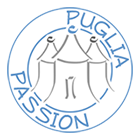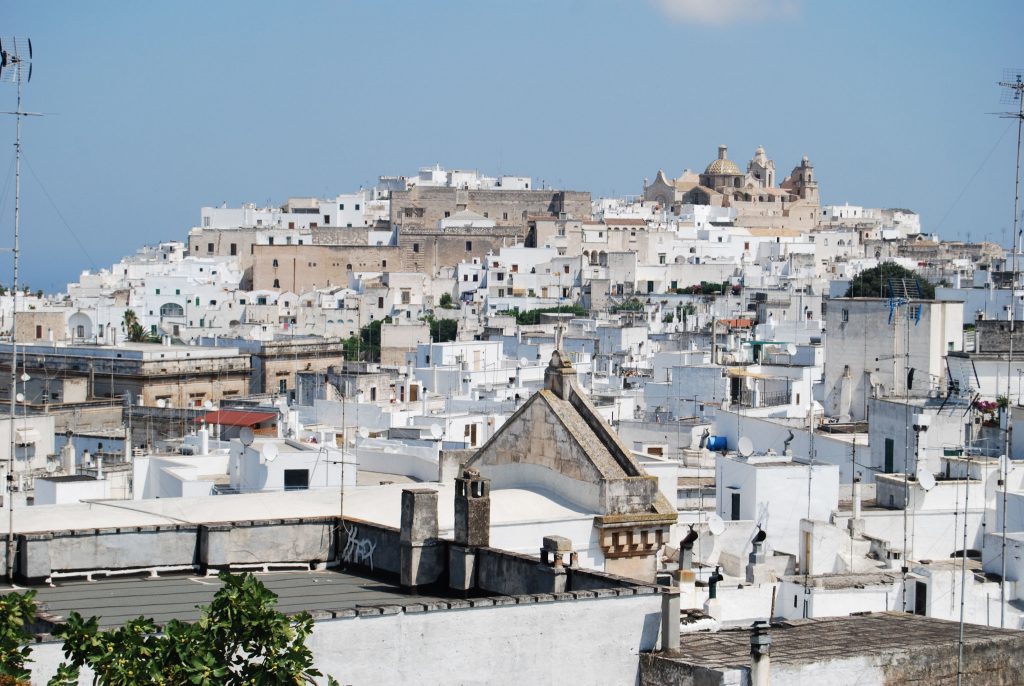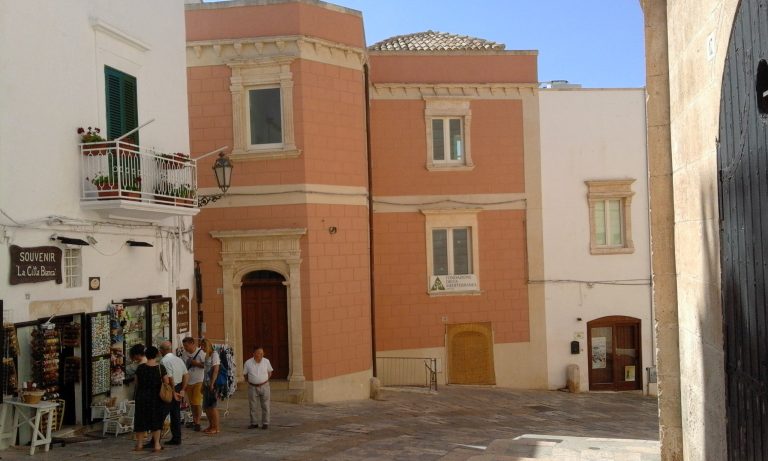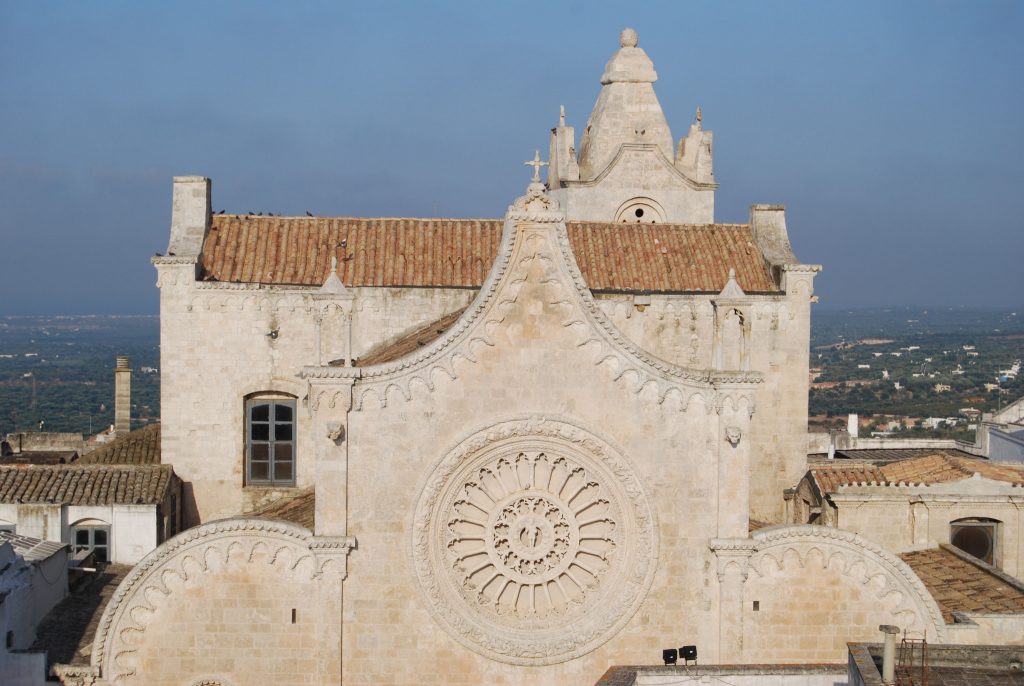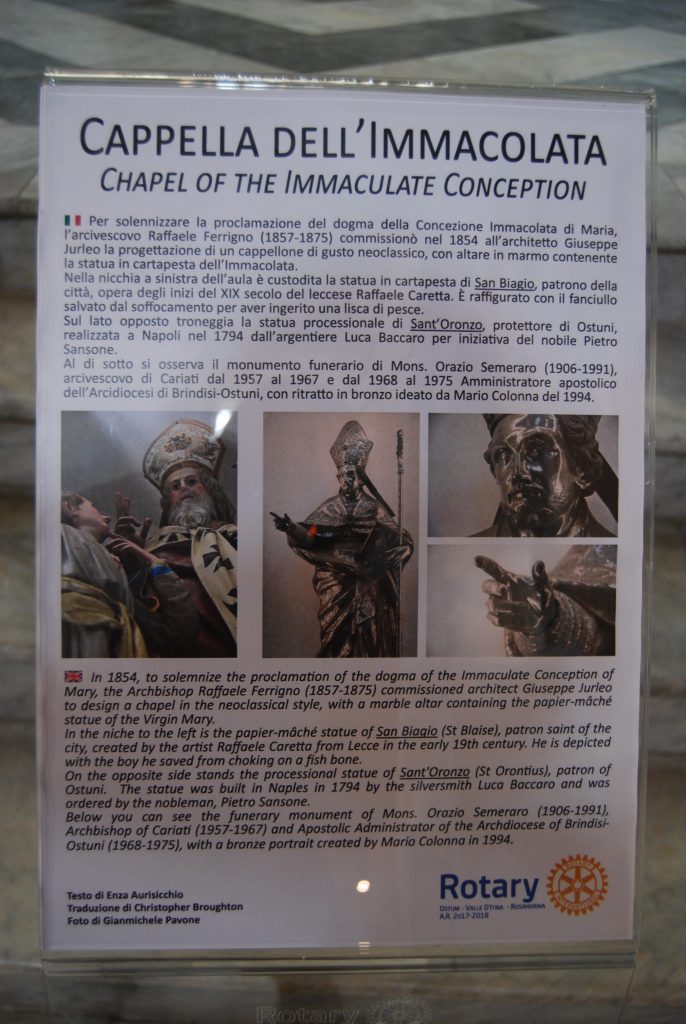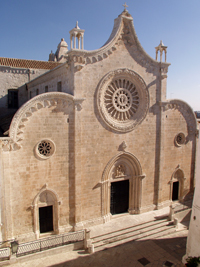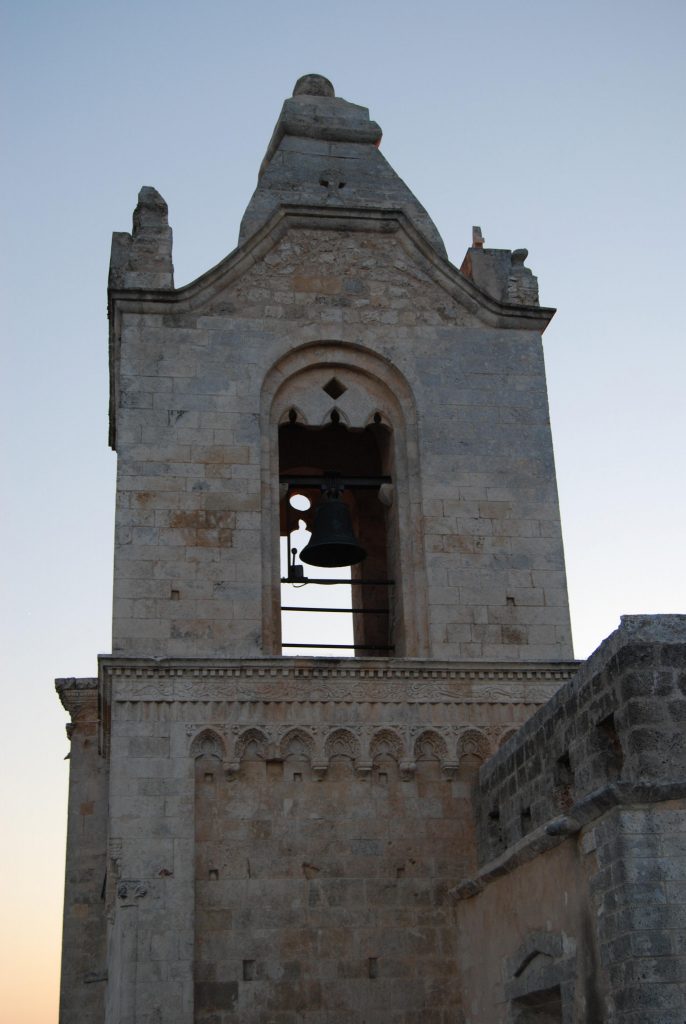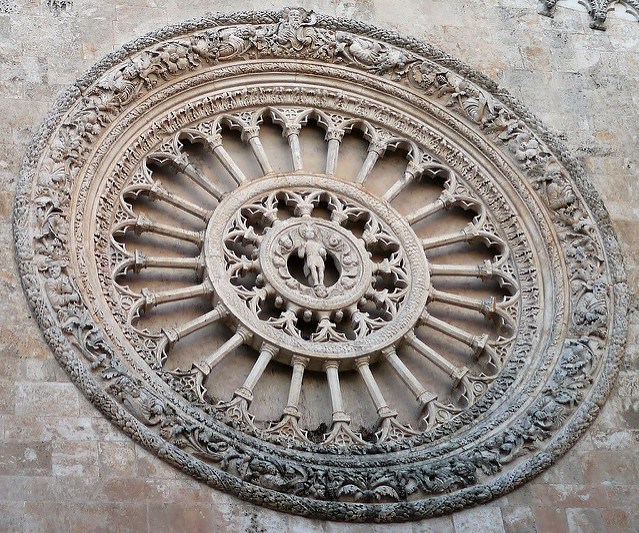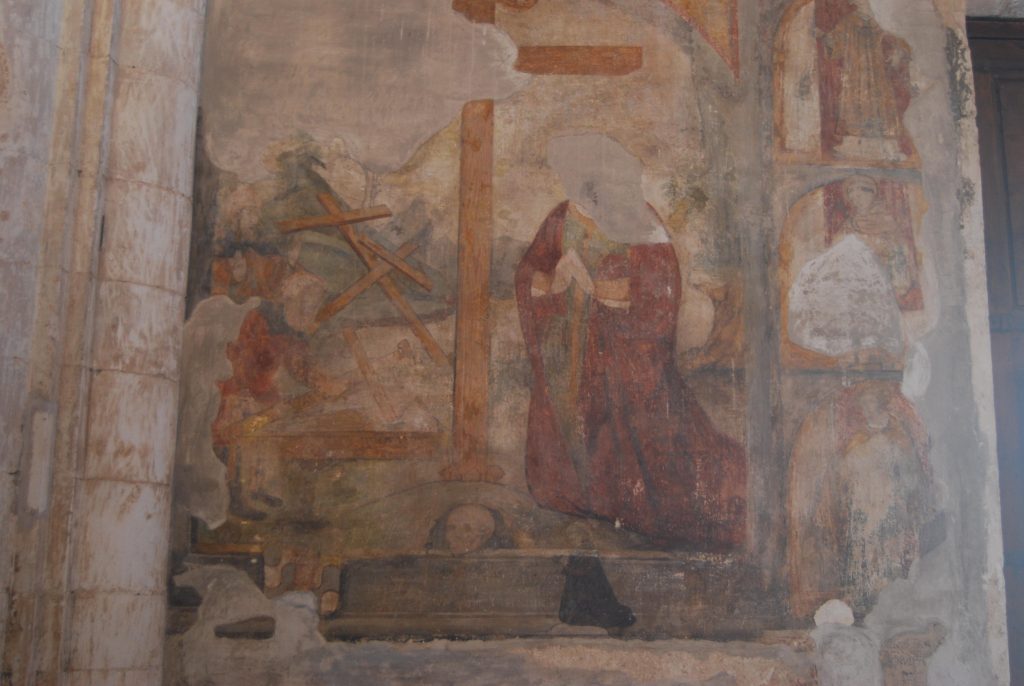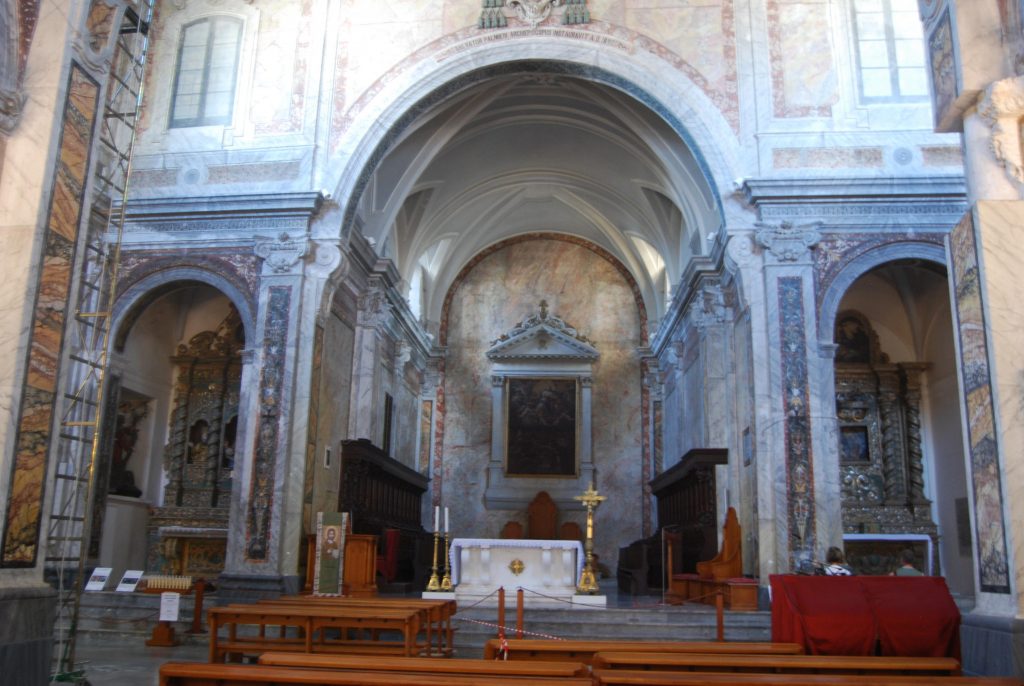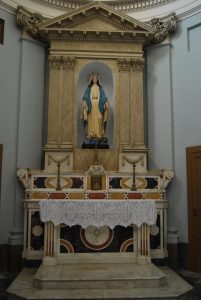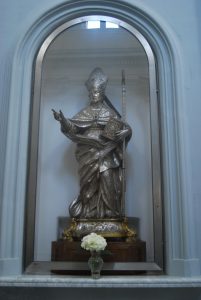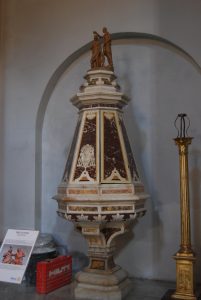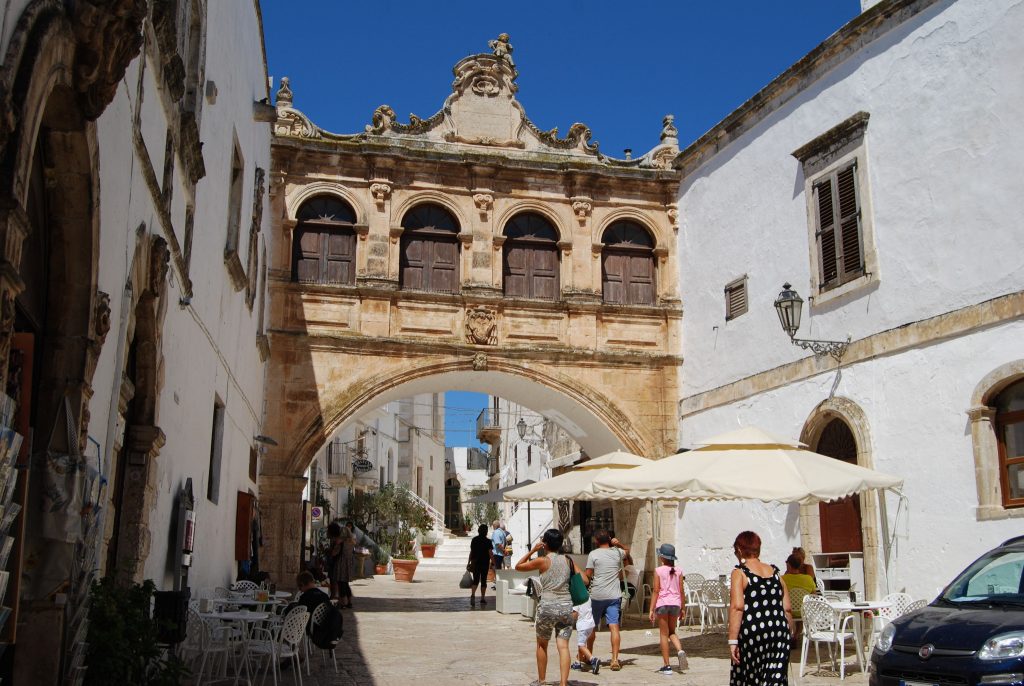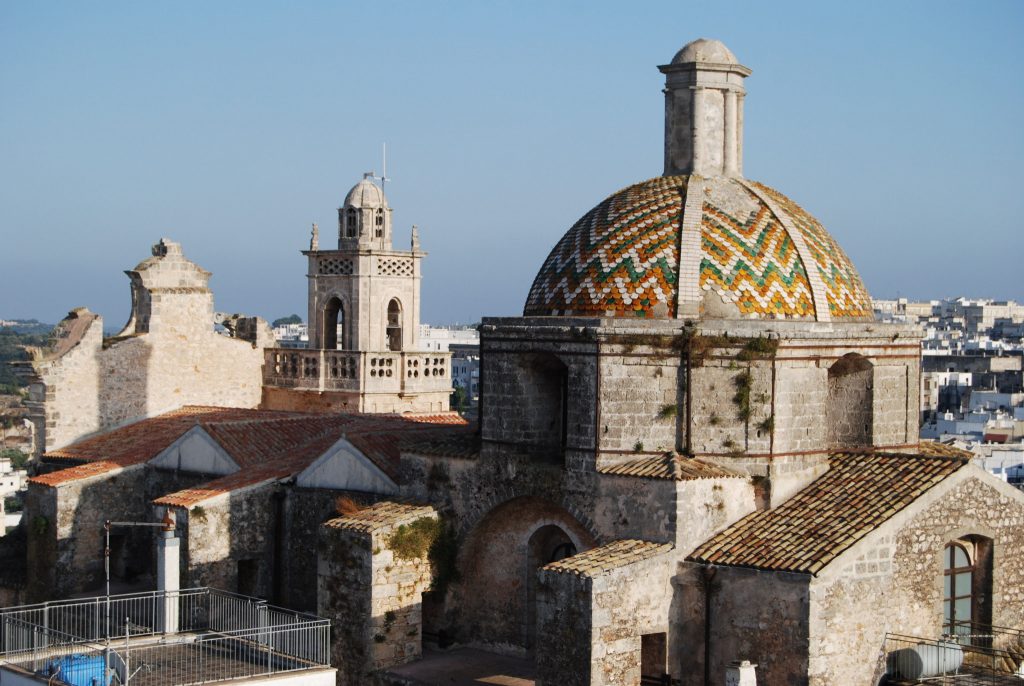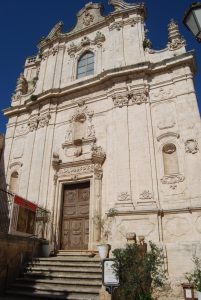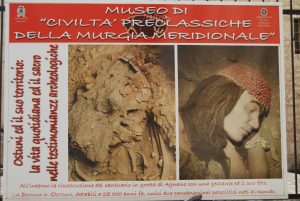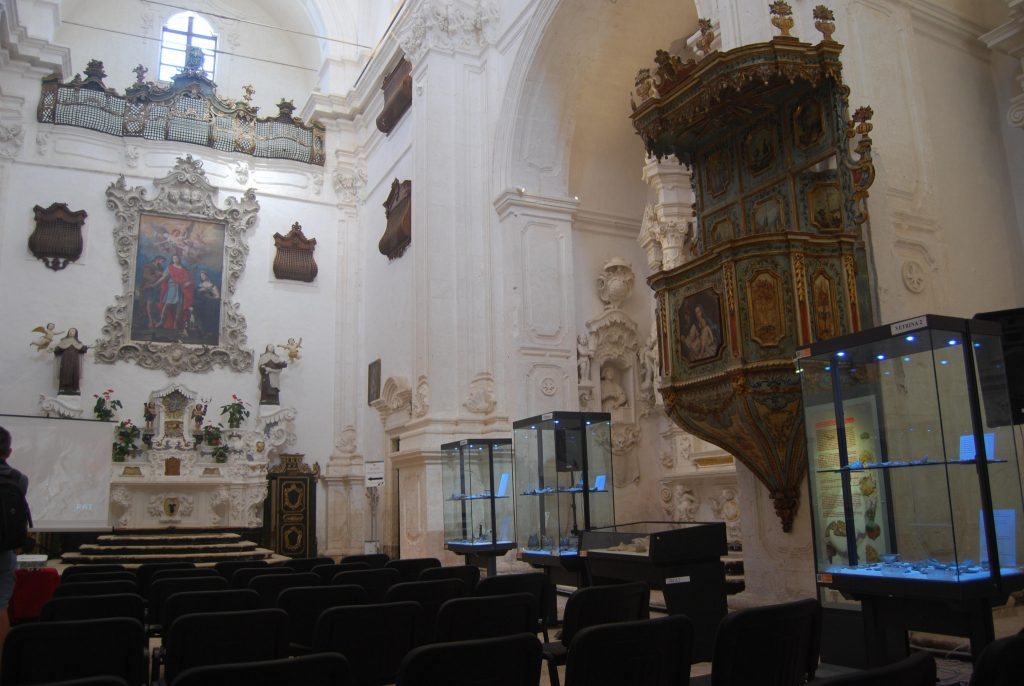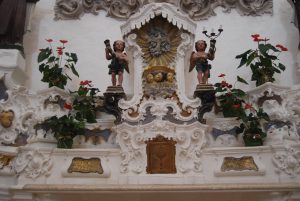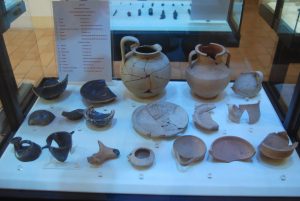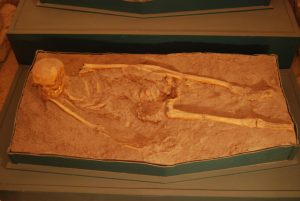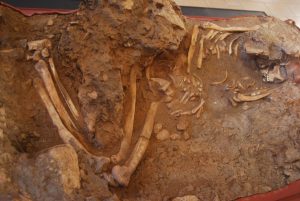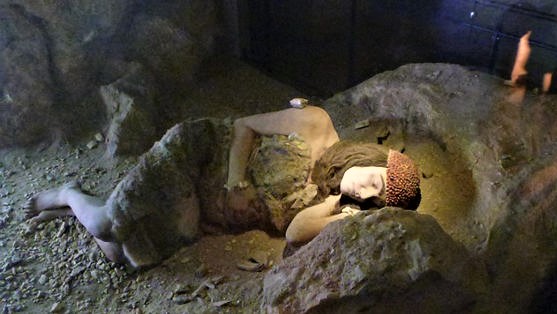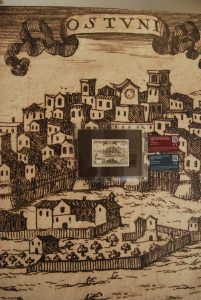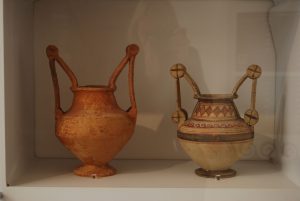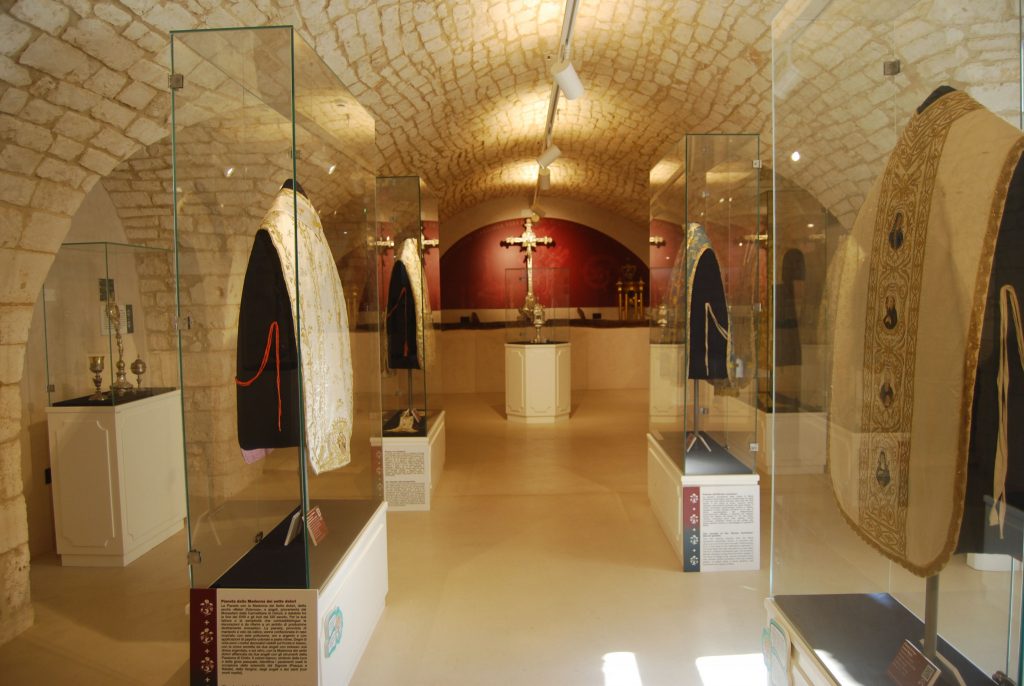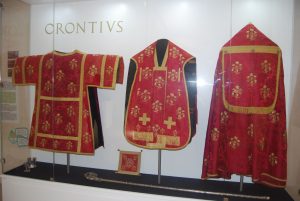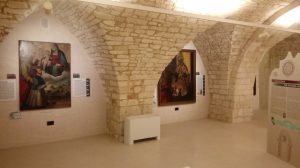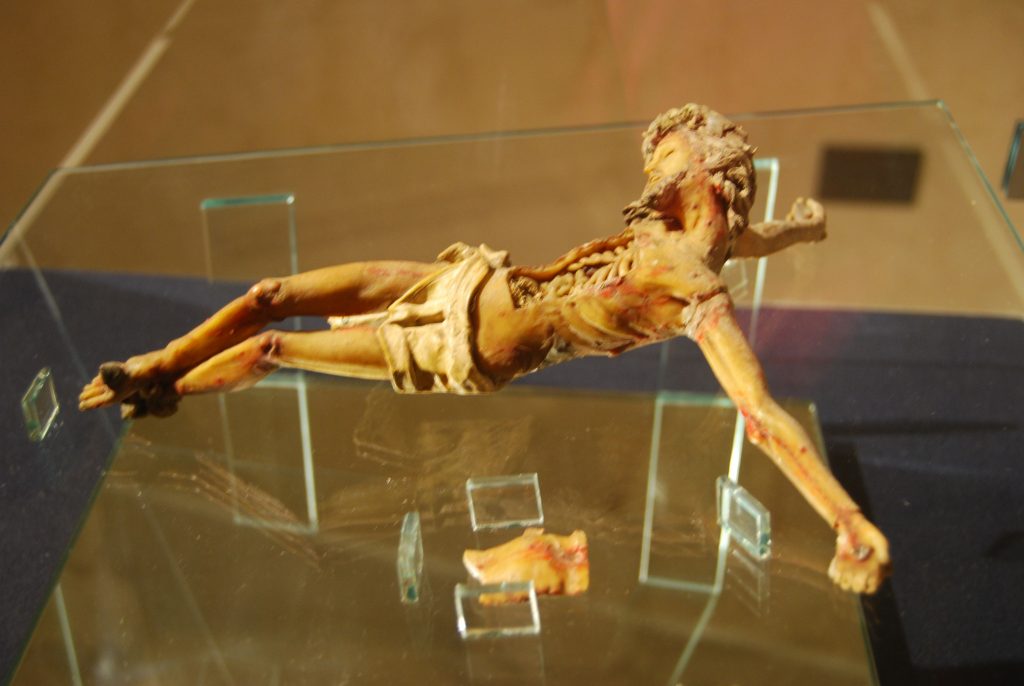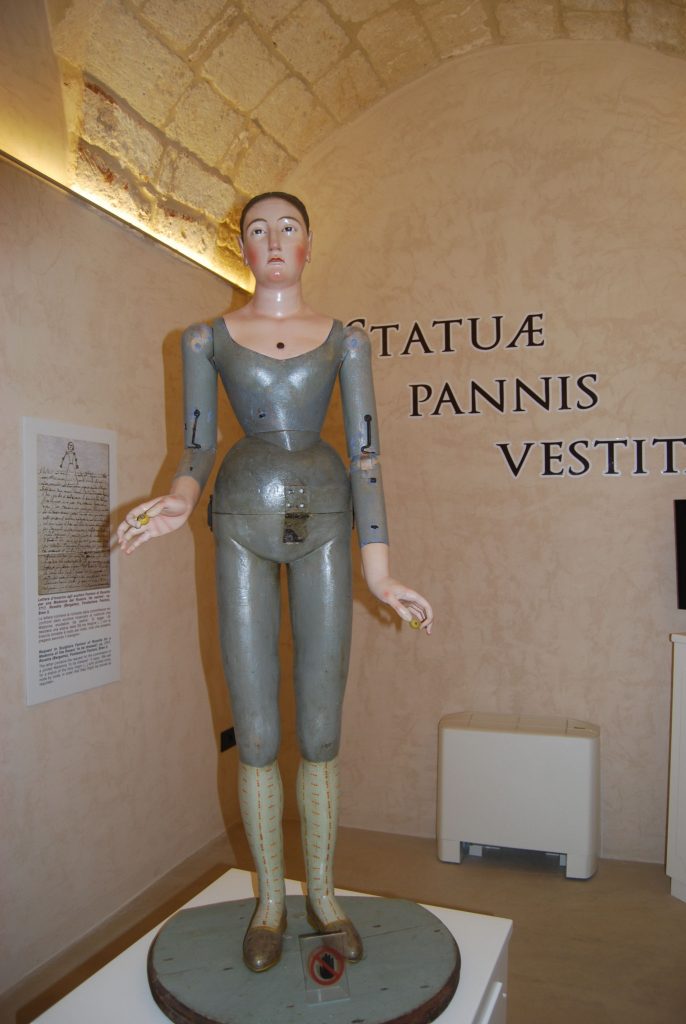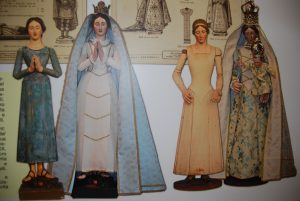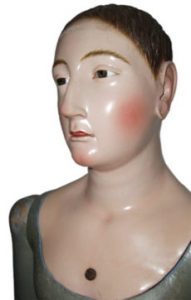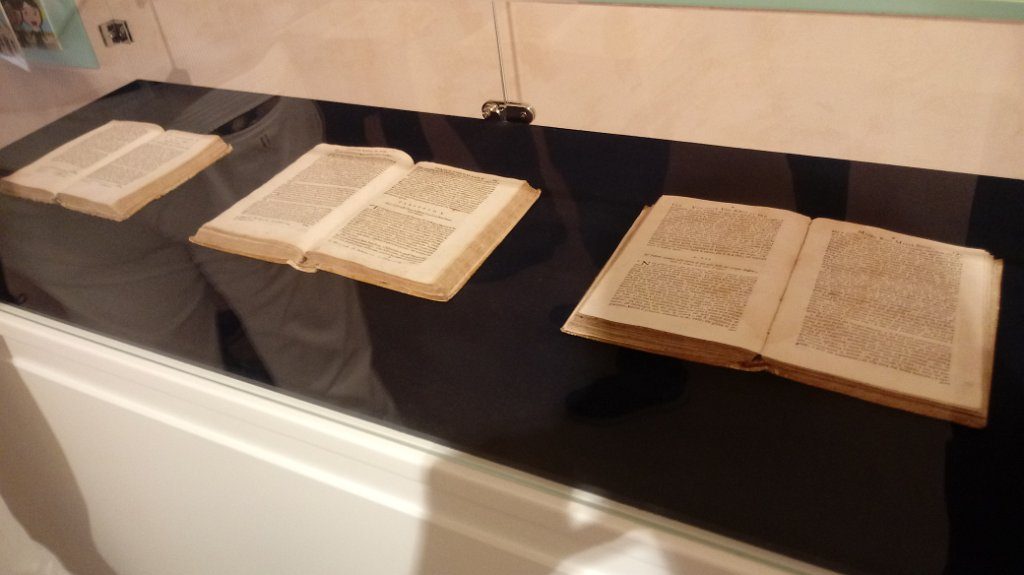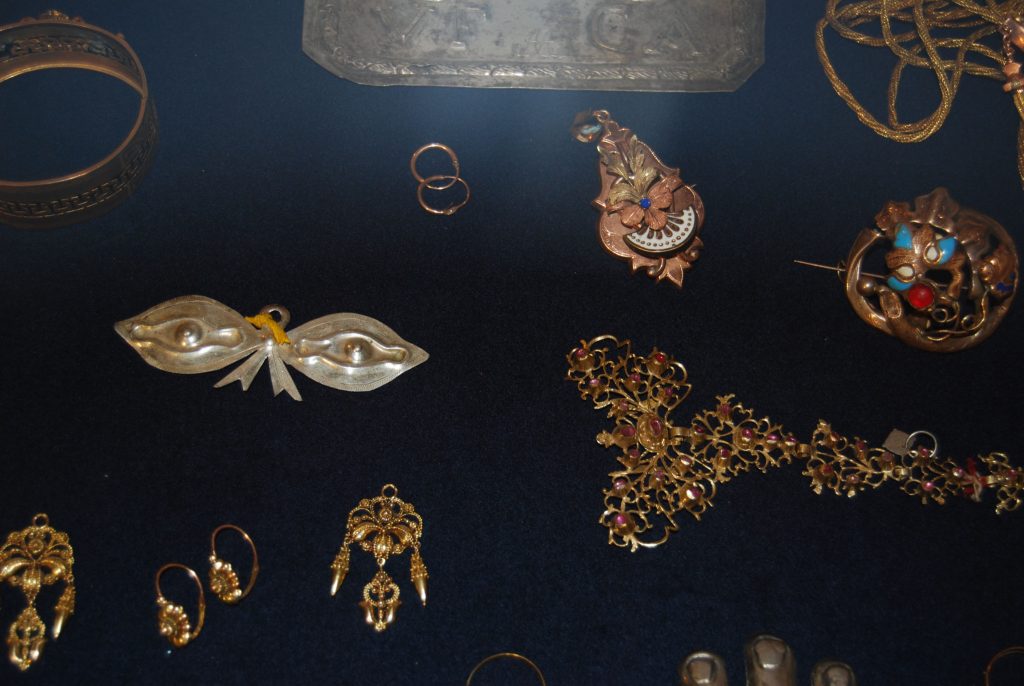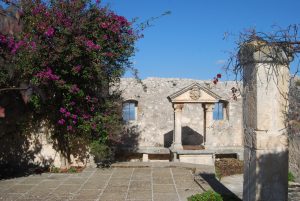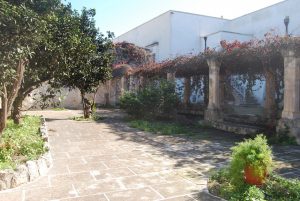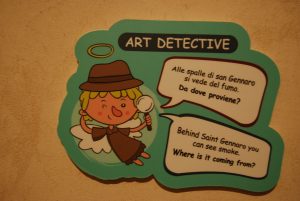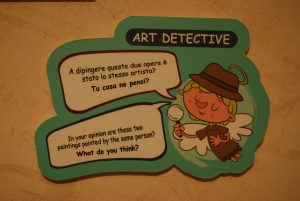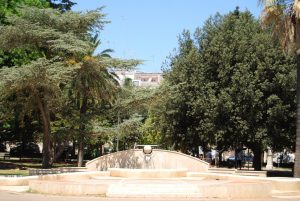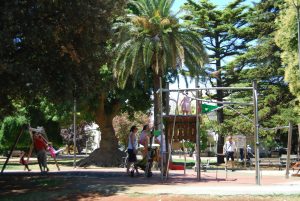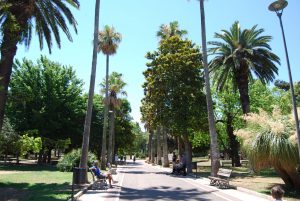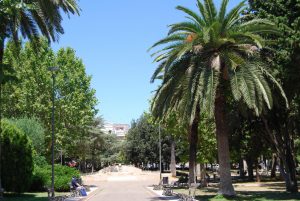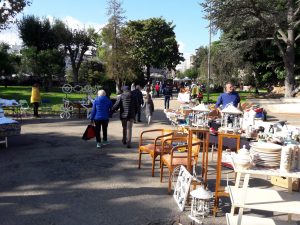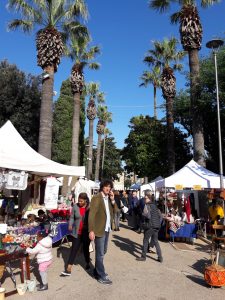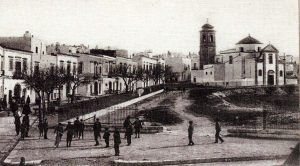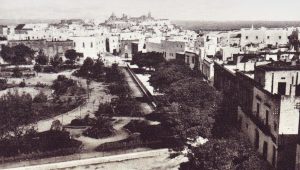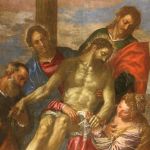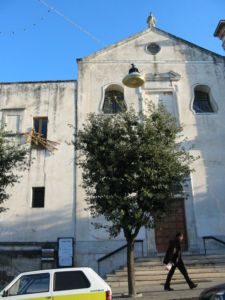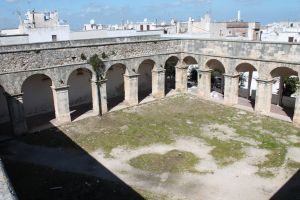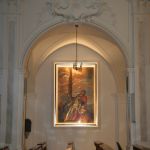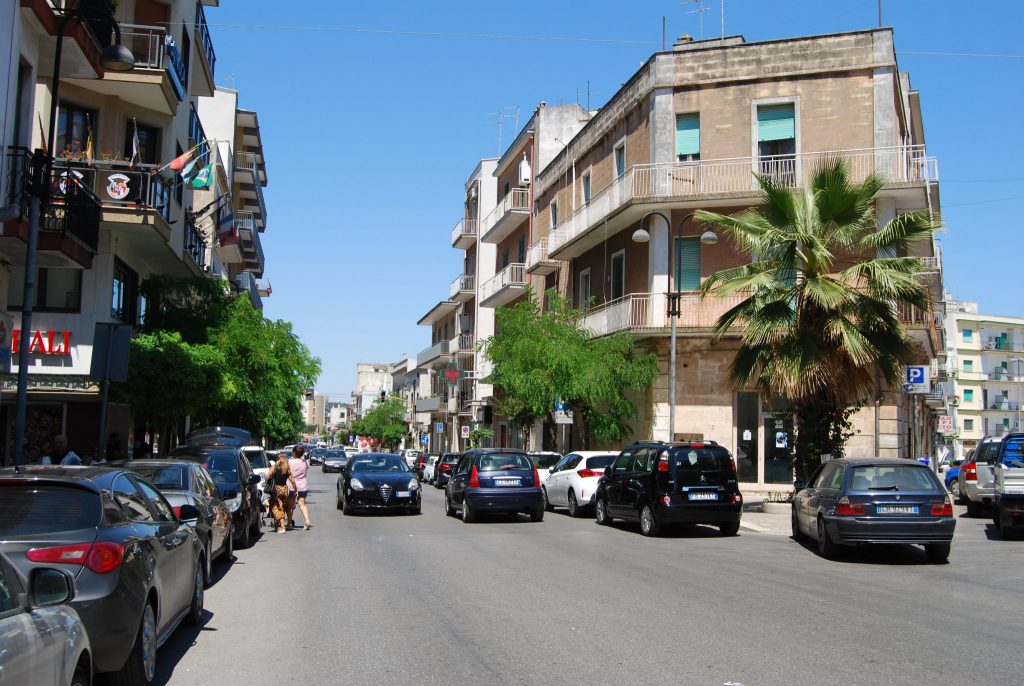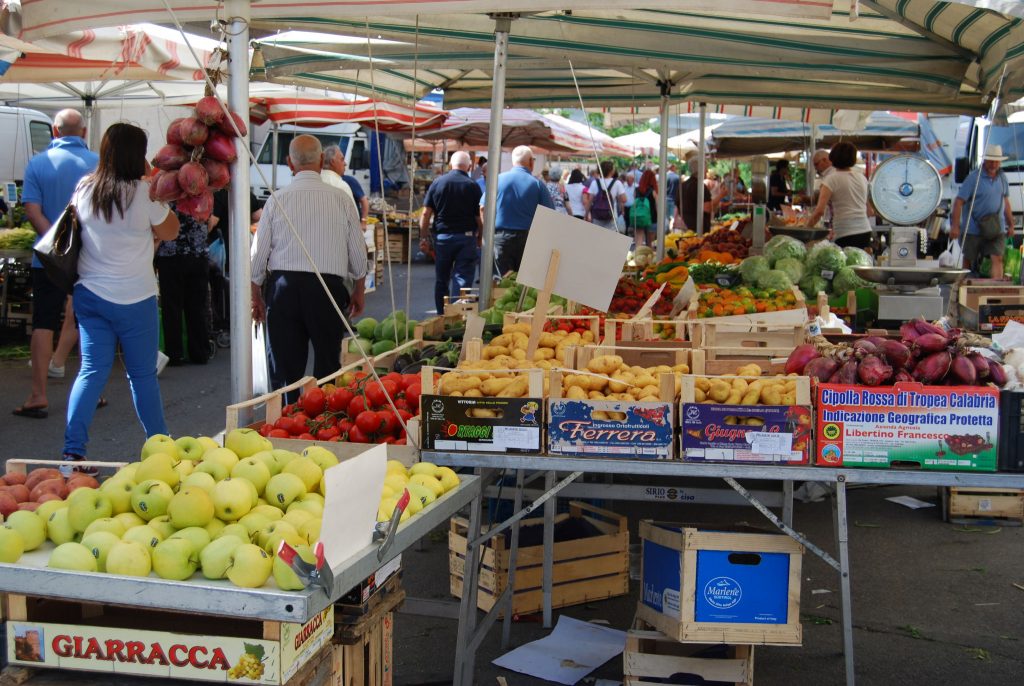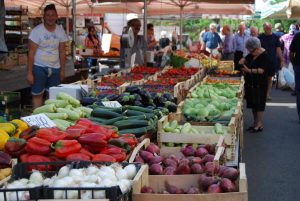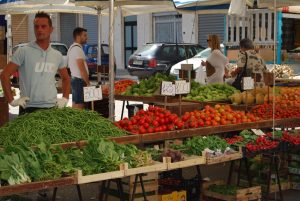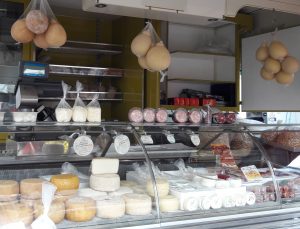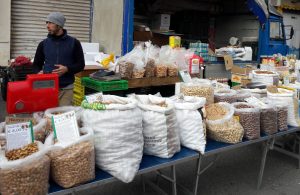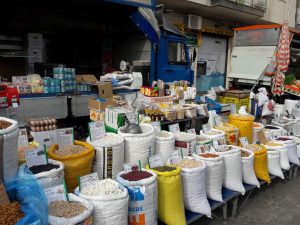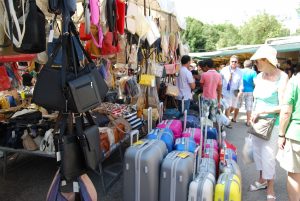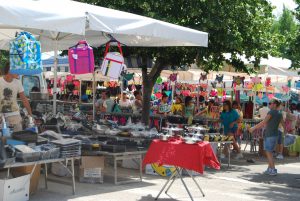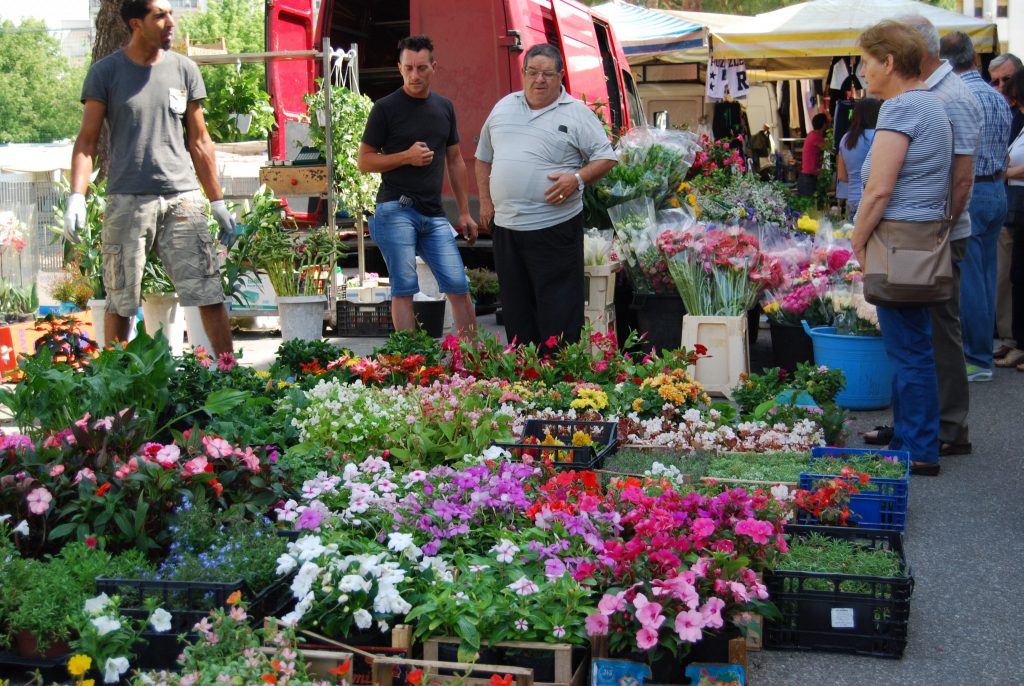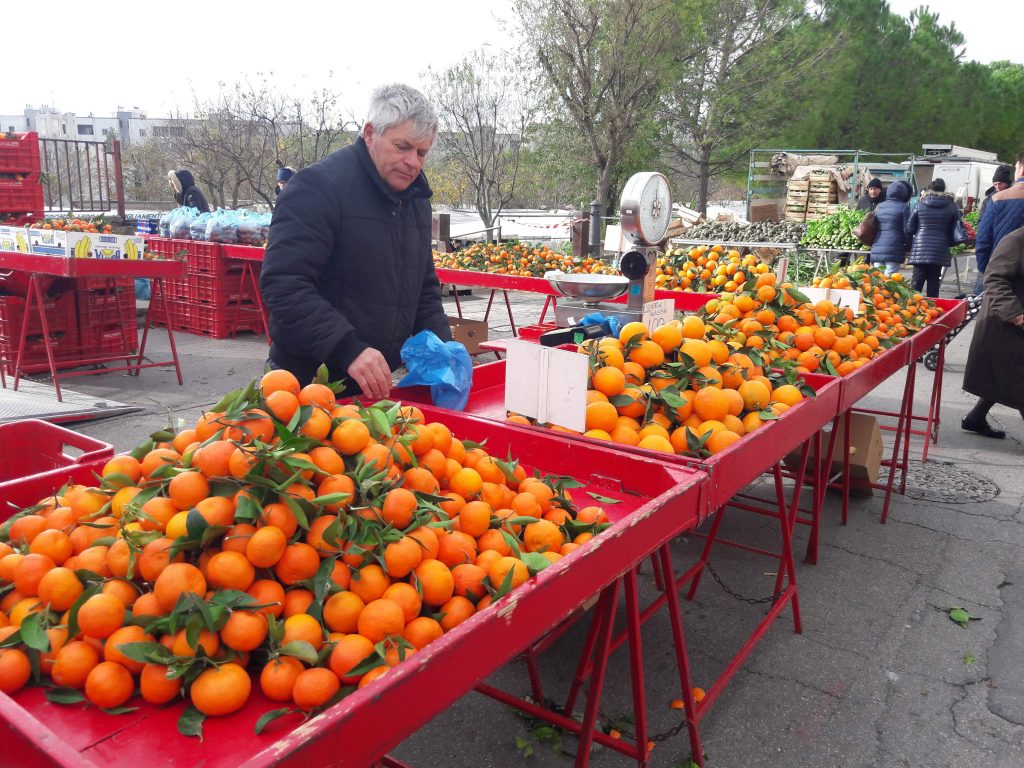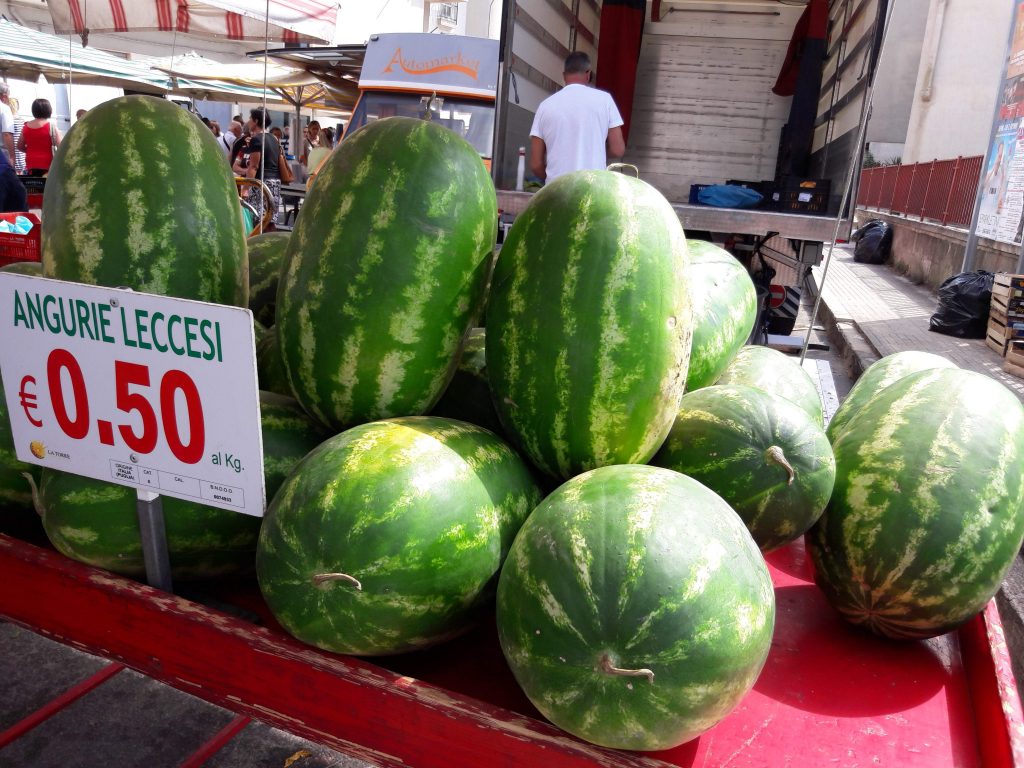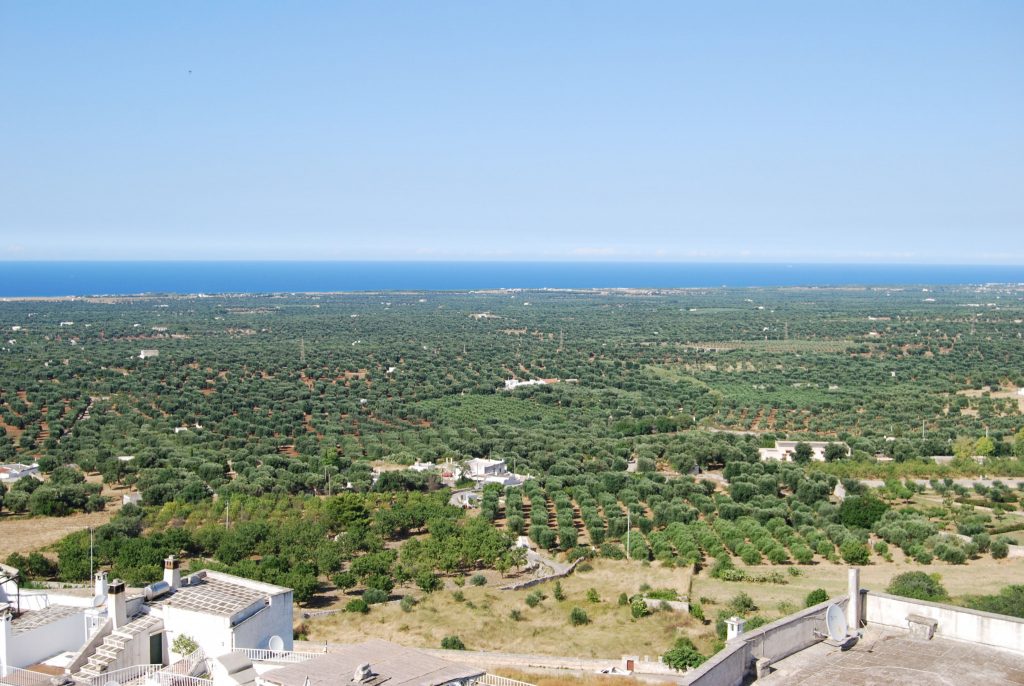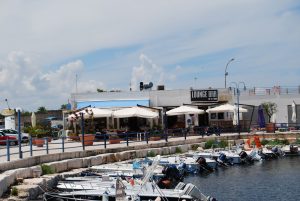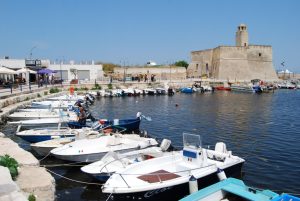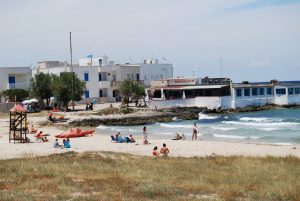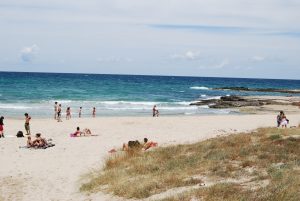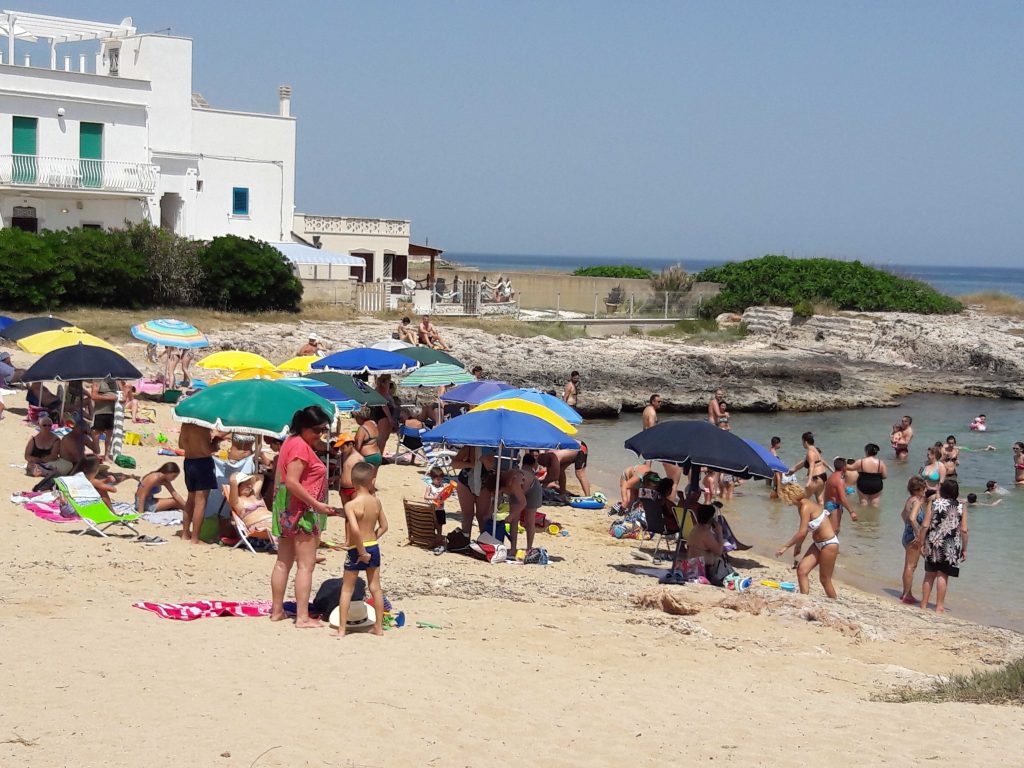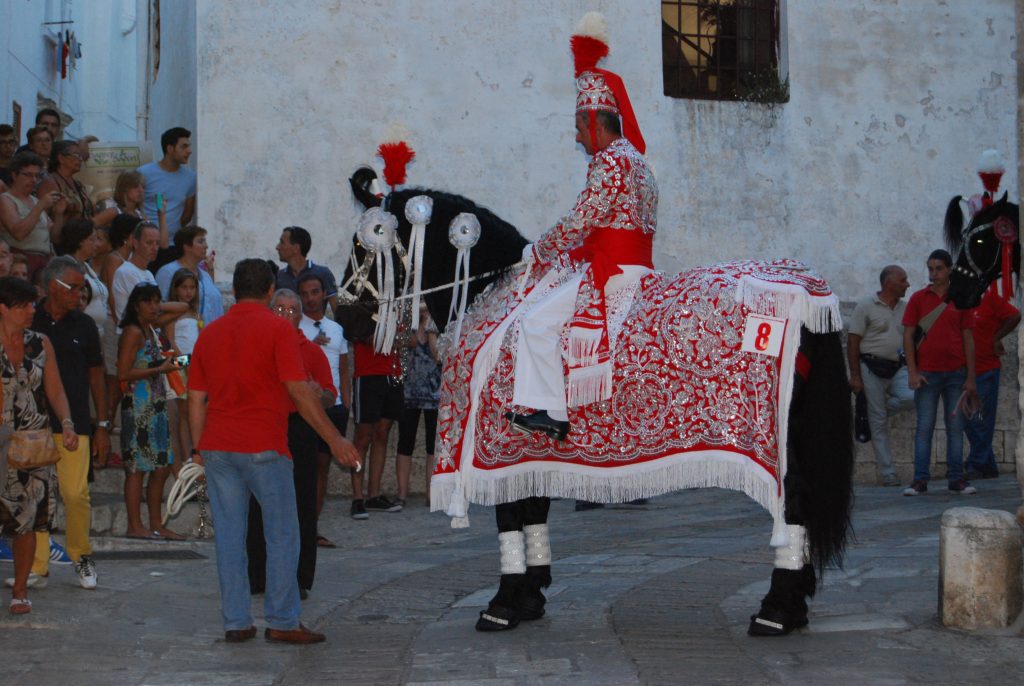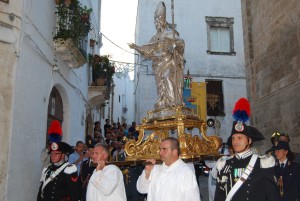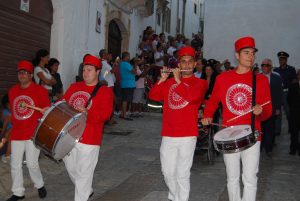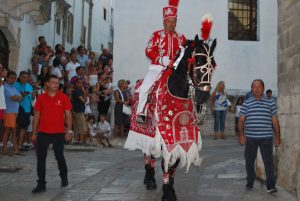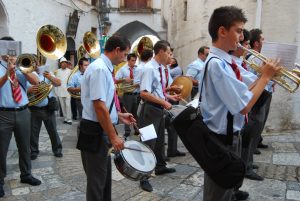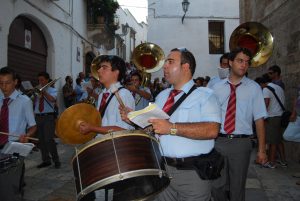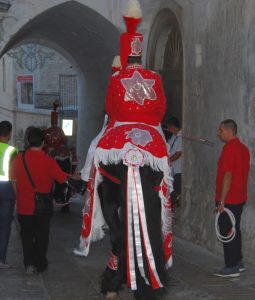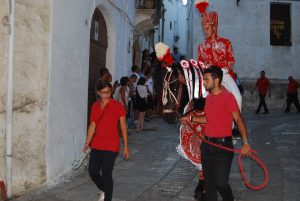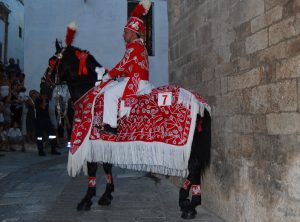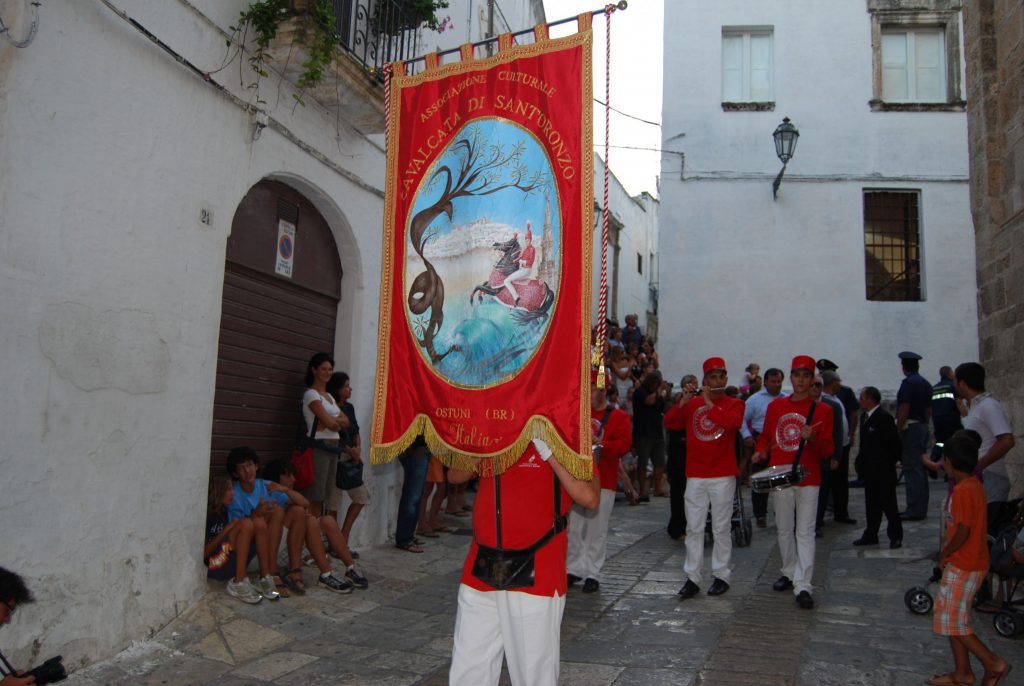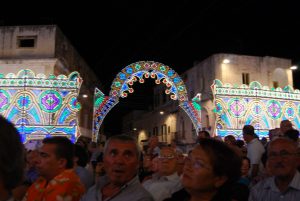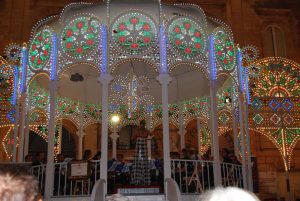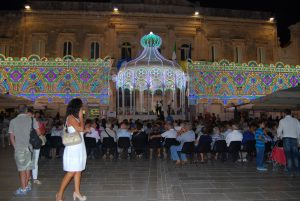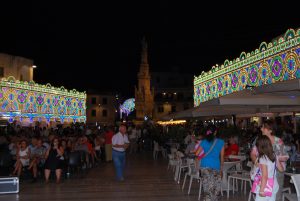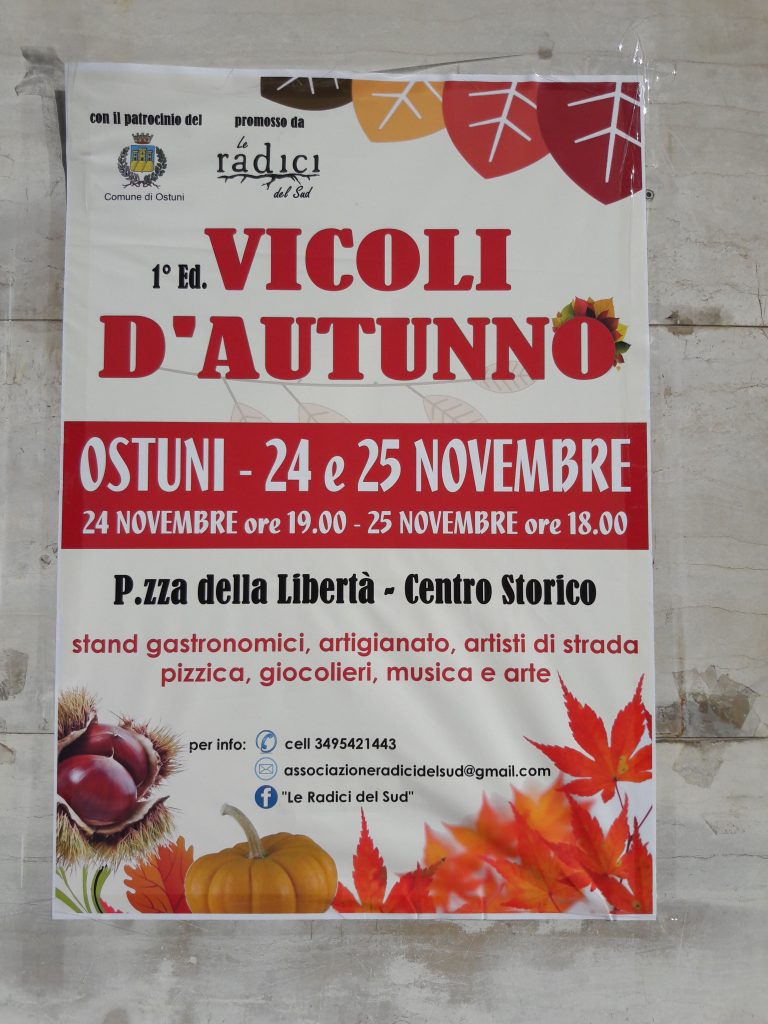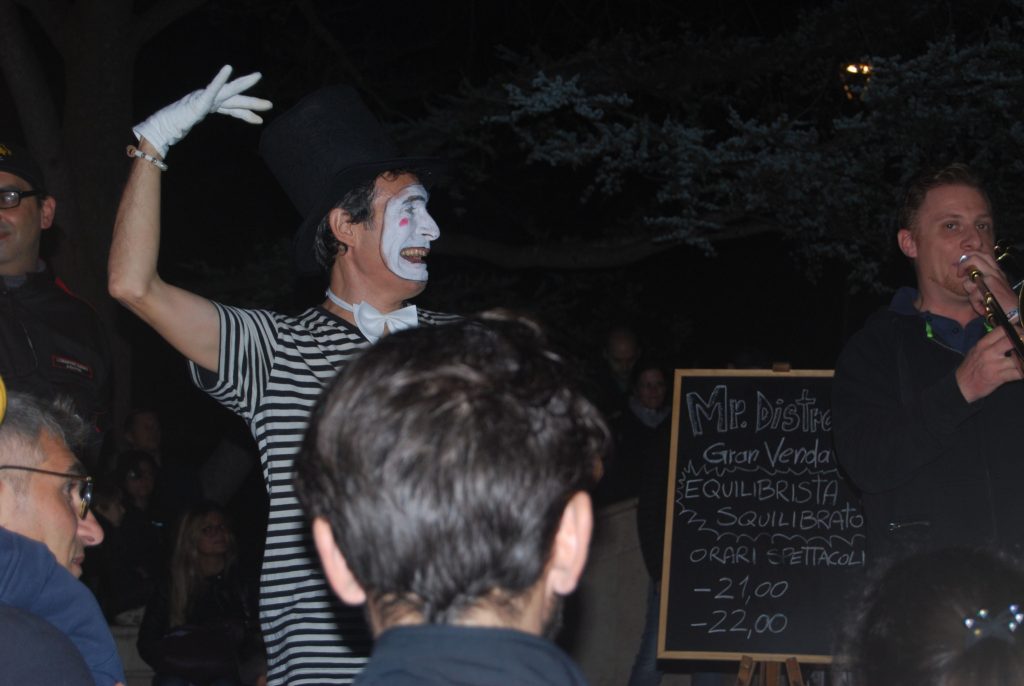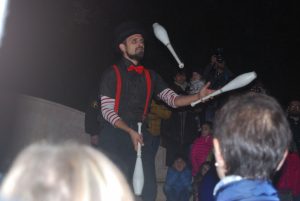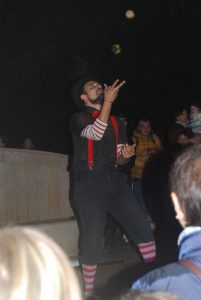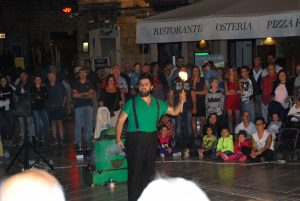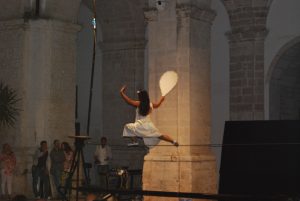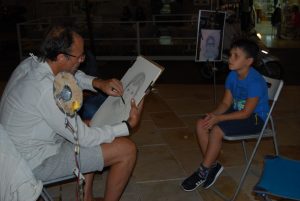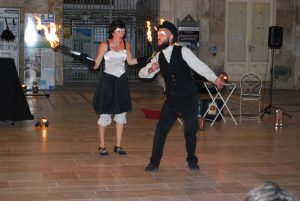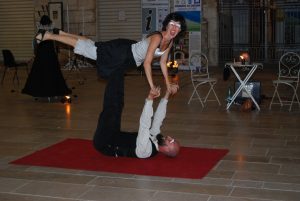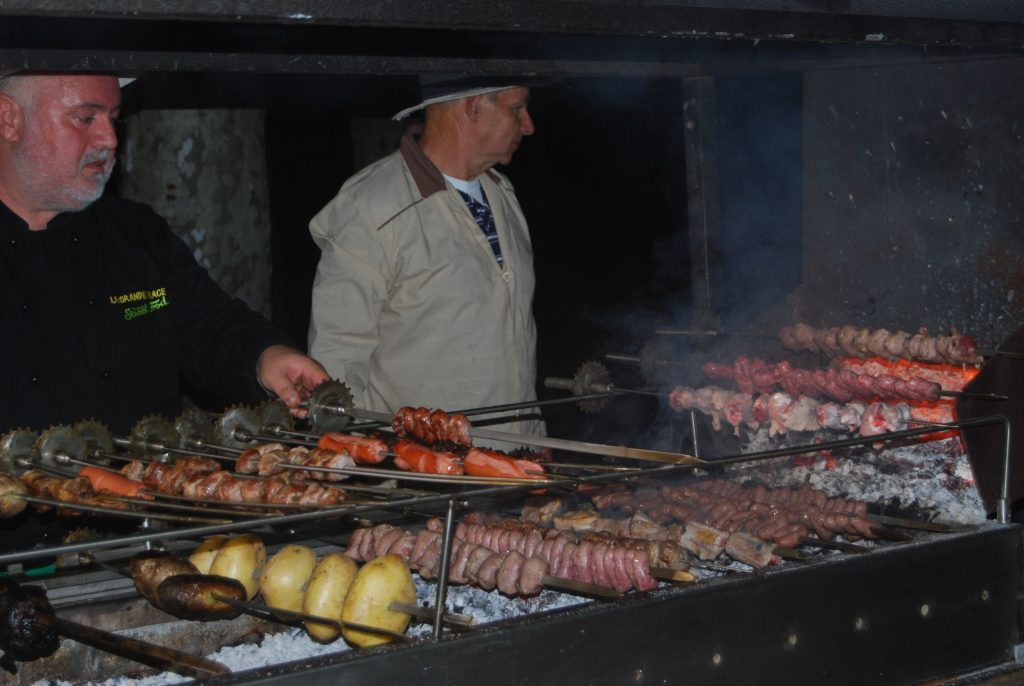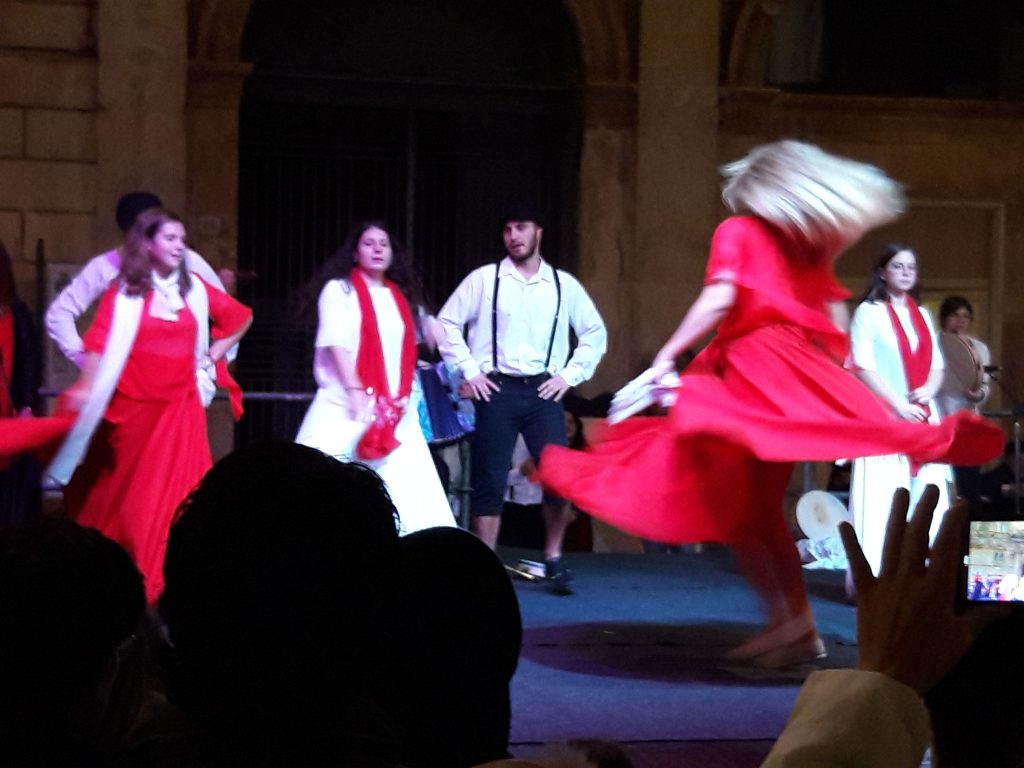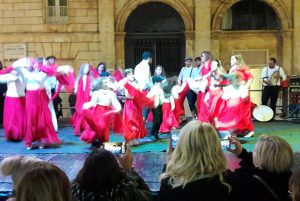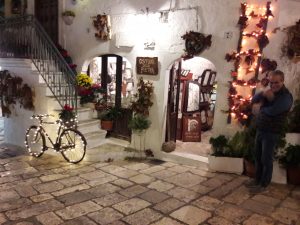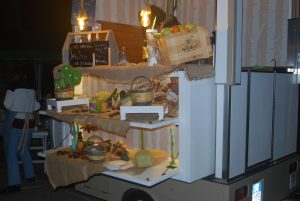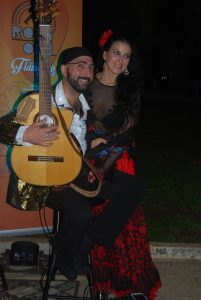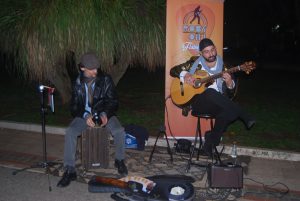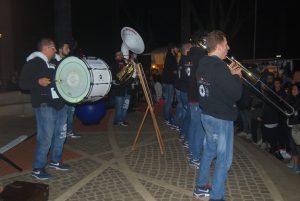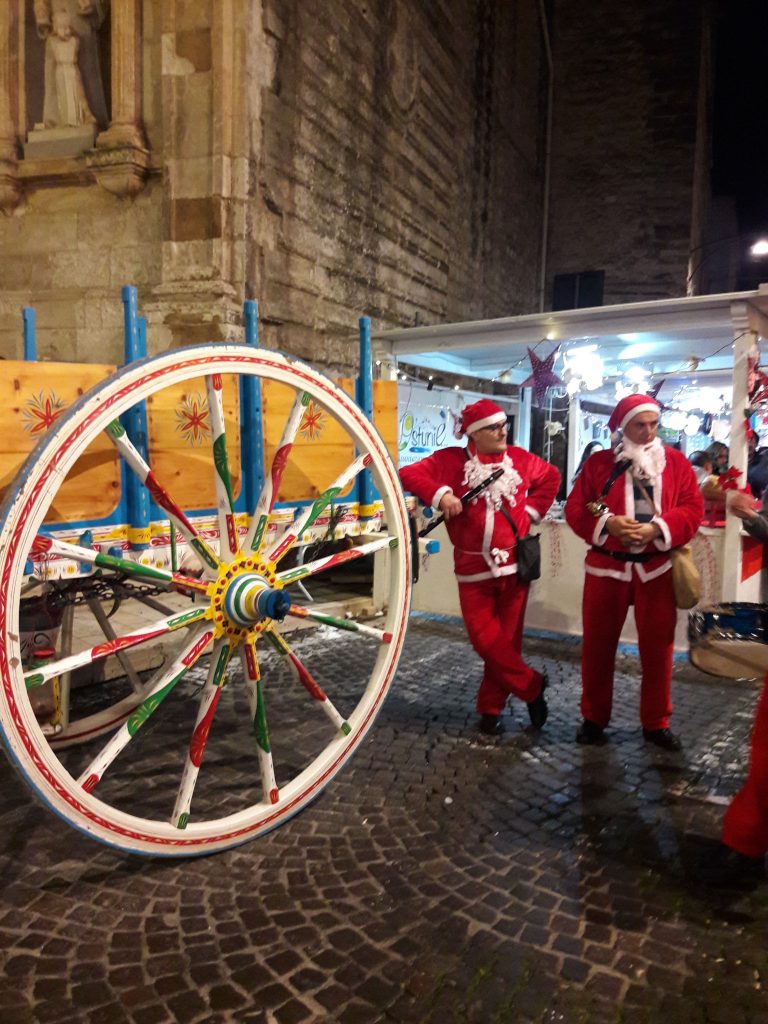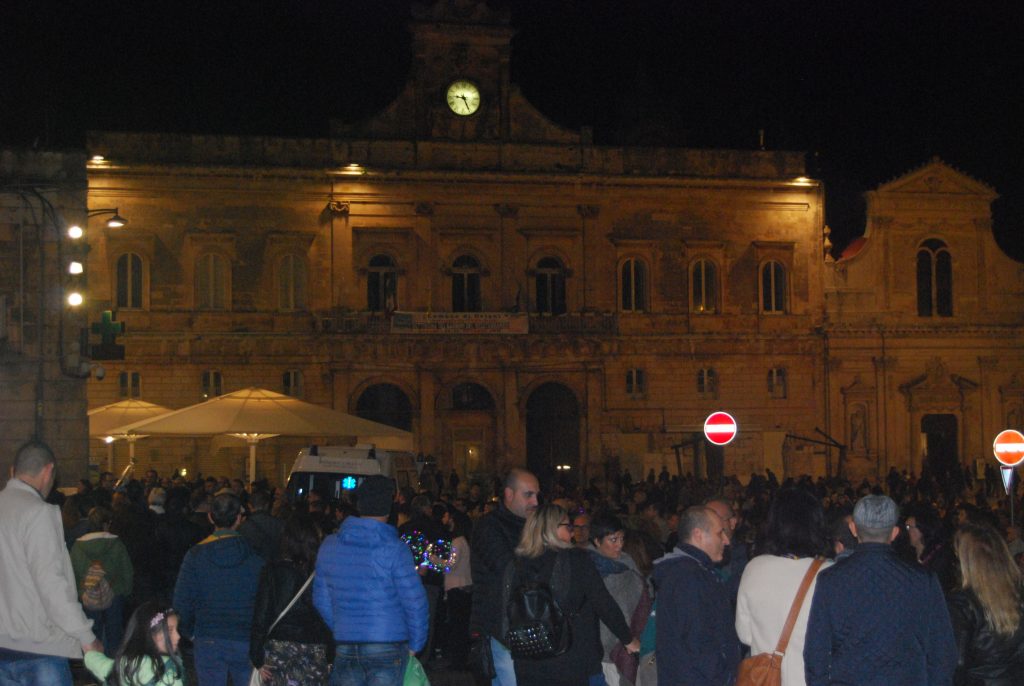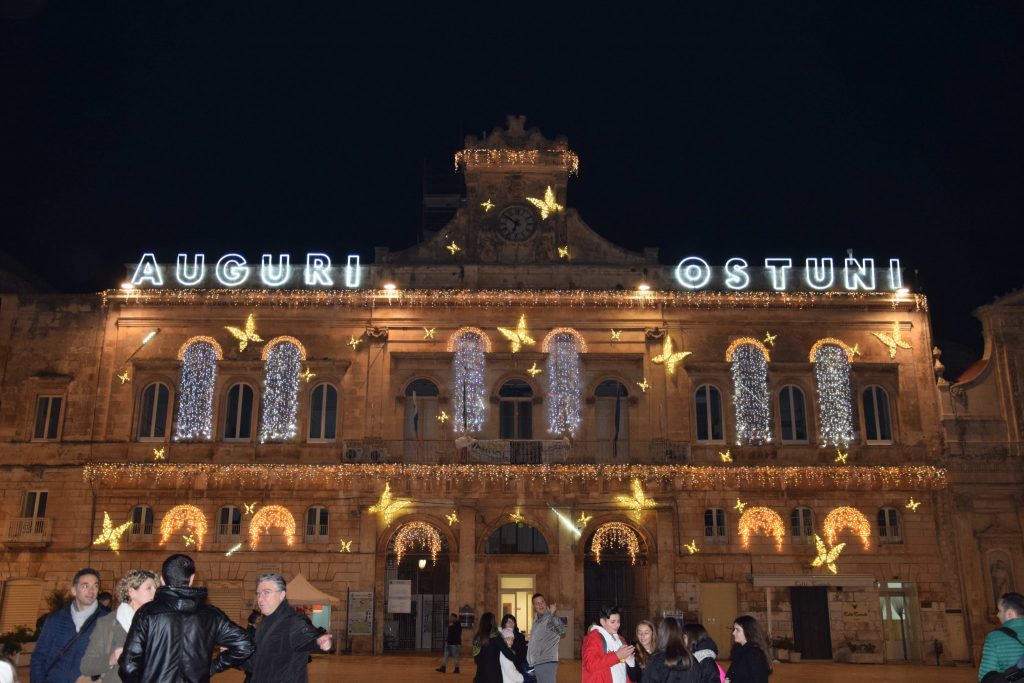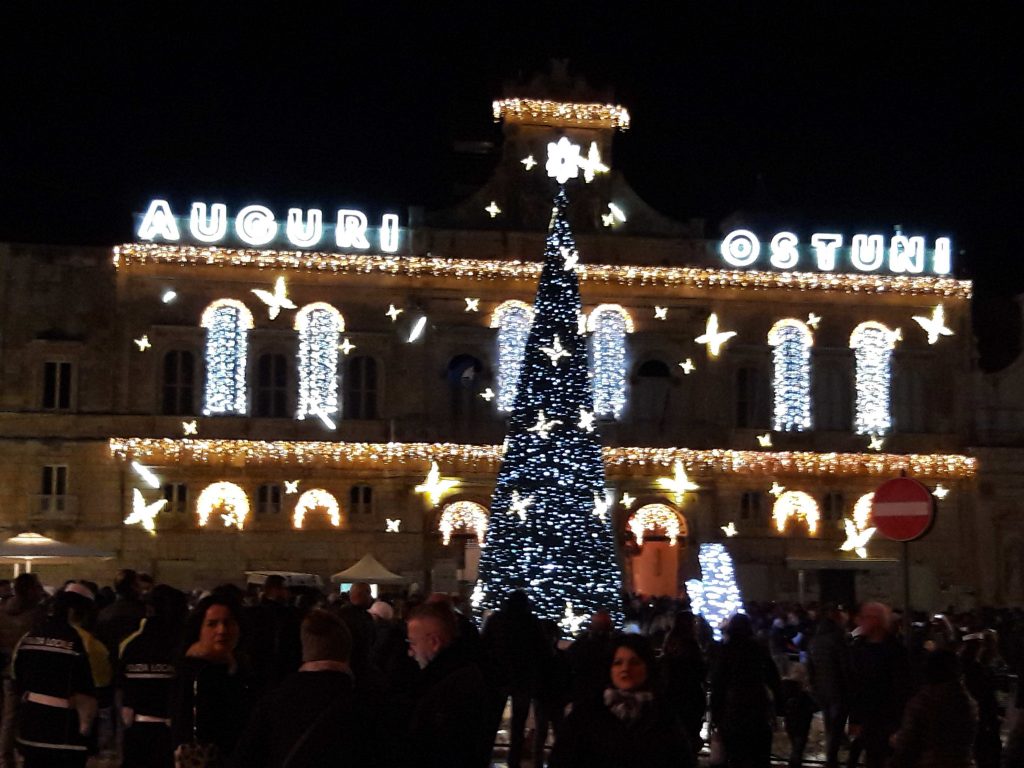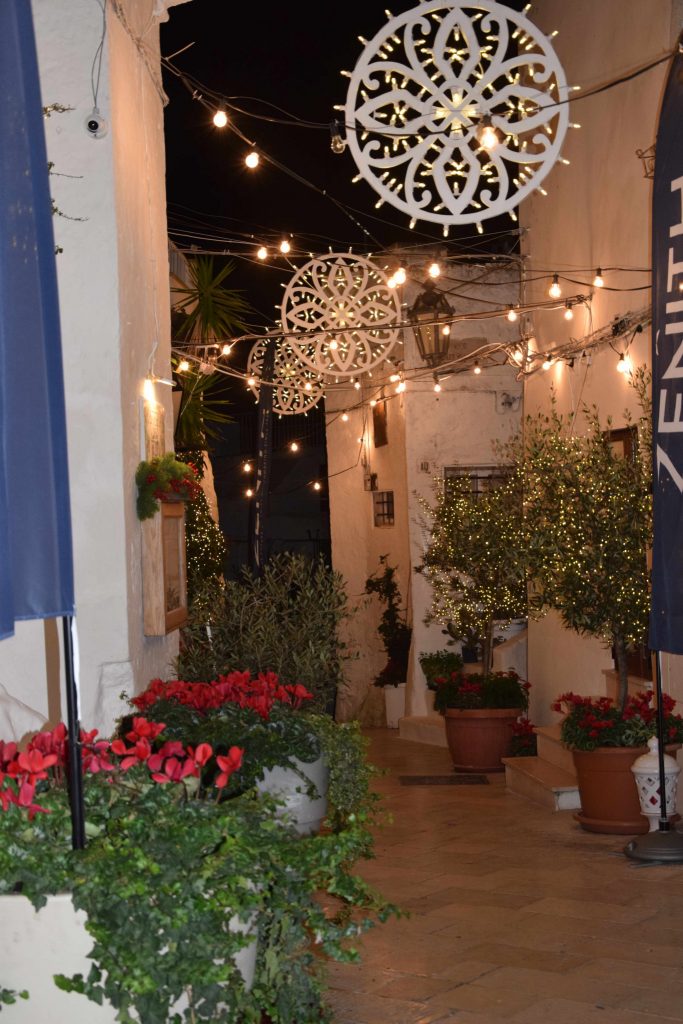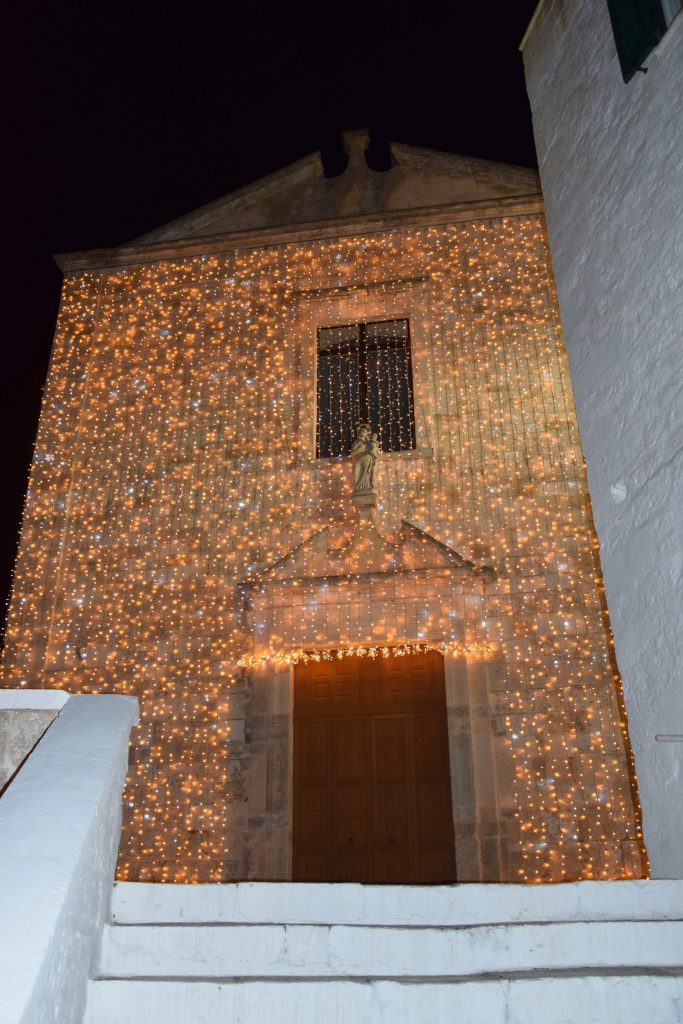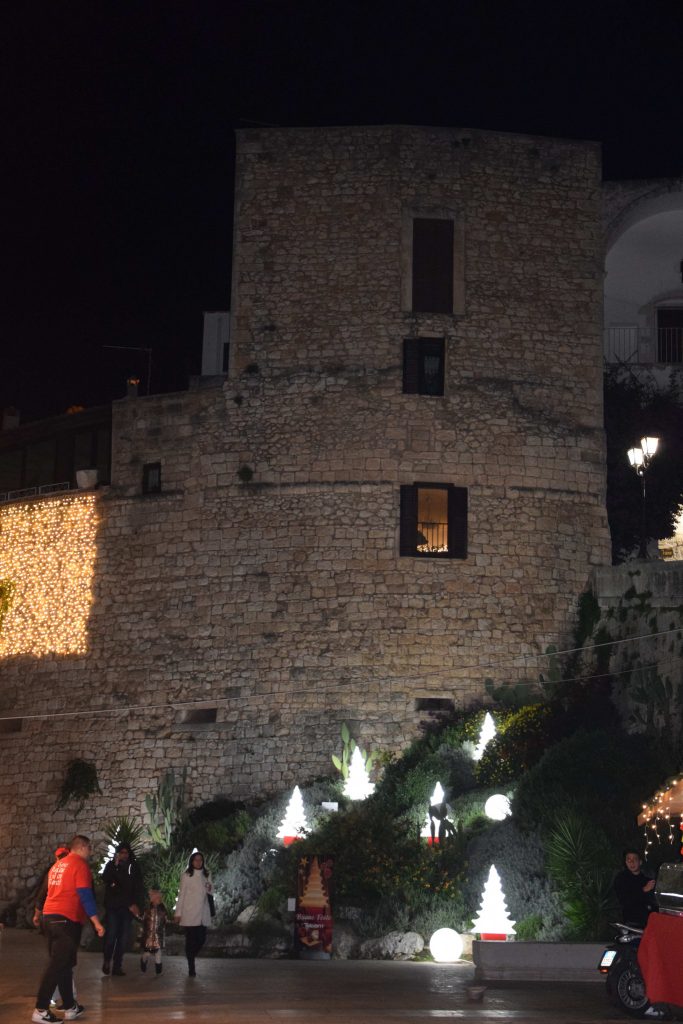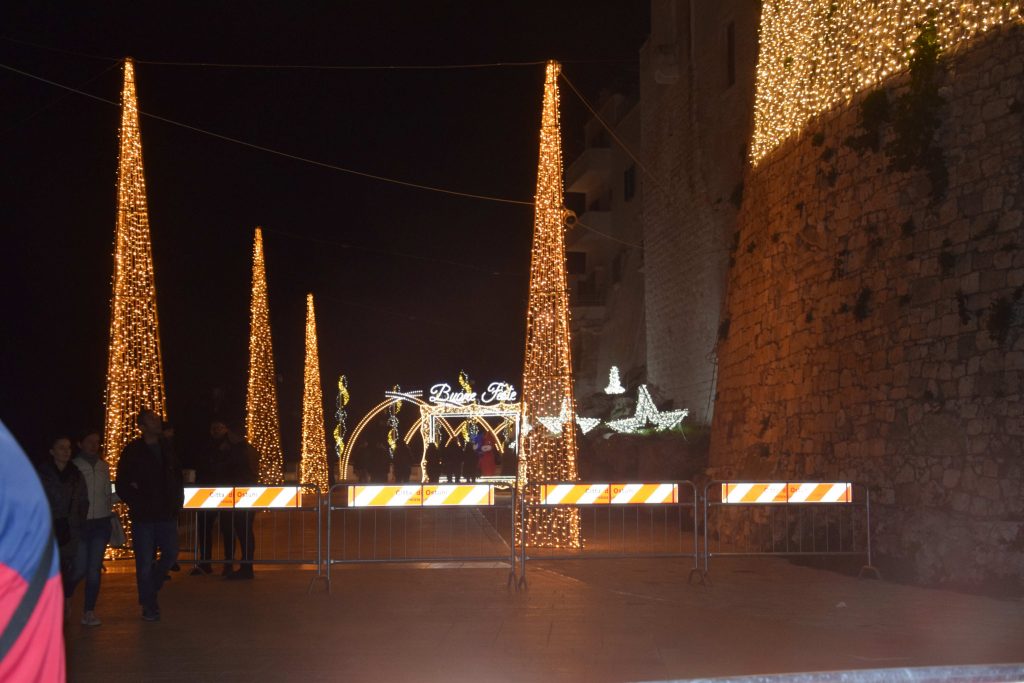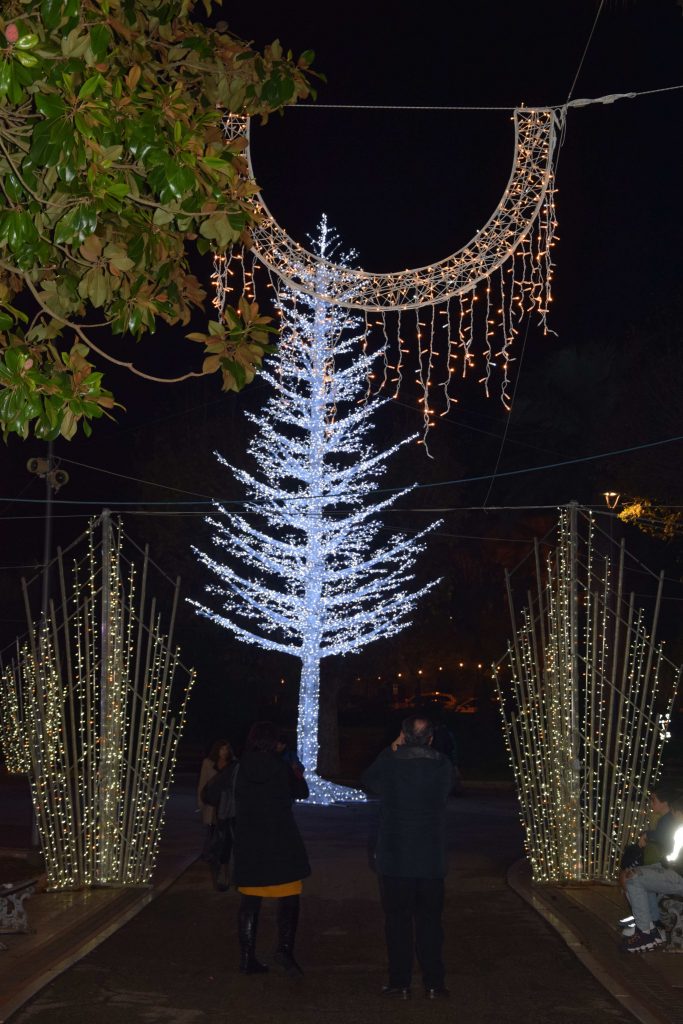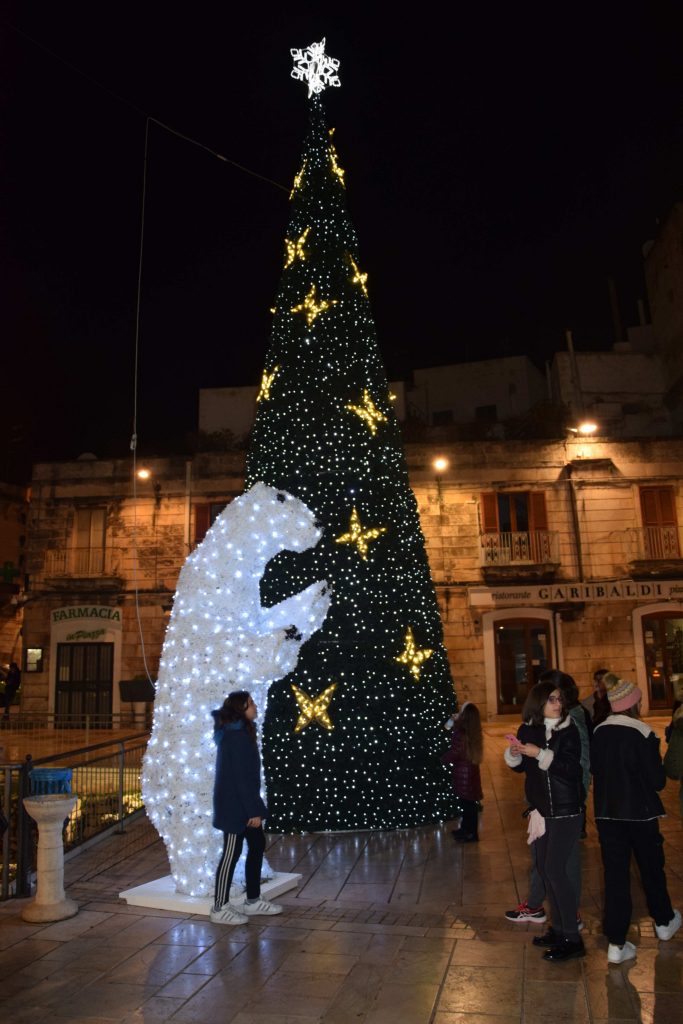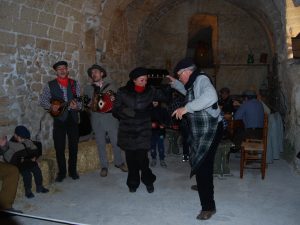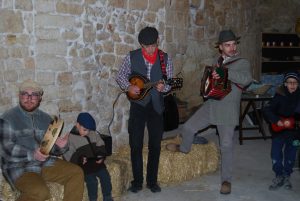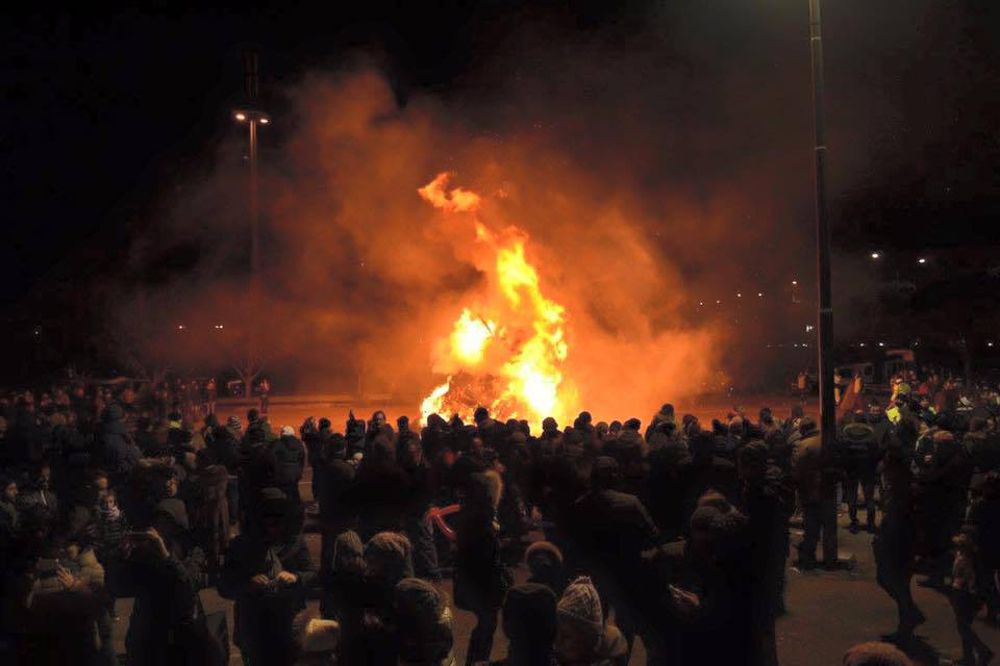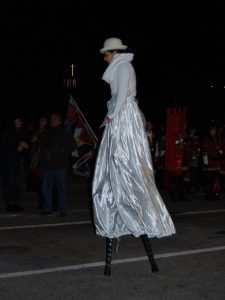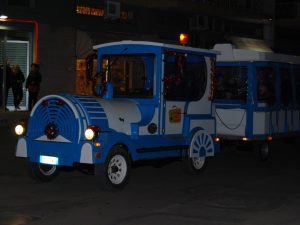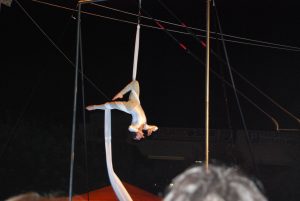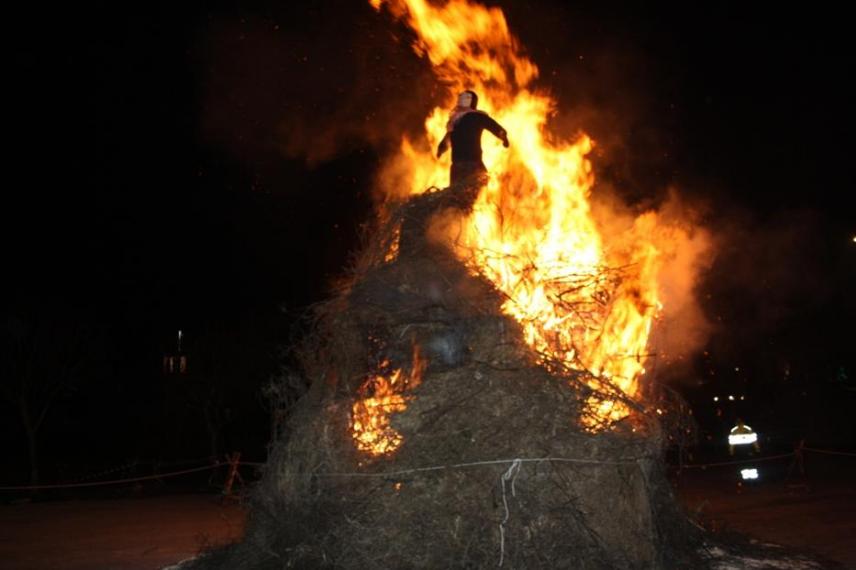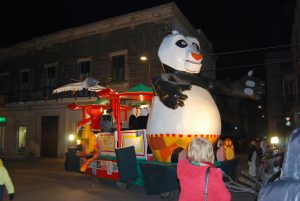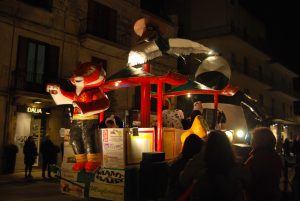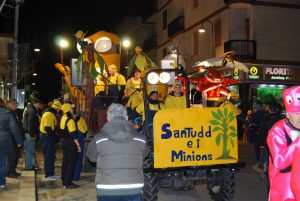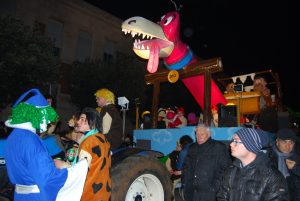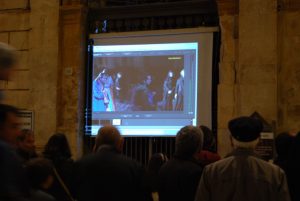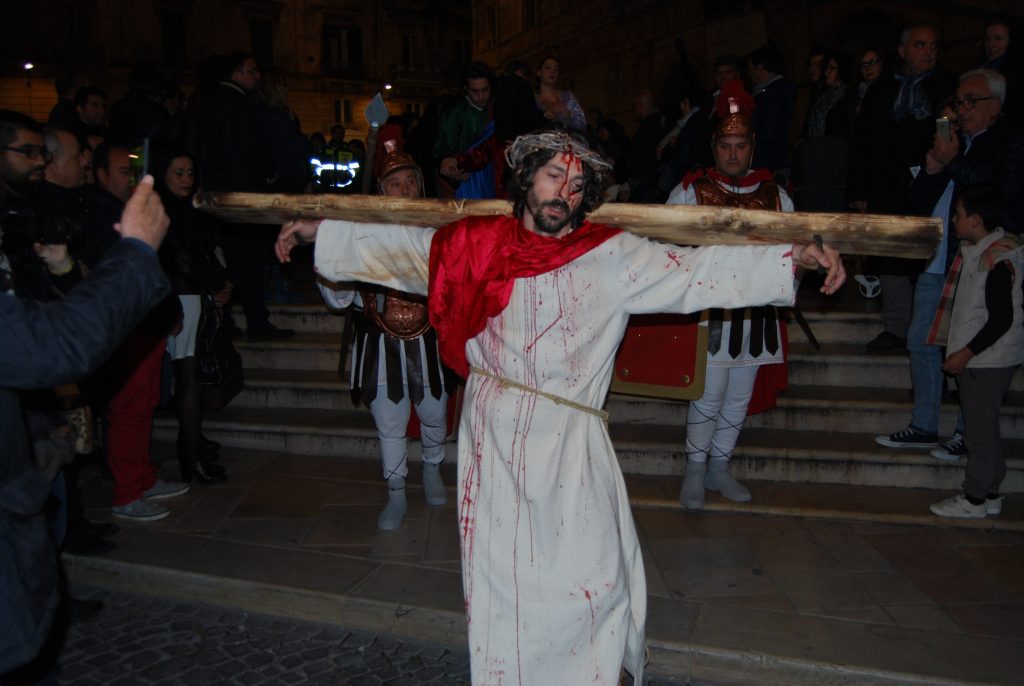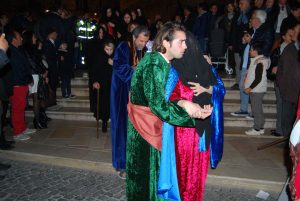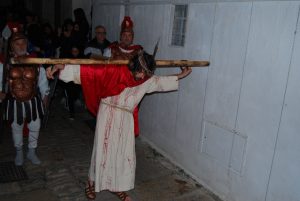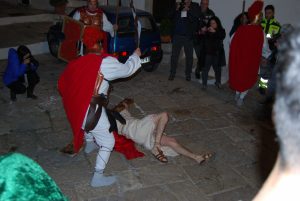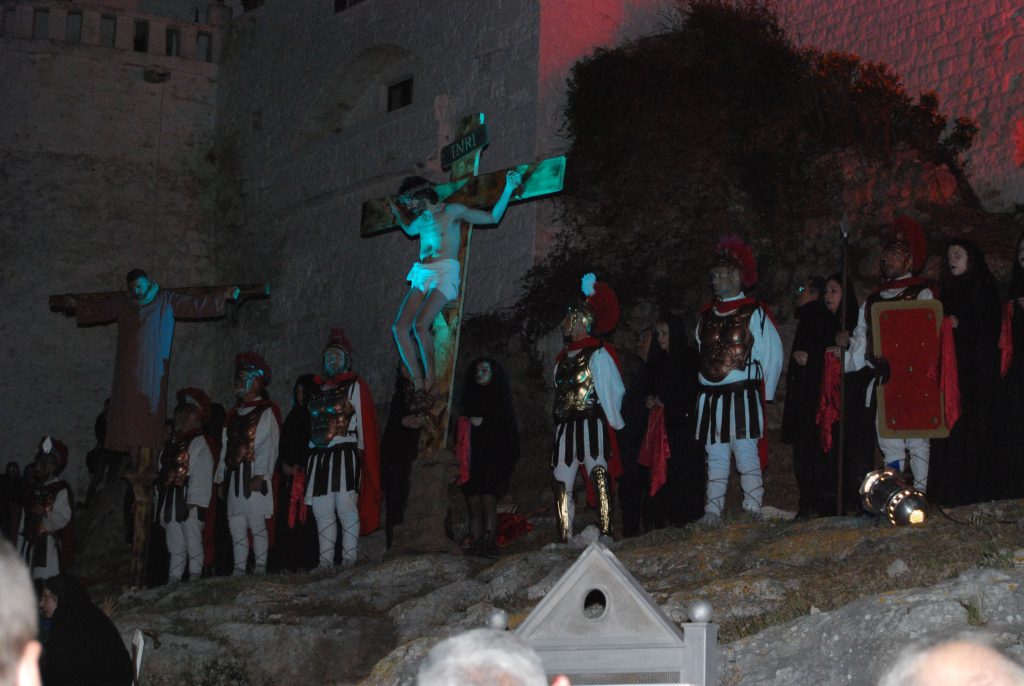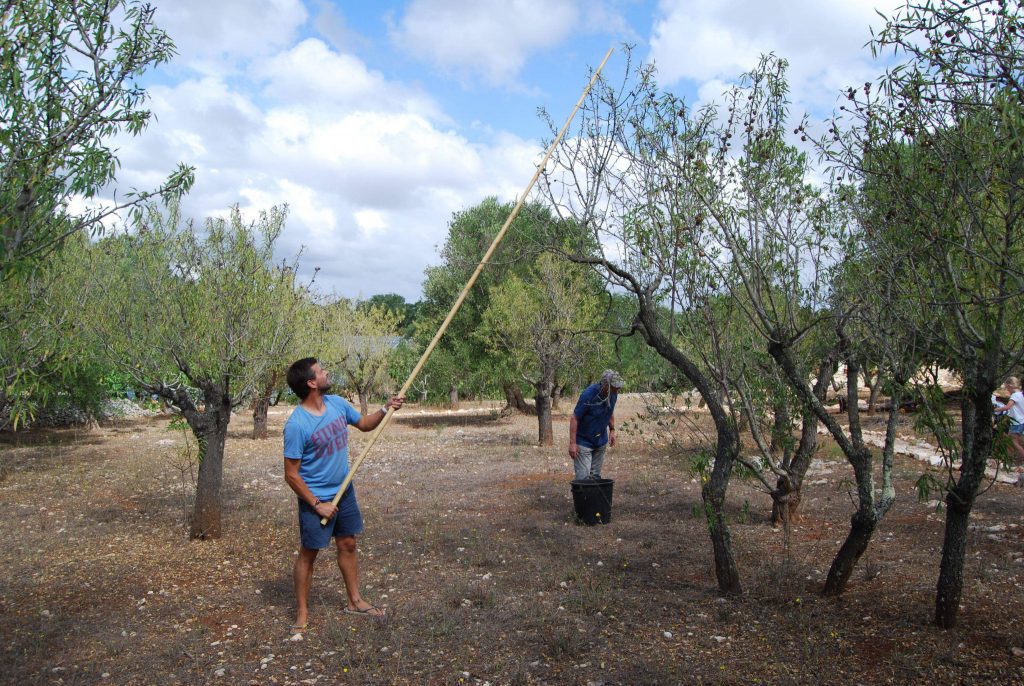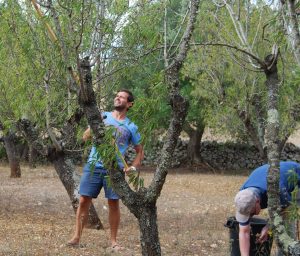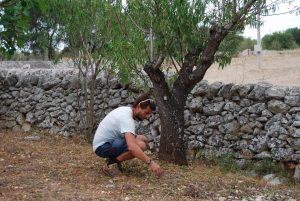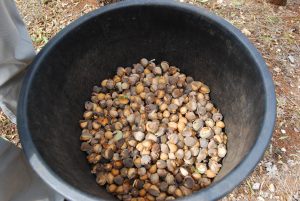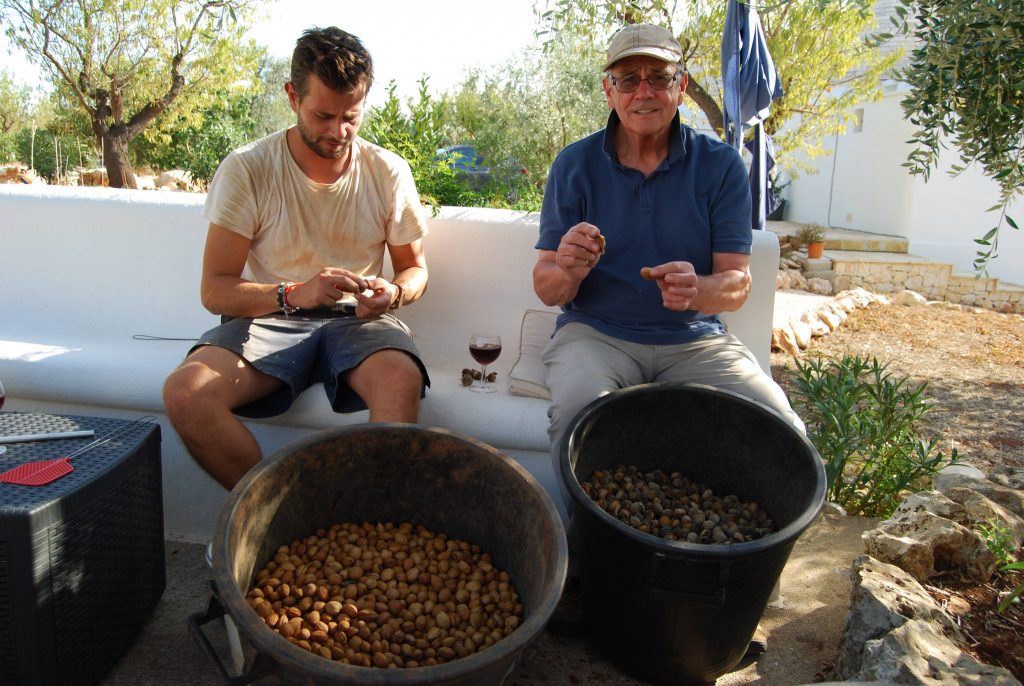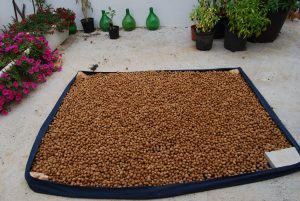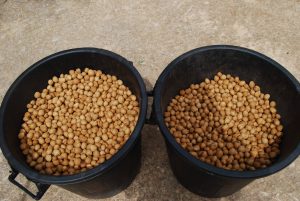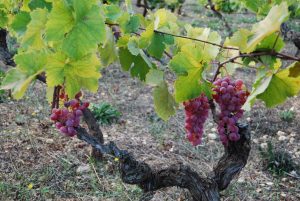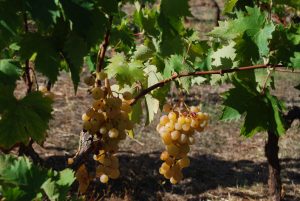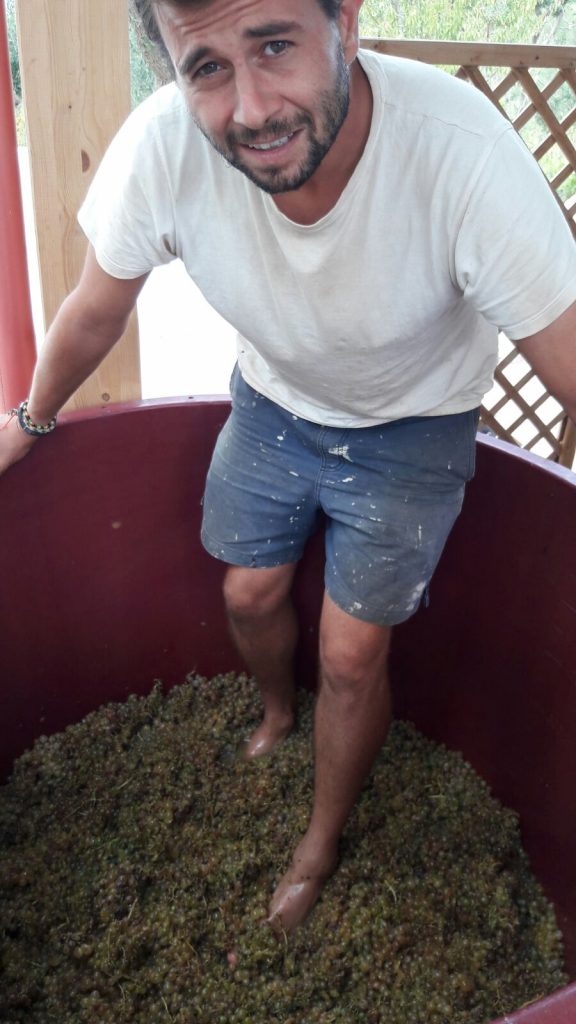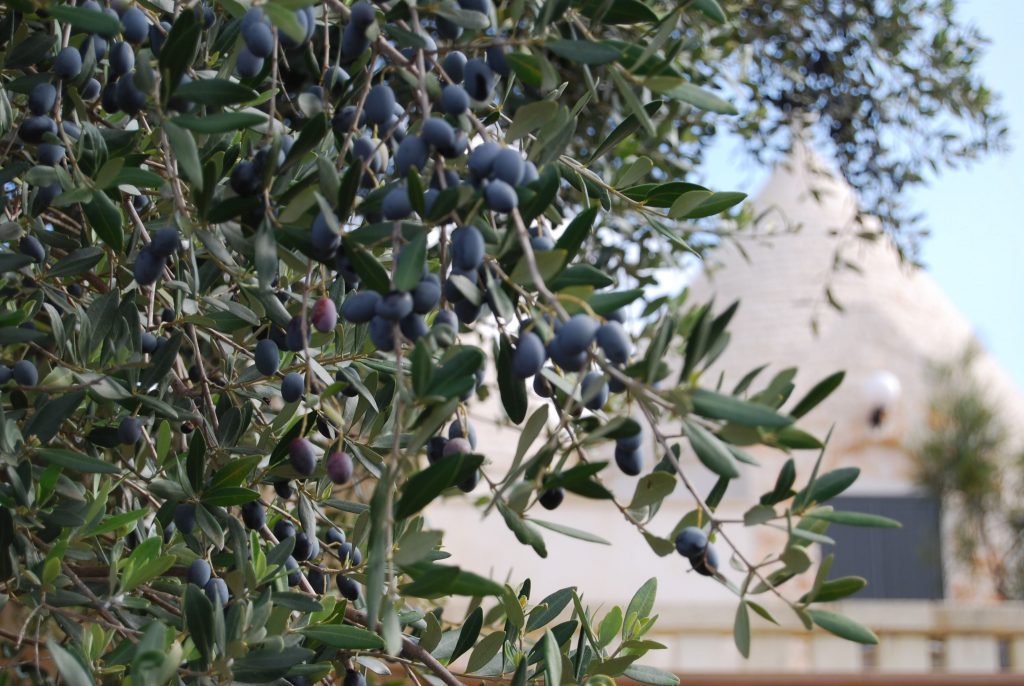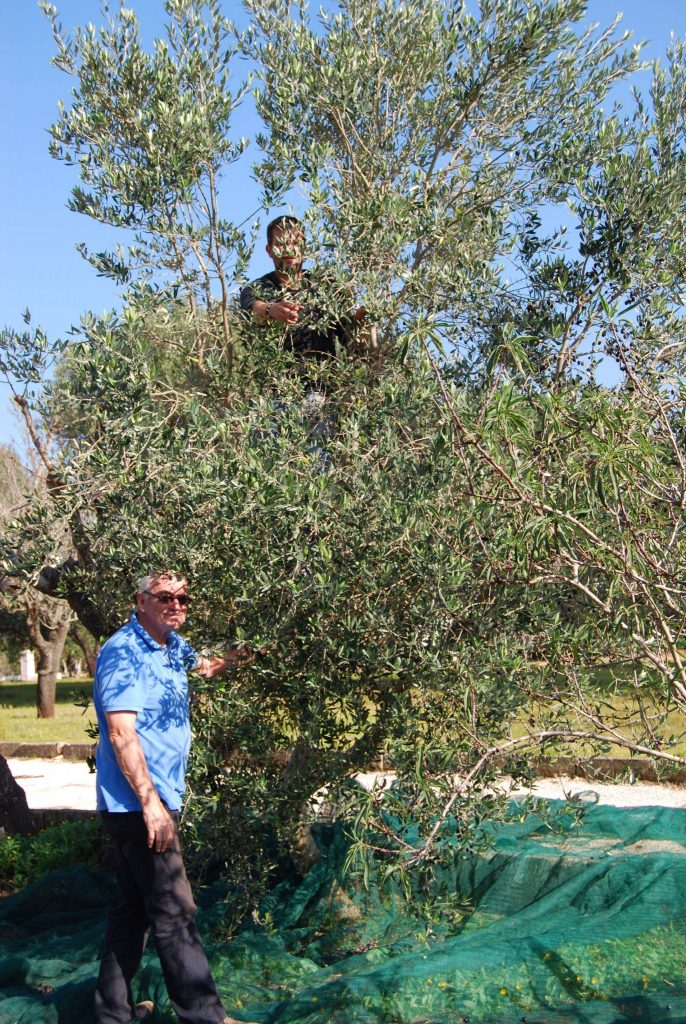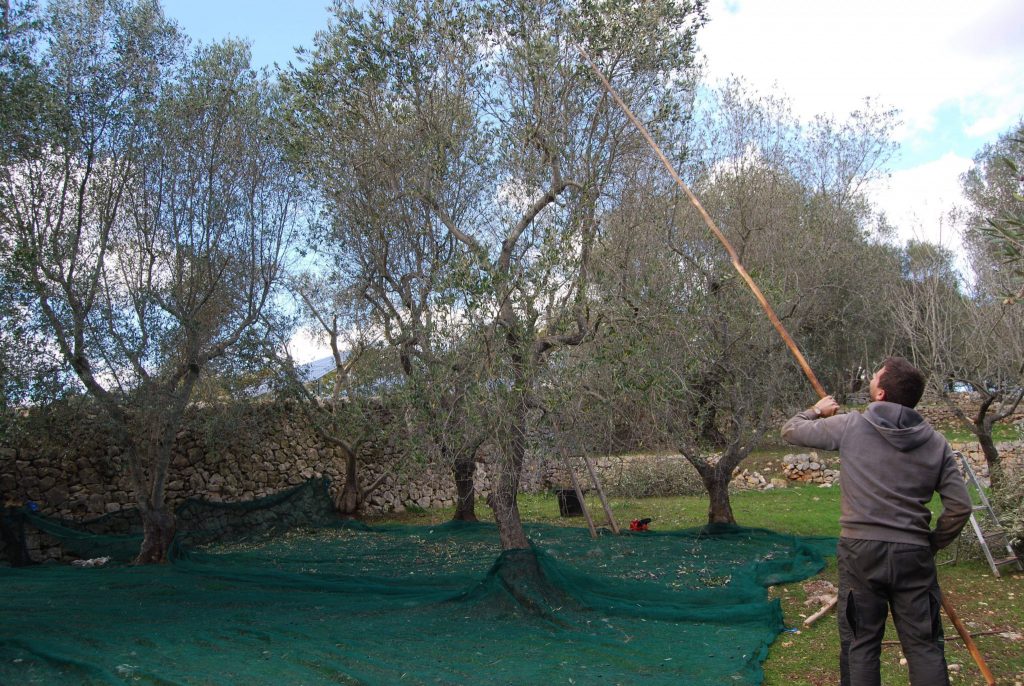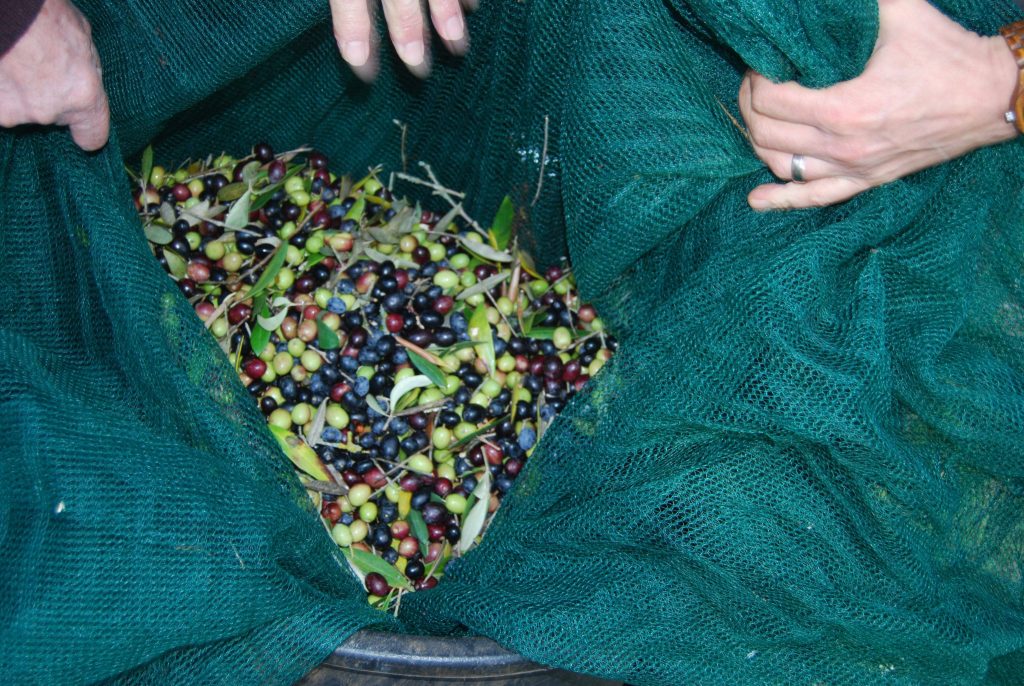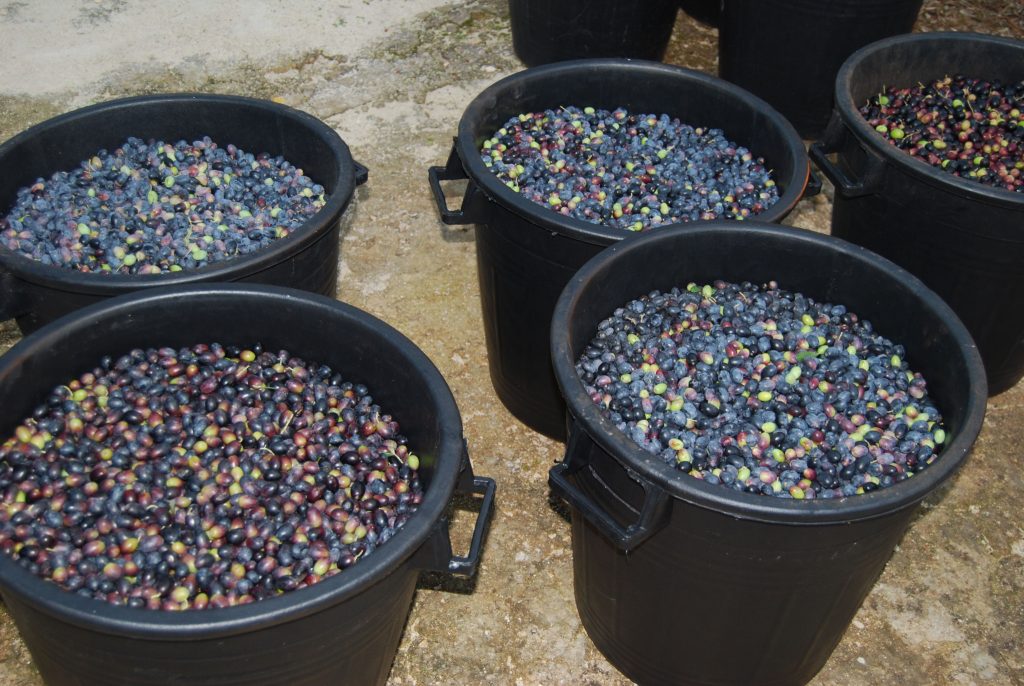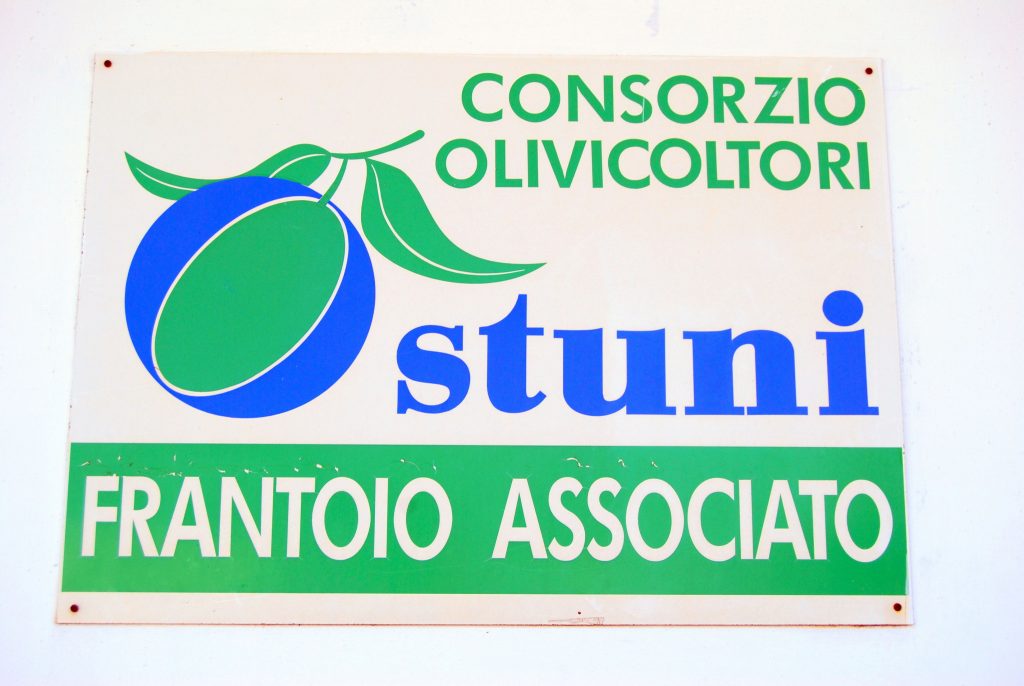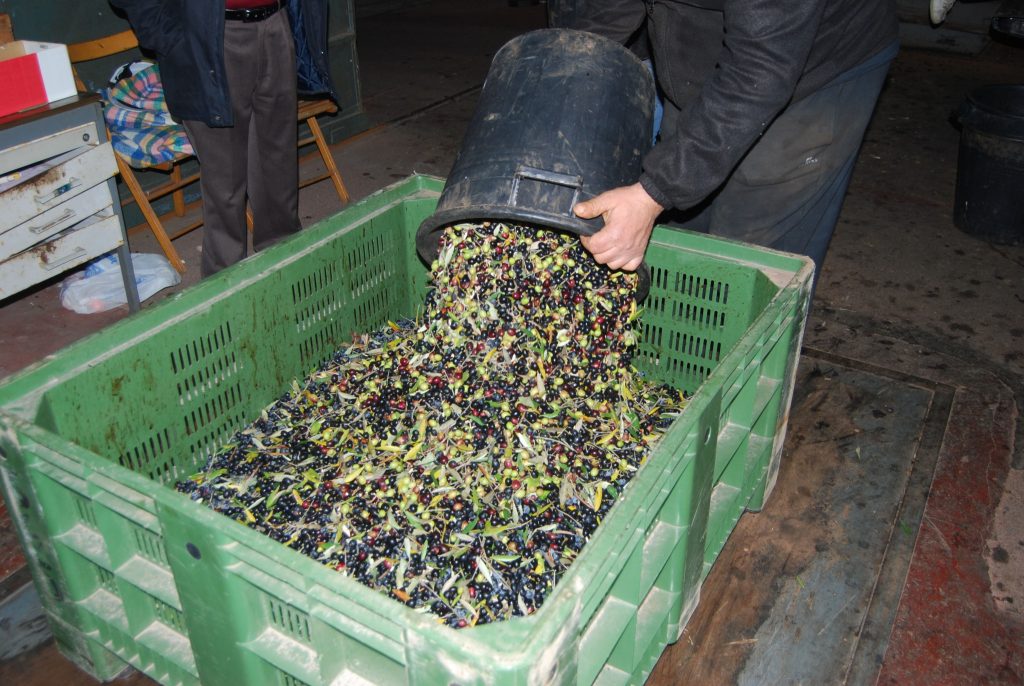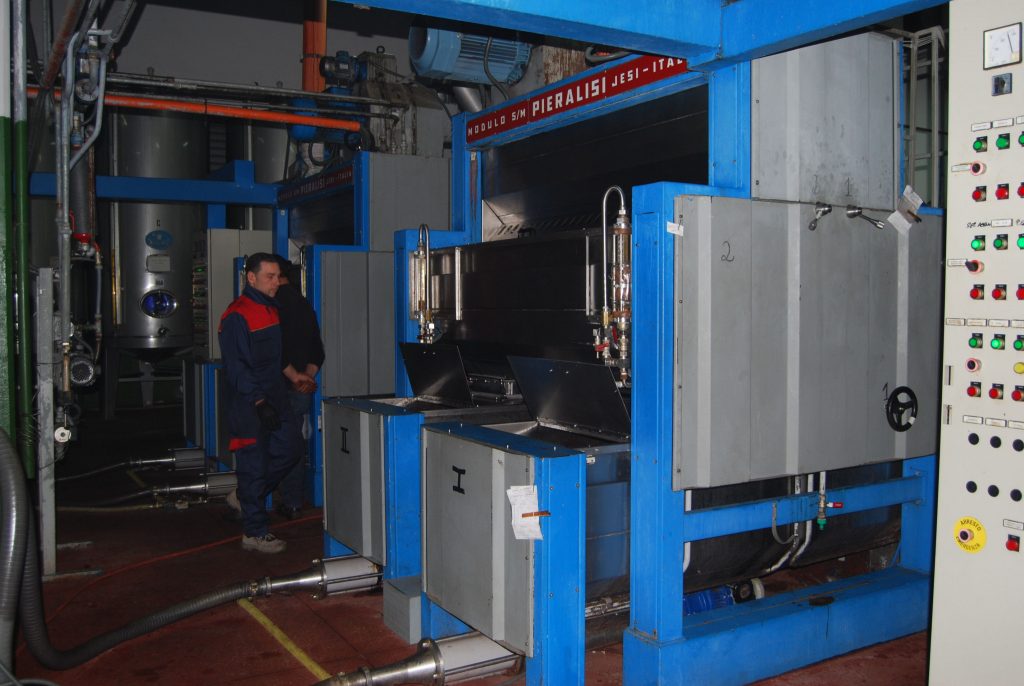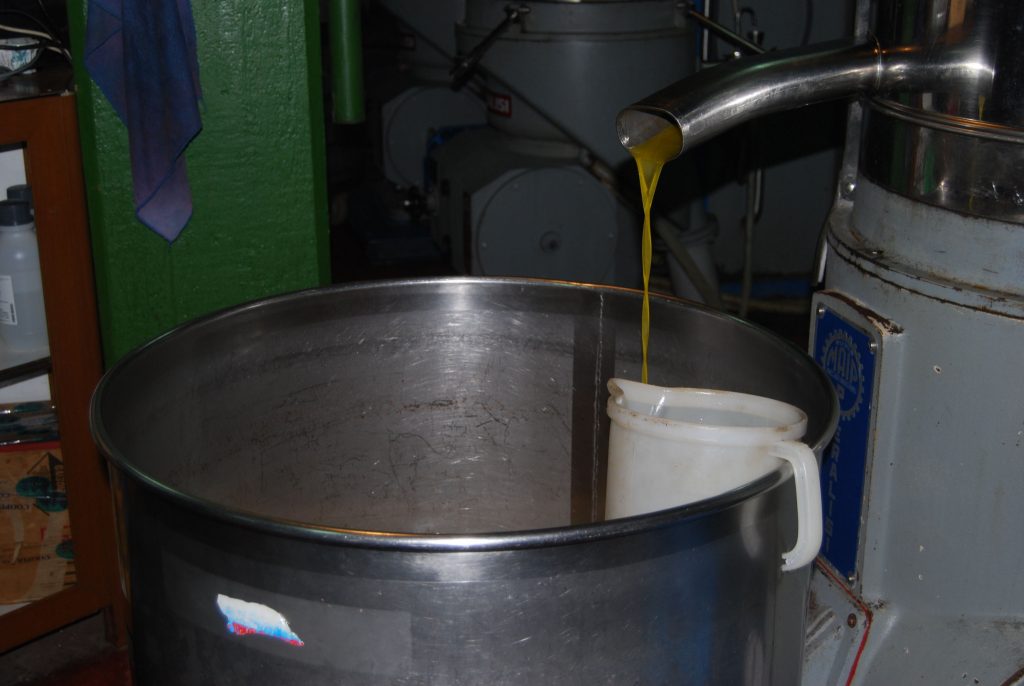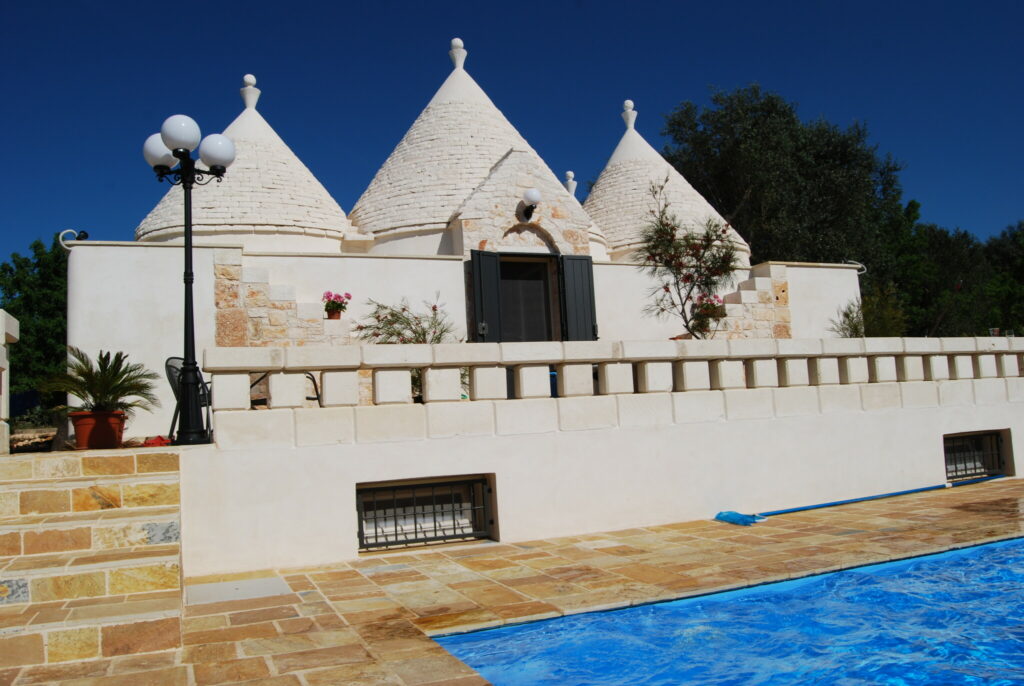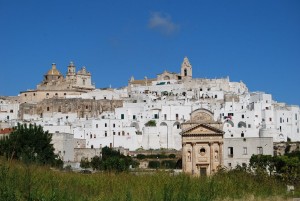
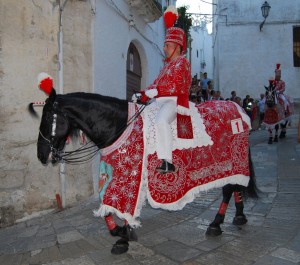
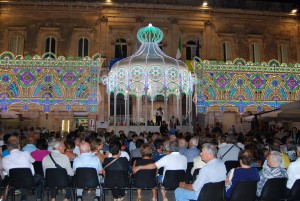
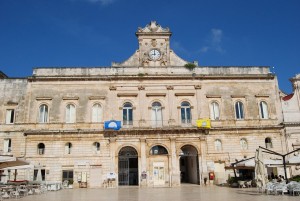
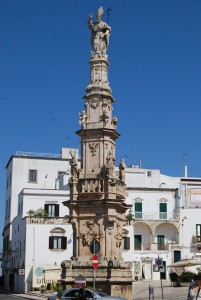
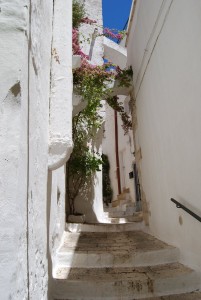
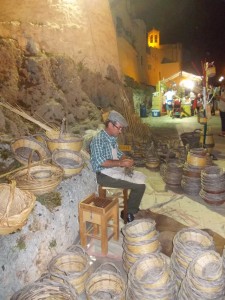
Ostuni is where Puglia Passion is based so we devote more attention to it in the website than to other places, and give more detail about its attractions, events etc. Despite all our explorations around the region, we are yet to find another town which compares to it in terms of attractions, interest and variety. There are several that come close, but in our opinion Ostuni is the number one!
Ostuni has only a few specific museums and buildings of special interest - the cathedral, the important Pre-classical Archaeology Museum and a recently established Diocesan Museum are the only ones. It is essentially a place to spend time in, to experience. The complex, cascading street layout and white buildings give it a distinctive feel, quite different from other Italian small towns; encouraging visitors to wander round without pressure to do things! Doing nothing in particular in Ostuni is extremely easy and very enjoyable.
We have structured this part of the website into sections with short cuts to them, so that visitors to the site and to Ostuni can quickly get to whatever interests them most.
CONTENTS
DISCOVERING OSTUNI - LAYOUT AND PLACES OF INTEREST
This covers the centro storico with its buildings, streets and museums; the Piazza della Liberta; the 19th century zone, including especially the Villa Communale (town park); the newer parts of Ostuni, including its main shopping street Viale Pola and the vibrant Saturday market; and a section on Ostuni's marina and coastal village at Villanova.
KEY EVENTS AND ACTIVITIES THROUGH THE YEAR
This runs through the year starting in August with the Sagra dei Tempi Vecchi and Cavalcata, followed by Autumn events; the series of Christmas, New Year and Befana (6 January) activities; Carnevale in February; Easter events and presentations; and various other events. All of these were drastically affected by the pandemic, but are now (2022) being re-established, albeit with various protective measures.
BACKGROUND AND PRACTICAL INFORMATION
Including history of Ostuni; how to get to Ostuni by public transport; tourist information points; and other sundry details of interest to visitors.
A YEAR IN THE COUNTRY - WHAT IS HAPPENING ON OUR LAND
Puglia Passion is based in the countryside about 10 kilometres outside Ostuni, where Trullo Annunziata is sited. We cultivate the land around our property there. This section gives a flavour of what is involved in all the seasons of the year - including especially the olive harvest in October/December; the almond harvest in August/September; and the grape harvest in September/October.
***
DISCOVERING OSTUNI - LAYOUT AND PLACES OF INTEREST IN ITS MAIN "ZONES"
THE MEDIAEVAL CORE/CENTRO STORICO
PRE-CLASSICAL MUSEUM AND THE OLDEST MOTHER IN THE WORLD
THE PIAZZA
PALAZZO MUNICIPALE
CHIESA DI SAN FRANCESCO
OBELISK OF SANT'ORONZO
OSTUNI'S MOST IMPORTANT PAINTING - PUGLIA'S ONLY VERONESE
VIALE POLA AND THE NEWER PARTS OF OSTUNI
VILLANOVA - OSTUNI'S COASTAL VILLAGE
***
STRUCTURE OF THE TOWN
Ostuni is a medium sized town, population about 30,000. It is built on the southern end of the chain of low hills called the Murghe which run in a line through the middle of Puglia south of Bari. South of Ostuni the land is flat. So Ostuni has some affinities with the Murghe and Val d'Itria, famous for trulli, to the north; and some with the Salento, famous for wine, to the south around Brindisi and Lecce
The urban area is divided fairly clearly into four distinct parts:
-
- the mediaeval core/centro storico
- the Piazza della Liberta
- the 19th century zone
- the Viale Pola and newer parts of the town.
Beyond the main urban area is countryside mainly devoted to olive cultivation, with a lot of scattered residential properties. There is also a coastal zone about four miles away including the marina and small port of Villanova and a series of beaches and beach based resorts.
***
THE MEDIAEVAL CORE/CENTRO STORICO
The famous central area of Ostuni is prominent on the small hill standing above the Puglian coastal plain (it is about four miles inland). The whitewashed buildings cascade down the hillside in tiny streets, steps and alleys. At the top is the cathedral, at the bottom the Piazza della Liberta.
Although this area contains a lot of holiday apartments, restaurants, bars and tourist-oriented shops, it also home to many Ostuni residents. Very busy from Easter to September, it attracts visitors throughout the year, and while quiet on winter weekdays, it is rarely deserted. Many businesses and establishments stay open all year round, which is good news for low season visitors.
Apart from the Cattedrale, the Pre-classical Museum and the very recent small Diocesan Museum, there are no specific places in Ostuni which should feature on a list for visitors to pay to go inside. The charm and attraction of the centro storico is in its overall character, appreciated just by wandering around the cascade of narrow streets, tiny squares, flights of steps etc. Vehicular access is controlled and anyway most of the streets are not accessible by car - so the area is best seen on foot (although trips by Ape are available).
***
Via Cattedrale
Via Cattedrale is the main street of the centro storico. It twists up about 300 metres from the Piazza della Liberta to the small piazza in front of the Cattedrale, passing through an archway about three quarters of the way up. It is a lively street, popular with visitors, and can get very busy in summer and at weekends.
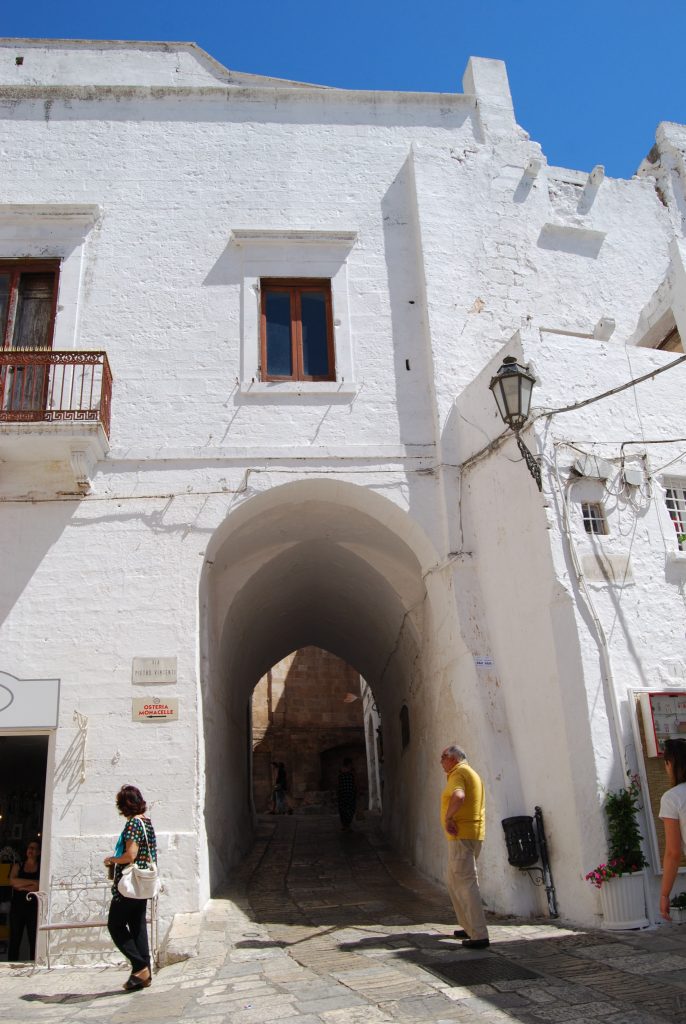
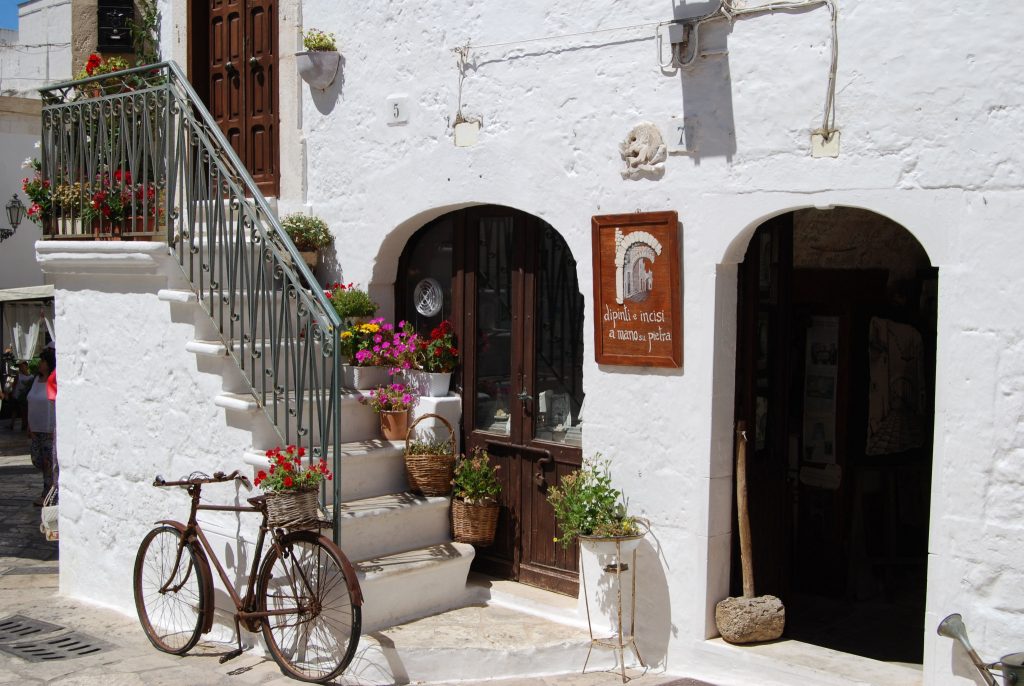
On the right hand side going up, just before the archway, is the Palazzo Tanzarella. This building dates from the 16th century, but was purchased by the Tanzarella family in 1816. More recently it became the property of Ostuni commune. In 2014 it was extensively renovated inside and outside, with many 16th and 19th century features conserved - including the 16th century window architraves with the inscription "Ogni cosa suo tempo. Le cose ben moderato durano a lungo" - "Everything in its time. Well cared for things last a long time". The traditional red colour makes it very distinctive in the mainly white painted Ostuni. The palazzo is leased by the commune as the permanent headquarters of the Fondazione Dieta Mediterranea. It is also used frequently for art exhibitions and cultural events, including the large Picasso exhibition in 2018 and the Andy Warhol exhibition in 2019. The palazzo is on the corner of the street where the Ostuni apartment we manage, Casa Nonna, is situated.
***
The cathedral
The most important building in Ostuni is its small Cattedrale, with its renowned rose window, sited at the top of the centro storico.
Dedicated to Santa Maria Assunta, it used to be the seat of the Bishop of Ostuni, but since 1986 it has been a co-cattedrale of the Archdiocese of Brindisi-Ostuni. Many people just look at the building from the outside, which is especially attractive. However, we recommend a look inside, there is much of interest - it is usually open to the public, and admission is either free or someone collects 1 euro at the door in aid of the church funds. Recently the interior has been equipped with a full set of very useful and informative panels, in Italian and English, which greatly improves a visit to the inside of the cathedral.
Like many of Puglia's cathedrals, it was originally built to a Romanesque design in the 12th century under Frederick II. However, the building we see today basically dates from a substantial rebuilding following earthquake damage in 1456. The structure combined the Gothic and Romanesque styles. The driving force behind the construction was Bishop Arpone of Taranto, who is commemorated (kneeling to the Madonna) in a small statue just above the main door.
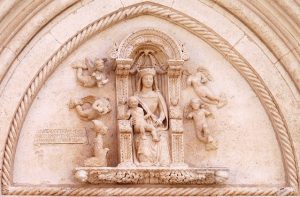
The exterior of the cathedral has been modified and repaired to some extent over the centuries, but not excessively so, mainly just being cleaning. Its essential simplicity of structure with sumptuously carved decorative features (in particular the rose windows) remains intact and the west facade must be one of the most photographed places in Italy. The cathedral is built of the creamy local limestone, which weathers well and is easy to carve; most of the external carving is thought to have been carried out by local craftsmen and artisans. It was the good state of preservation of the exterior which prompted the cathedral being designated a national monument in 1902.
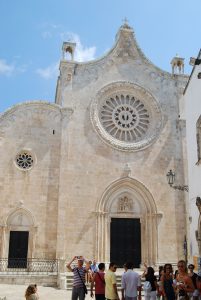
The campanile (bell tower) is actually the highest building in Ostuni, but it is hardly possible to see it from close up to the cathedral. However the bells are heard frequently!
Since the cathedral is largely surrounded by buildings, it is difficult to get an overall view of the outside. However, the west front can be viewed from the small piazza in front of it. This is decorated with fine carvings and statuary, all of it of interest and significance. However, the most obvious and famous feature is the rose window (there were four more on other facades of the cathedral; three remain but are less easily viewed).
The main rose window, which is regarded as the outstanding example of several in Puglia, is a detailed metaphor of time, eternity, the sun and its light. It is divided into three concentric circles representing the continuous flow of time. The perimeter circle is a frieze consisting of an intricate mass of plants, prophets, apostles etc.; with an image of Christ the Redeemer at the top of the frieze. Inside this is a second circle supported by a splay of 24 columns (representing hours in a day) topped by arches decorated with all kinds of significant religious symbols. The third circle is a splay of 12 split arches (representing months of the year), all intensely decorated. The heart of the window contains an image of Jesus Christ surrounded by seven cherubs.
Other parts of the cathedral facade are decorated in attractive and symbolic ways - in particular the doors and doorways, the friezes along the tops of the walls, the tops of columns etc.
By contrast to the outside, the interior has been subject to a series of extensive renovations. Various developments in the 16th, 17th and 18th centuries resulted in a panoply of decoration, paintings, chapels, altars, memorials, sculptures and statues, so presenting a familiar Baroque feel. Most of the work was commissioned from leading Neapolitan artists of the day.
However, an extensive set of renovations at the end of the 19th century has been universally criticised as a disaster, resulting in the destruction, disfigurement or concealment of many attractive and original features. A renovation project in the 1960s and continuing work has been largely devoted to undoing the results of this misguided work; among other things this has uncovered some important 15th century frescoes.
Inside the cathedral has three naves and a transept. As well as a main altar, there are 11 side chapels and altars. The whole place is lavishly decorated. Look especially at the ceiling; the organ; the woodwork; the font; and the various paintings and statues. Of particular interest is a side chapel dedicated to the patron saints of Ostuni- San Biaggio, Sant'Oronzo and Sant'Agostino. Look out for the silver statue of Sant'Oronzo, 110cms tall, constructed in 1794 by the Neapolitan engraver Luca Baccaro - it is this statue which is carried through the streets of Ostuni during the Cavalcata on 26 August each year.
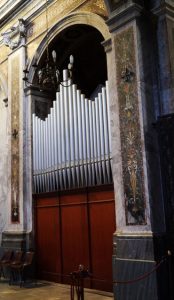
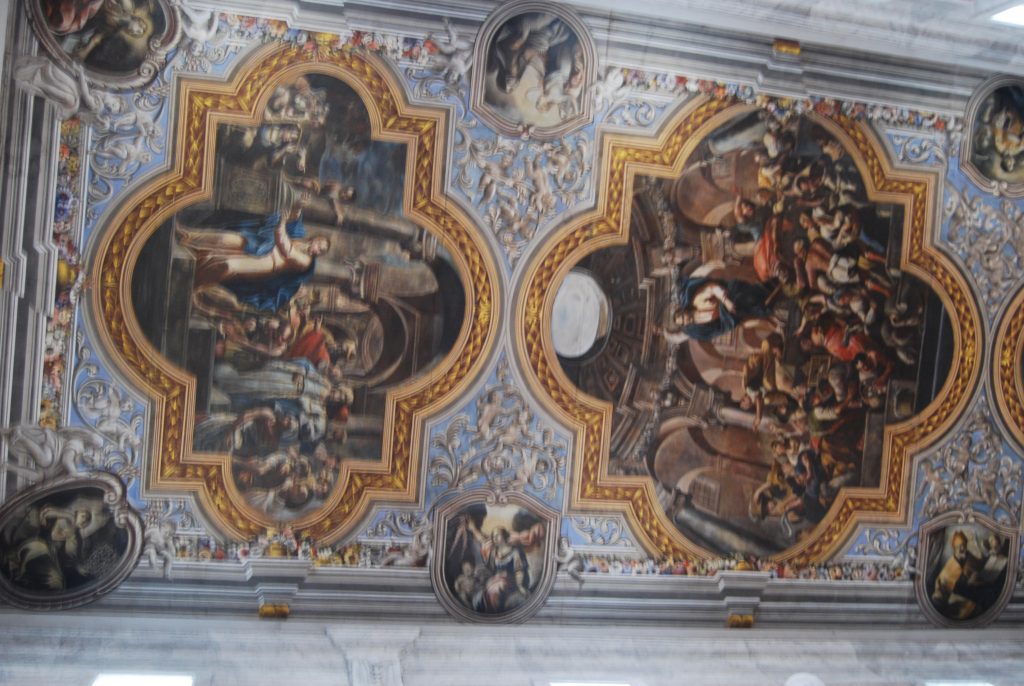
The small piazza in front of the main facade is a key feature of the cathedral. This has a real intimate feel. Shops and bars are very limited, and although many events are held here, these are on a small scale (Ostuni's main focus for communal activity is the much larger and busier Piazza della Liberta). The design of the piazza dates from a major project in the 1750's by Msgr Francesco Antonio Scoppa. This redeveloped the buildings which flank the piazza in contemporary style - the Bishop's Palace (now the Museo Diocesano) and a Seminary; and replaced the wooden bridge which connected them by a distinctive stone arch (usually known as the Scoppa Arch).
For anyone interested in more details of the architecture and art of the cathedral, we recommend the Brundarte website, link here.
***
The Pre-Classical Museum and the "oldest mother in the world"
In the skyline of Ostuni's centro storico, more prominent even than the cathedral, is the multi-coloured dome of the nearby church of San Vito Martire, also known as the Monacelle.
This is no longer a consecrated church, although the beautiful building has been restored. Together with the adjoining former Carmelite Convent of Santa Maria Maddelena de Pazzi, it is the home of Ostuni's main museum, dedicated to the archaeology of the surrounding area before the Greek and Roman "classical" times - Il Museo di Civiltà Preclassiche della Murgia Meridionale.
The museum opened in 1989 but was completely renovated and re-opened in 2011. The main entrance is towards the top of Via Cattedrale, just before the arch, up a short staircase which leads into the entrance of the Church of San Vito Martire; the museum reception is just inside the door.
The church was built in 1750-1752 to replace a previous one damaged in the earthquake of 1743. It is lavishly decorated in baroque in style externally and internally. Inside the church has a single nave and a series of altars with restored paintings on canvas. The whole interior is lavishly decorated. The attractive organ was installed in the 18th century. The church interior is well worth visiting for its own beauty and interest. However, it is also the first part of the museum, containing a series of cabinets and displays about the Messapican period (Iron Age) and some more modern objects.
A doorway at the far end of the church leads into the main part of the museum. This is organised into displays based on various achaeological sites around Ostuni where remains date from the Neolithic (about 7000 years ago) and Paleolithic (about 27000 years ago), although there is also important material from the much later Messapian period as well, since all the sites were occupied for many thousands of years. Pottery, agricultural implements, household objects are on display, explained by extensive descriptions, maps and photographs.
However, the undoubted highlight of the museum and of any visit is the material relating to "the woman of Ostuni", officially referred to as Ostuni 1 (her unofficial name is Delia!). This is the skeletal remains of a woman and her unborn child buried approximately 28,000 years ago in the nearby Grotta di Santa Maria di Agnano. The remains were discovered in 1991 by Professor Donato Coppola of Bari University and have been extensively researched, with very detailed findings published in 2017. The woman lived about 28 thousand years ago and belonged to a small community of hunter-gatherers (an even older skeleton of a male hunter was discovered at the same time, details also displayed in the museum, referred to as "Ostuni 2").
She was placed in a pit in the cave with some ceremony, in a crouched position with the left hand under the head and the right on the foetus. She had a cap made up of 650 shells interspersed with deer teeth and sprinkled with red dye; and was adorned with shell bracelets and other jewellery. Various artefacts, including hunting implements, were placed alongside her body. Recent study of tiny teeth in the foetus indicated that the foetus ceased to grow following the mother's illness, thought to have been eclampsia, and that the woman died in the eighth month of pregnancy at about the age of 20.
There is a detailed display including a cast of the remains as they were found, and a very detailed exposition of the skeletons of the woman and the unborn child. However, in a darkened room next to this display the museum contains a dramatic and rather moving diorama showing her as placed in the cave.
This museum is a "must" for anyone visiting Ostuni. It is not very big so does not take a lot of time to cover - 45-90 minutes is about normal. The material will be of considerable appeal to those with a special interest in archaeology. However, it also appeals to children, who as usual like skeletons, but love to make the link between the archaeological remains and the vivid reconstruction.
The museum has a useful website with versions in several languages. It is open 10am-5pm Monday to Friday, 10am-7pm Saturdays and Sundays (although during the summer festival period it opens later in the evening). Cost is 5 euros, 3 euros for various concessions which include people aged 65 and over - children up to 6 are free. Please note that the "free on the first Sunday in the month" system does not apply to this museum, although during the festival period there are sometimes free entry periods. .
***
Diocesan Museum
Immediately next to the cathedral is the entrance to the Diocesan Museum. This is a new feature of Ostuni, fully opened only in August 2017 - in contrast to many Italian cities where Diocesan Museums have been well established for years to display the treasures of an associated cathedral. The Museum is small, but extremely well organised, with very clear displays and descriptions in Italian and excellent English - also a free audio guide linked to mobile phones if required.
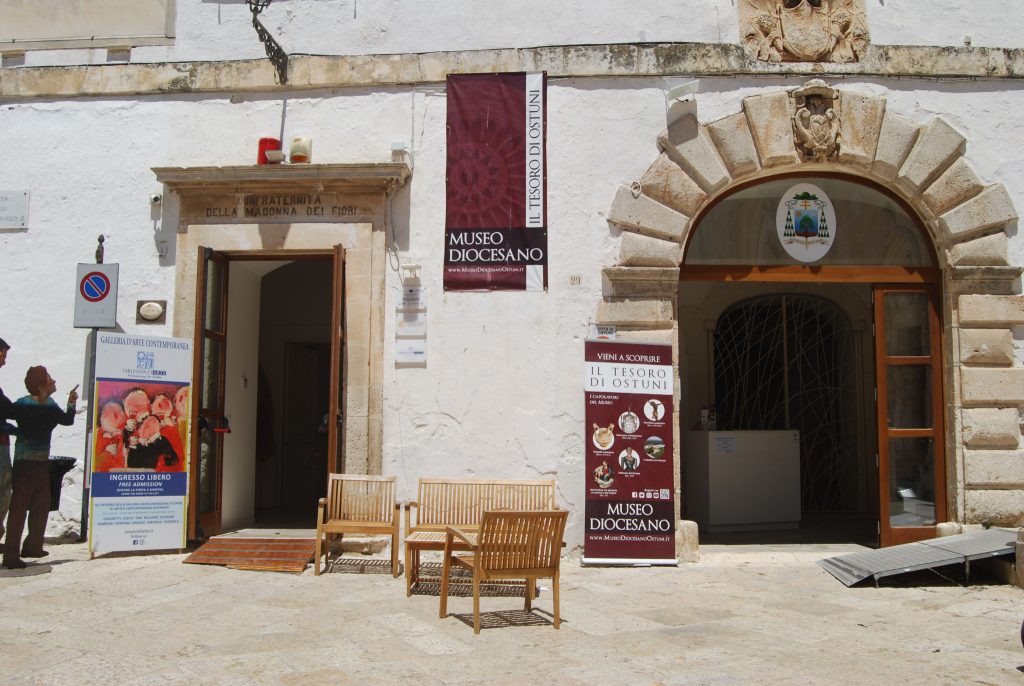
The Museum is housed in the ground floor of the former Bishop's Palace. The building has been completely restored and modernised, with a bright and welcoming interior. It is wheelchair/pushchair accessible throughout. On display are various archaeological items, artworks and artefacts previously hidden away in the Treasury of the cathedral or in the archives of local religious establishments, especially the Benedictine and Carmelite monasteries.
An initial display focuses on archaeological items recovered from a garden belonging to the cathedral just outside the Ostuni city walls, excavated in 1844. These include a variety of attractive pottery, tools, toys etc from the Messapian period (600-300 BC), The jugs with high handles and roundels are especially distinctive items from this period. Additionally historical artworks illustrate the development of Ostuni over the centuries.
The central part of the Museum is largely devoted to episcopal robes and church silverware; the significance of these is clearly explained, which is helpful and interesting. The is also a small Pinacoteca, or Art Gallery, containing paintings of religious scenes and of various Bishops/Archdeacons of Ostuni, all by local artists working in the 16th to 19th century.
A small room is completely dedicated to one display - an extremely rare depiction in wax of the crucifixion with Jesus Christ as an anatomical figure, a complex artistic and theological concept. The small figure dates from about 1700, when lifelike representations of the human body in wax were well established for the study of medicine and surgery in universities, and had been adapted by the church to demonstrate that Jesus Christ was really a human being. In this case the chest is open to reveal all the internal organs, and the wax allows the body to be shown with extreme realism.
In a room next door is another rarity - the so-called living statue of the Madonna del Rosario dating from the 18th century. This is a lifelike wooden figure made of polished wood, with all the joints and limbs moveable so that the figure could be dressed, adorned with jewellery and given different poses for a variety of religious events and seasons - some of these are illustrated. This interesting exhibit is a rare example; although they were quite widespread in Italy, at the beginning of the 20th century Pope Pius X banned them, so many were destroyed and the rest hidden away. More recently their religious and cultural significance has been revised and appreciated.
"The memory of Ostuni" is a display of books and manuscripts relating to the Benedictine convent established in the middle of Ostuni in 1519. Wealthy families placed their daughters in the care of the convent from about the age of six years. When they were 12 or 13, many left to be married, others continued into a religious life. The financial support of the noble families concerned contributed enormously to the wealth of the church and Ostuni. The documents displayed here are of inestimable historic interest, detailing all aspects of monastic life, lives of the nuns, property and household management. For non-specialist visitors, the accompanying beautiful display of "ex voto" gifts is probably of more interest - these are precious objects, jewellery etc donated to the church as an expression of thanks or devotion.
The Museum has an attractive walled garden where the Bishops used to relax; visitors can now do the same, in a sheltered and shaded spot, in the very heart of Ostuni.
The variety on display in this small Museum, including some things which are really quite rare, is a major attraction. The curators have gone to a lot of trouble to make the displays easy to understand and appreciate; this includes a series of panels in Italian and English aimed at involving young children in the experience.
We unhesitatingly recommend a visit if you get an opportunity. It is not expensive (4 euros, 2 euros for those entitled to concessions); but opening hours are quite limited (currently these seem to be 11.00-13.00 on Friday, Saturday and Sunday for the period October to May; 10.00-13.00 every day June-September - the times are different from those advertised on their website and leaflet.
***
PIAZZA DELLA LIBERTA
The Piazza della Liberta is the "heart" of Ostuni and the main base for many events and activities. It separates the centro storico from the other, larger section of Ostuni's older district, usually known as the 19th century zone. It is the main starting point for people visiting Ostuni, Via Cattedrale leads uphill from the piazza into the centro storico.
The piazza is complemented by several important buildings and linked squares/streets which are described here.
The Piazza della Liberta
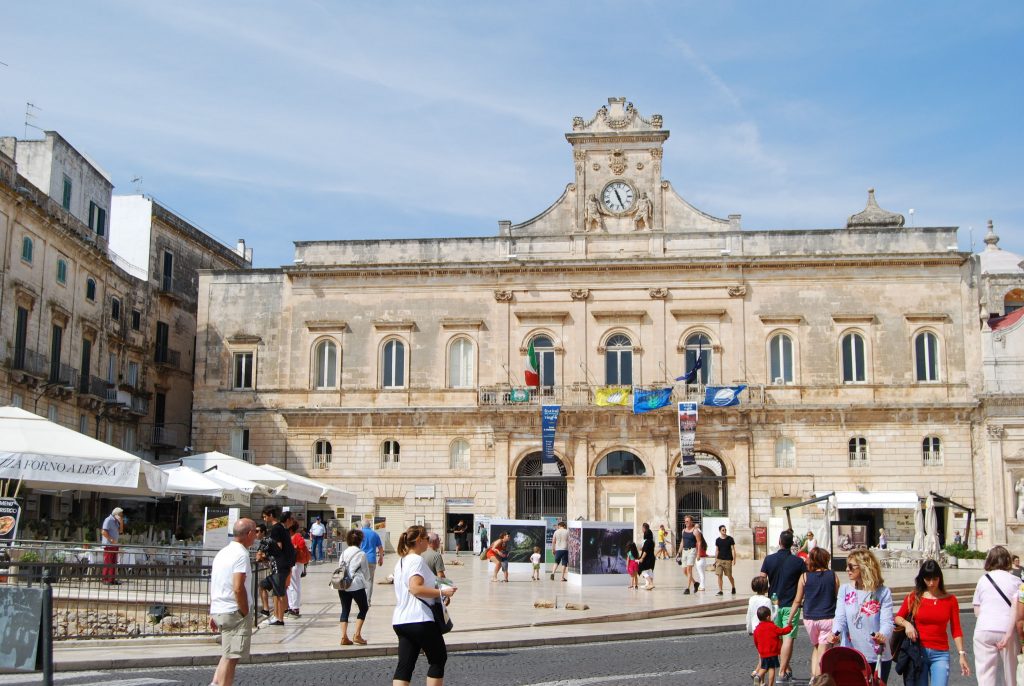
Unlike many central squares in Italy, the Piazza is not especially old. It was constructed about 1870, designed by the architect/engineer Ferdinando Ayroldi (hence the Cafe Ayroldi in one corner). The remnants of one of the the ancient city gates was demolished in the process; its foundations are now to be seen in a fenced off area at one end of the piazza.
The "square" is actually triangular in shape - one side with broad steps down to the street; one side a row of 18th century palazzi; and the most important side with the Palazzo Municipale (Town Hall) and Chiesa di San Francesco, key buildings in Ostuni which the piazza is designed to display well.
The smooth calcareous surface is ideal for all kinds of uses, including markets, displays, concerts, meetings, dancing, bands etc; but anyway is usually populated by groups of people and children enjoying themselves. Some of the cafes/bars are allowed to extend into it. But watch out in the early morning and sometimes in the evening - its surface can become slightly damp and slippery!
The Palazzo Municipale
Together with the Church of San Francesco, the facade of the Palazzo Municipale, Ostuni's Town Hall, dominates one side of the Piazza della Liberta.
This complex was a Franciscan church and monastery from 1304 to 1809 when, like many similar establishments in Italy, such religious orders were suppressed under Napoleonic rule. The monastery building was bought by the commune of Ostuni in 1813, and from 1887 became its main administrative base, a function which continues today.
Following the suppression of religious orders, in 1813, it was purchased by the City and intended to house offices of public utility. The current appearance dates from 1861-87, when Ferdinand Ayroldi redesigned the facade in a neo-classical style as part of the general process of providing a new look to Ostuni in the aftermath of Italian re-unification.
The façade is very simple, balanced and undecorated (contrasting with the highly decorative baroque style prevalent previously in Puglia), with four columns defining the three doorways. Only the clock and its small tower have some decorative features (NB don't rely on the clock to tell you the time!).
The right hand doorway leads through to the cloisters built in 1739 when this was still a Franciscan monastery. You can just walk in to see these, and the cloisters (chiostre) are frequently used for exhibitions, talks, concerts, theatrical productions etc
The left hand doorway is the entrance to the municipal offices. We encourage people to go inside when the offices are open to the public. Go up the wide staircase to the left of the entrance area. This takes you to the first floor. At the top of the stairs turn left where the long landing area has a series of large paintings by Onofrio Bramante depicting highlights from the history of Puglia and Ostuni. And if you turn right at the top of stairs, provided there are no offcial meetings taking place, you can walk into Ostuni's Council Chamber, where there are portraits of Mayors of the city for the last century or so around the wall, and a good view from the windows overlooking the Piazza. (NB This is all free and unsupervised, just walk in).
The Church of San Francesco
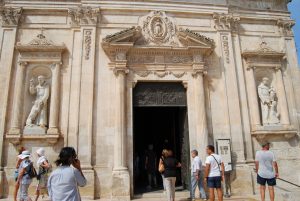
Sant'Oronzo Column/Scalinata Anselmi
The creation of the piazza meant that the central area became integral with the small piazza just outside the old gateway, around the Guglio (column) of Sant' Oronzo, which towers above one end of the Piazza della Liberta. The column is a key central point in Ostuni.
The Guglio also overlooks the Scalinata Antelmi, a decorated staircase leading into an attractive piazzetta Via Independza, which forms a lower level extension to the Piazza della Liberta, containing small shops, bars and restaurants. The Scalinata forms a natural stage so this is the focus for informal musicians and singers.
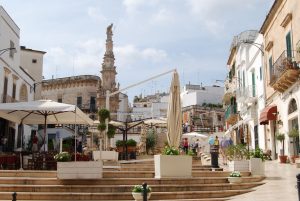
***
THE 19TH CENTURY ZONE
Sloping up beyond the Piazza is the 19th century zone of Ostuni, built as a significant extension in the late1700s and early/mid 1800s. This also consists of whitewashed buildings in a network of small streets, but also contains elegant palazzi, parks and gardens, including the main town park, the Villa Communale. It is predominantly a residential area, but with several small shops, the main post office,banks, businesses, schools, bars, restaurants etc. It is bounded by Viale Pola, about 10 minutes walk from the Piazza della Liberta, which separates the 19th century zone from the newer parts of Ostuni.
***
Villa Communale/Ostuni's town park
Most towns in Puglia have a municipal town park, the term for this is usually Villa Communale. Ostuni's can be found near the top of Corso Cavour, a couple of minutes' walk from the Piazza della Liberta.
It is an attractive fenced park, with grass and trees, a fountain, a children's playground, seats, tarmac-surfaced walkways, a bar/cafe. The Villa is well maintained, and provides a cool place to stroll and relax, slightly removed from the bustle of the nearby Piazza. It is popular with people of all ages. An ideal spot to stop off for a while when walking between the centro storico and Viale Pola; we can also recommend the cafe/bar, excellent quality, low prices.
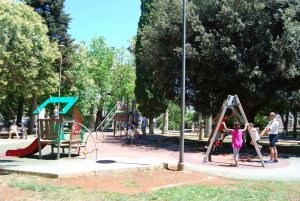

There are often events staged there. At Christmas it is the base for a small market and for the grotto of Bappo Natale (Father Chrsitmas).
Every second Sunday of the month, there is an Antiques Market in the Villa and the surrounding streets. This is very popular among local people and visitors.
The Villa is on the site of an ancient ditch or pit which collected rainwater for use during dry periods. This fell into disuse and was gradually filled in during the Nineteenth Century. The plan to construct a park was conceived in about 1860, by which time rich families were building the large elegant houses on the nearby streets. However, it was not completed until about 1930; and there have been many improvements since then eg replacement of a glasshouse by the playground, construction of the fountain.
The trees and shrubs in the Villa are a major attraction. They include many tall palm trees and a striking tropical tree, Phytolacca dioica (laquer tree), next to the playground - its huge trunk and extensive roots are a favourite with children. (NB Recently, in 2022, the branches have been totally pruned, so the tree does look very strange - but importantly the trunk is unscathed).
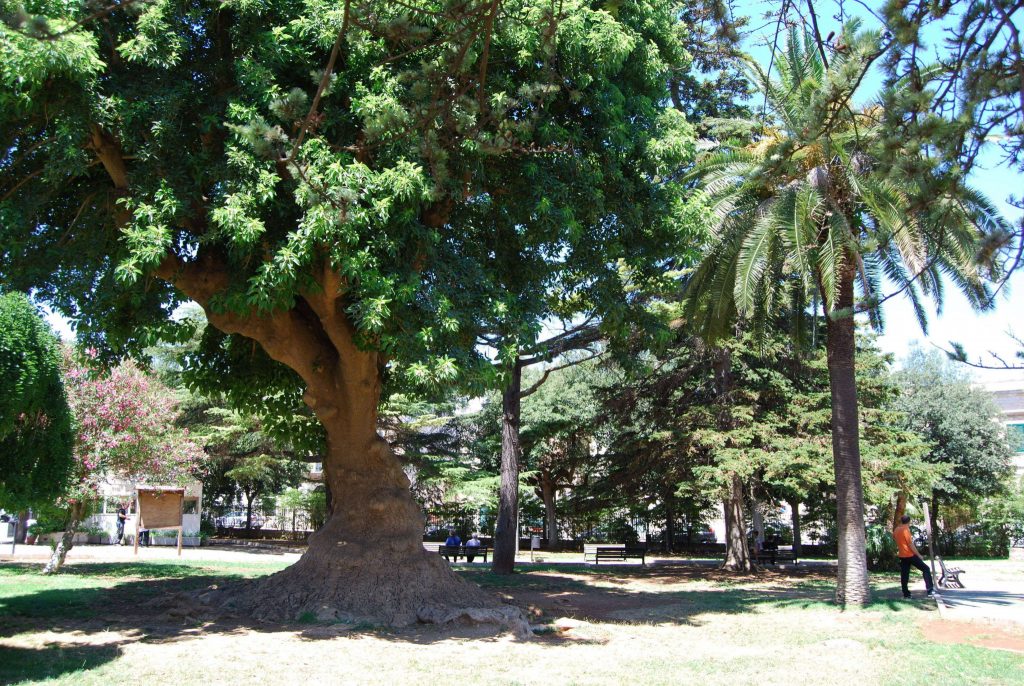
***
Ostuni's most important painting - Puglia's only Veronese
Ostuni is the unlikely site for Puglia's only painting by the Venetian Renaissance painter Paulo Caliari (1528 - 1588), better known as Veronese. His oil on canvas painting La Depositizione is displayed in the modest Parish Church of Santa Maria Santissima Annunziata on Via Ludivico Pepe, in the upper part of the Ostuni 19th century zone.
There was a church and convent on the site since the 12th century or earlier. However the current structure dates from the 17th century, when it became a Franciscan church and monastery, hence the simple design of the facade. Inside however there is significant elaborate painting and sculpture by Puglian artists from the 18th and 19th century as well as the Veronese. Next to the church are the cloisters of the former Franciscan monastery; this building is in a somewhat poor state of preservation, but it is visited frequently as one part of it contains Ostuni's main post office.
The painting is very damaged – abraded, slashed in several places, repaired and restored, probably cut down at the top. It was presented to the convent at Ostuni in 1574 by Andrea Albrizio, the Venetian Vice-Consul in the town; its attribution as by Veronese himself was finally established in 1958. It was stolen by professional art thieves in 1975, possibly destined for a private collection in the Middle East. However, it was recovered by special police in 1977 and returned to the church, where its display is now behind glass and subject to some degree of security. If you want to pop inside the church you will need to look out for when it is in use (Friday and Saturday evenings, Sundays, religious festivals, weddings and funerals etc) - it is understandably not left unlocked at other times. Unfortunately the dim interior and the poor presentation mean it is difficult to appreciate the qualities of the painting.
If you are interested in more detail on la Deposizione, its history, provenance etc , click here.
***
VIALE POLA AND THE NEWER PARTS OF OSTUNI
The newer developments of Ostuni include many shops, especially on Viale Pola, offices, residential blocks, schools, the town library, sporting facilities, Ostuni's hospital, the bus termnal at Vaile dello Sport. The important Saturday market is in one of the newer areas just beyond Viale Pola.
Unlike some other Italian towns, the newer parts of Ostuni are quite pleasant to wander around. We certainly recommend a visit there for shopping and to drop into a bar, as well as going to the Saturday market, a "must" for any visit to Ostuni.
***
Viale Pola
Viale Pola is an attractive street tree lined street with a variety of good quality shops - clothes, jewellery, leather goods etc. It is well worth visiting for the much more "normal" feel compared with the centro storico - reach it from Piazza della Liberta by walking up Via Roma and just carrying straight on, it takes about 8 minutes. Although there is a lot of traffic, drivers tend to make way for pedestrians, which helps.
There are plenty of bars/cafes of course; our favourite is Cafe Ricreazione. The Carrefour Express Supermarket is at one end of the street where it widens out into a small Piazza (Piazza Italia); and just beyond that is a fabulous shop, Asciano, which sells all sorts of sweets, chocolates, liqueurs etc - visit this even if you don't buy anything!
Viale Pola is the location of quite a few Ostuni events, in particular the Carnevale processions; and the starting point for many cycle and road races etc.
***
The Ostuni Saturday market
Ostuni's weekly market on Saturday mornings is one of the largest in the region, very popular with local people and also with visitors. It operates all year round. We go there almost every week, and its rare that we do not bump into people we know - neighbours, friends, the teachers from the children's school etc. It is a social occasion as well as a shopping opportunity.
The market is located on and around Via Sansone, which is five minutes walk from Viale Pola, about 10-15 minutes walk in all from the centro storico. You can park within short walking distance in the surrounding streets. It starts early, round about 6am, and is packing up at 1pm in time for lunch - but a visit in mid morning is recommended, it is in full swing then.
The food section is especially extensive - fruit, vegetables, cheese, meat, fish, eggs, nuts, olives, breads, lentils etc. Whole stalls are devoted to different varieties of lentils, beans and pulses; to olives; to nuts.
Prices are low, quality good. Fruit and vegetables all come from the area around Ostuni and are of course highly seasonal - so in January/February oranges proliferate, but in June they are in short supply, replaced by masses of melons.
Ostuni - Saturday market
The rest of the market is devoted mainly to clothes, shoes and leather goods, with a smattering of stalls selling rugs, household materials, small electrical items, tools, garden shrubs and plants, ladders.
***
VILLANOVA - OSTUNI'S COASTAL VILLAGE
Ostuni is separated from the Adriatic coast by a 5 km belt of olive trees. Ostuni's own coastal strip includes its settlement around the harbour of Villanova, some summer holiday developments and a public beach. All are easily reached by car or by bus from Ostuni centre.
The harbour is overlooked by a small fort, built as part of the string of coastal forts and towers originally built to defend Puglia against Turkish raiders. Fish are landed daily, and there is a small fish market - you can watch the fishermen and buy fish direct from them if you want (this has featured on several UK TV cookery programmes). It is pleasant strolling around the harbour and small waterfront. A few bars and restaurants serve the popular yacht marina and visitors. The couple of restaurants are very good and not expensive. However, outside the main season you will find it very quiet; the only place which seems to remain open consistently outside the main season is an excellent geletaria serving ice cream, cakes, snacks and drinks.
The harbour area is separated from the public beach by a strip of hotels and summer holiday complexes; it is easy enough to walk between the two (10 minutes or so) but you have to walk along the road rather than the sea. The bus from Ostuni turns round at the beach, where there is also a car park. The beach is OK for swimming but not as good as several others up and down the nearby coast. It is understandably very busy in July and August, but quiet or even deserted in other months - we have been in the sea there as early as May and into October, the rest of the year it tends to be too "bracing"! South of the beach there are lots of spots among the dunes and rocks alongside the sea for picnicing and walking.
***
KEY EVENTS AND ACTIVITIES THROUGH THE YEAR
NB MOST EVENTS DESCRIBED HERE WERE CANCELLED OR SEVERELY LIMITED DURING THE COVID 19 RESTRICTIONS. WHILE SOME LIMITATIONS ARE STILL IN PLACE, MOST THINGS ARE NOW OPERATING MORE OR LESS AS DESCRIBED HERE.
There are all kinds of things going on in Ostuni throughout the year. Many of these are regular, well established events and festivals. While most of these are of interest to visitors, few of them are especially aimed at tourists - advance information about details can therefore be somewhat sketchy. We describe here the key events and activities in as much detail as possible, to give people a flavour of what is involved. But there is no substitute for coming and seeing for yourself, to experience the unique atmosphere.
We have set information chronologically through the year, starting in August.
EARLY AUGUST - SAGRA DEI VECCHI TEMPI, THE CELEBRATION OF OLD TIMES
LATE AUGUST - FESTIVAL AND CAVALCATA DI SANT'ORONZO, HIGHLIGHT OF THE OSTUNI YEAR
NOVEMBER - THE NEW AUTUMN FESTIVALS
CHRISTMAS, NEW YEAR AND BEFANA IN OSTUNI
LA PASSIONE - THE SUNDAY BEFORE EASTER
***
La Sagra dei Vecchi Tempi - the celebration of old times
August 15th is a national public holiday in Italy. It is the feast day of the Assunzione or Assumption of the Virgin Mary, the day in which the saint was taken into heaven, and also known as Ferragosta, the August Holiday (instituted as a late summer holiday by the Roam Emperor Augustus). Italians traditionally make trips and visits on this day. Ostuni is a popular destination, so the town is busier than usual, even for August, with a lot going on.FEBRUARY - CARNEVALE
However, the evening of 15th August is the time of a special event in Ostuni - La Sagra dei Vecchi Tempi, the celebration of old or traditional times. From early evening until_ after midnight, the ramparts around one side of the centro storico are taken over by stalls selling and displaying traditional and local produce - a sort of "farmer's market" for pasta, bread, craft beer, olives, olive oil, wines, liqueurs, jam, preserved fruit, pastries, herbs and spices, pottery, metalwork, leatherwork, woodwork, baskets etc.
All this is interspersed with stalls selling hot and cold snacks, mainly barbecued; and all kinds of street entertainment, music and dancing (inlcuding pizzica displays), pony rides for children etc.
The setting is evocative, with the rocky city walls on one side and the open view across to the coastal lights on the other. The atmosphere is especially lively and friendly throughout. It can be quite crowded, but the ramparts are spacious enough to accommodate everyone. If you are in or near Ostuni on the evening of 15 August, this is an event definitely not to be missed. The photographs give an impression.
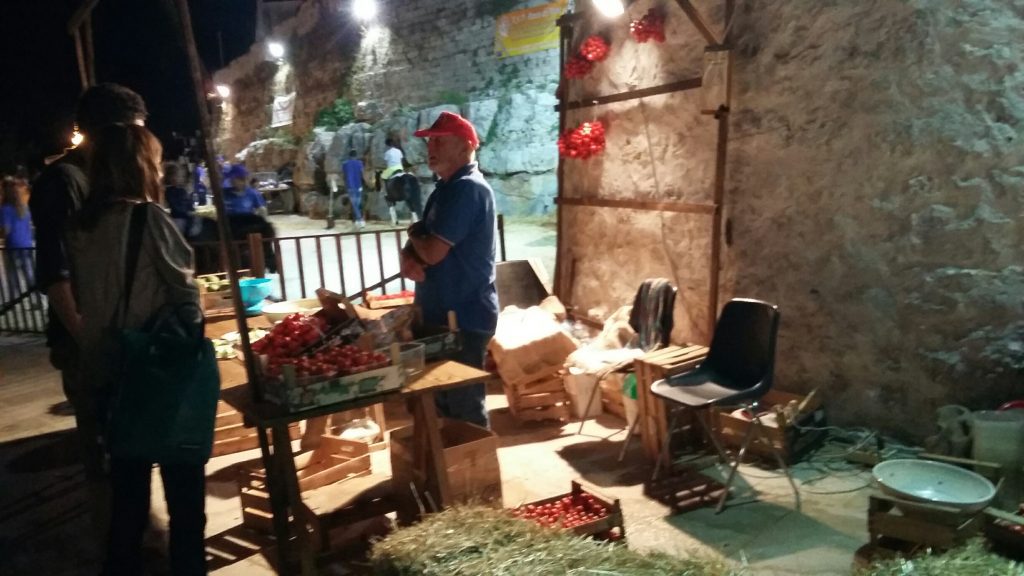
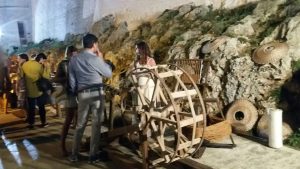

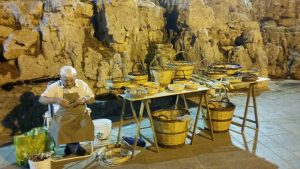
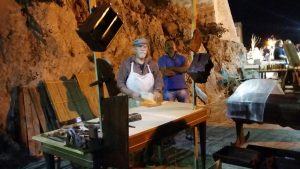
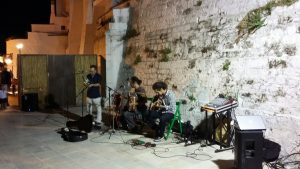
***
The Cavalcata di Sant'Oronzo and its associated festival
The town puts on a number of festivals and events throughout the year. The most notable of these is the Cavalcata di Sant'Oronzo and its associated festival, which takes place annually over three days 25-27 August, the Cavalcata itself being on the evening of 26 August (always the same date irrespective of which day of the week on which this falls). It is called the Cavalcata ("knights on horseback") because of the distinctive feature, 36 riders and horses in a highly colourful regalia.
Sant'Oronzo has been venerated as the "protector" of Ostuni since 1660; he is credited with saving the city from ravages of the plague, in particular using the whitewashing of buildings to signify cleanliness - the tradition maintained to this day.
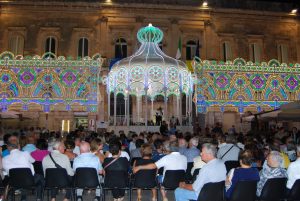
The festival extends for a day or so before and after the specified three days, so for about a week the whole city is taken over by an atmosphere of enjoyment. There are street musicians, dancers and performers (we have seen a man and a woman perform King Lear in less than half and hour, changing costumes and personalities every few seconds); and a series of open air concerts in the Piazza della Liberta every evening. It is a great honour to be one of the company of riders, and those involved stroll around the town for a few days beforehand, showing off their uniforms and promoting the festival among visitors. An impressive lighting display is erected throughout the central area, especially in the Piazza, where special stages host the nightly performances.
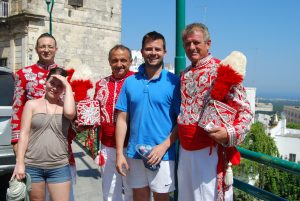
The musical and cultural entertainment provides a pleasant and lively back drop to the main event - a procession accompanying the silver statue of Sant'Oronzo carried shoulder high through the city. This leaves the Cathedral at 7pm on 26 August, descends through the centro storico to Piazza della Liberta, then proceeds into the newer parts of the town. Only ten riders are involved in the first section of the route, but they are joined by 26 more when they reach Piazza della Liberta. As well as religious organisations, the procession involves the Mayor and councillors, police and emergency services, various youth organisations, several bands etc. The red, white and silver uniforms of the horses and riders are traditional and highly symbolic, as are those of the various guards etc also taking part - mainly the designs date back to Napoleonic times. Crowds of visitors watch the procession throughout. The photographs here aim to give you a "feel" for it.
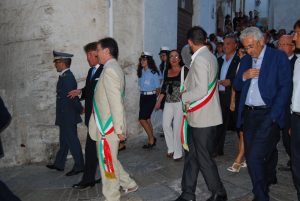
The nightly concerts start at about 8pm, and run through until 11.45pm in three 45 minute "sets" with breaks of 30-40 minutes between them for everyone to mingle, eat, get ice creams and drinks etc. Performances are by brass and woodwind bands from various towns in Puglia, the standard of musicianship is very high. Music is almost entirely by Italian composers, mainly versions of operatic works by Verdi, Donizetti, Puccini etc. but often the "Spaghetti Western" film music of Ennio Morrisone. This type of concert is very popular among all Italians, so the Piazza is always packed with people of all ages - but there is nothing stuffy about the performance, with members of the audience joining in occasionally, small children dancing around the stage and everyone enjoying themselves enormously.
Each year the concert on 26 August after the Cavalcata is special. The band is joined by professional singers for an evening of operatic highlights, many very well known pieces, but also some less often performed. All this is deeply appreciated by the audience and can be a very moving experience. Traditionally the third "set" is light hearted. So for example the soprano who earlier brought tears to our eyes with an aria from Madama Butterfly and the tenor who gave us Nessum Dorma come down the steps to the stage and lead the audience in a rendition of YMCA complete with actions! But at midnight, just after the concert comes to a climax, a massive explosion reminds everyone to rush round to the Ostuni ramparts to see the spectacular firework display which concludes the day's festivities.
n***
November - the new Autumn festivals
The regional and local authorities throughout Puglia have recently been making strenuous efforts to attract visitors outside the very busy summer months. This has involved the promotion of large scale public concerts in various locations (including Ostuni) and support for a range of local festivals and events.
In Ostuni, November has traditionally been something of a "dead" month except for some guided tour groups which continue much as usual. There is a burst of activity on 1 November, All Saints Day, which is a public holiday; this has become slightly linked to Halloween, so a lot of pumpkin lanterns are around.
However, the first weekend in the month has now been developed as an International Festival of Street Performers; and on the last weekend a totally new festival has been initiated - the Vicoli d'Autunno ("Autumn Lanes").
The Street Performers Festival has developed from an established annual event on one day. It has been extended across a weekend, and also spread outside the centro storico to embrace surrounding streets and also the Villa Communale (town park). All sorts of street artists, performers and musicians are involved, with activities for children, food and drink stalls etc.
As always in Italy, food features prominently.
The Vicoli d'autunno also has street performers, but it is mainly based on music and dancing - especially by a newly established Ostuni group called Le radici del sud ("Roots of the South") who have rapidly gained a reputation regionally and nationally for their pizzica and taranta displays. The group includes talented instrumentalists, singers and dancers, young and old, including some keen children.
n
Stalls selling local specialities are set up in the streets, and roasted chestnuts (always popular at this time of year) provide a suitable background aroma. Small groups of musicians (including some dressed as Father Christmas) parade though the streets. And simple street decorations are set up - brown leaves, multi-coloured wooden crates, umbrellas and straw hats in bright colours strung from the rooftops.
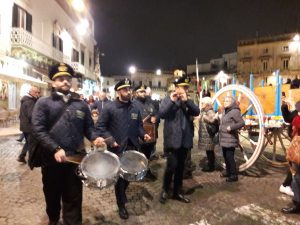
Both these events attract good crowds of people, in a lively, friendly, family atmosphere. Most people are Italian, many of them visitors to the town. The authorities are hoping of course that foreign visitors will also start to come in greater numbers, to see another side to Ostuni and Puglia.
***
Christmas,New Year and Befana in Ostuni
The Christmas/New Year period in Ostuni is a lively, interesting season, and certainly a great time to visit. Visitors are expected to just mix in and enjoy it along with local people.
Until 2019, the pre-Christmas period was low key, and much less commercial than in other countries. The Festival of the Immacolata on 8 December marked an unofficial start to the Christmas period. After this shops stayed open late on a couple of nights for Christmas shopping, and from about a week before Christmas some illuminations were installed including a tree in the Piazza della Liberta.
However, 2019 is different. As part of the efforts by the authorities to encourage tourism and business outside the main summer season, a project to anticipate Christmas has been undertaken. This involves extensive street illuminations, concerts, outdoor activities, street markets and events, commencing alongside the Vicoli d' Autunno festival on the 23 November, then being repeated every weekend until 20 December and daily from then through until 7 January.
For the first time there was a "switch on" of lights by the Mayor in front of a large crowd. The front of the Town Hall has a massive display of lights.
As well as the Piazza della Liberta, there are illuminations and activities in Via Cattedrale and the centro storico; the streets leading away from the Piazza; around the city walls; in the nearby Villa Communale (the Town Park) where a small funfair is operating; and on Viale Pola, the main shopping street. Special concerts, exhibitions and cultural events have been arranged in the weeks prior to Christmas. If this initiative is successful and continues, December looks like being more lively than in the past, especially at weekends. And the traditional Christmas/New Year events will of course continue and will probably attract more people.
Both Christmas Day and even more so Christmas Eve are very family oriented in Italy, and although the main restaurants provide special meals (booking essential), lots of businesses close. However, there are signs of change. Some of the bars and restaurants are now opening on Christmas Eve and putting on entertainment (mainly singers). This is a trend which seems set to continue, which is good news for visitors.
There are of course religious services in all the churches.
The three special seasonal events/activities, all of which should be experienced if possible, are:
- il presepe vivente (the "living crib")
- San Silvestro/Capodanno (New Year's Eve and Day)
- Viva Viva Befana (a special celebration on 6 January)
Il presepe vivente - the "living crib"
Models of the nativity scene (usually called a "crib" in English) are a major feature of the Italian Christmas. Most churches feature one or more. They are often elaborate and extensive reproductions of Bethlehem at the time of the nativity, with special lighting effects, timed displays, moving features and figures. A crib building competition is quite common, and in Ostuni the competition submissions are displayed in the Pre-Classical Museum on Via Cattedrale.
Much more dramatic is the presepe vivente, or living crib. This involves people re-enacting aspects of the nativity and related aspects of life at that time. Many places in Italy maintain this tradition - there is an especially large scale presentation in Naples, people travel from all over Italy to experience this.
In Ostuni, the presepe vivente takes place on three or four evenings after Christmas - one of which is on 26th December, the others between then and 6 January. Unlike processions where the participants walk and visitors watch, visitors walk on a prescribed route through the narrow streets. Along the way local people in costume take part in a series of tableaux which occupy most of the doorways, rooms, balconies and courtyards fronting onto the streets. The start of the route is on Via Cattedrale, guarded by Roman soldiers, sometimes on horseback. From time to time the soldiers arrest a visitor and put him/her in the mock-up prison which is one of the scenes on the route.
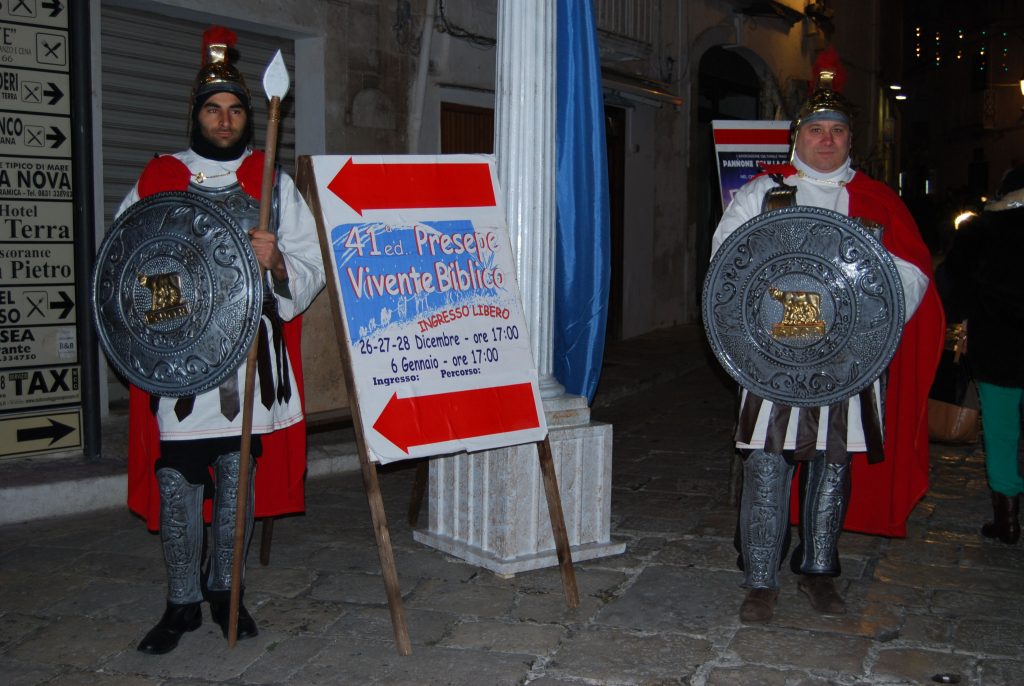
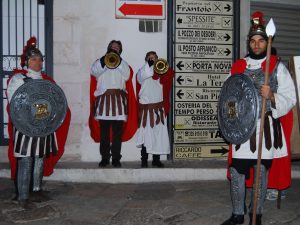
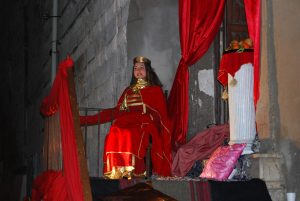
Tableaux scenes include the rich, the poor, Herod's Palace (sometimes with Salome dancing), temple priests, workshops of various kinds etc. Demonstrations of weaving, baking, pottery making, metal work etc are all featured, but this is completely non-commercial.
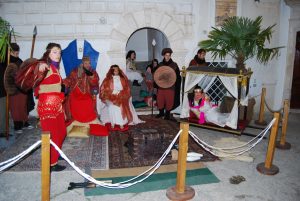
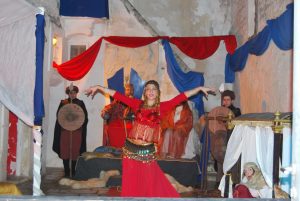
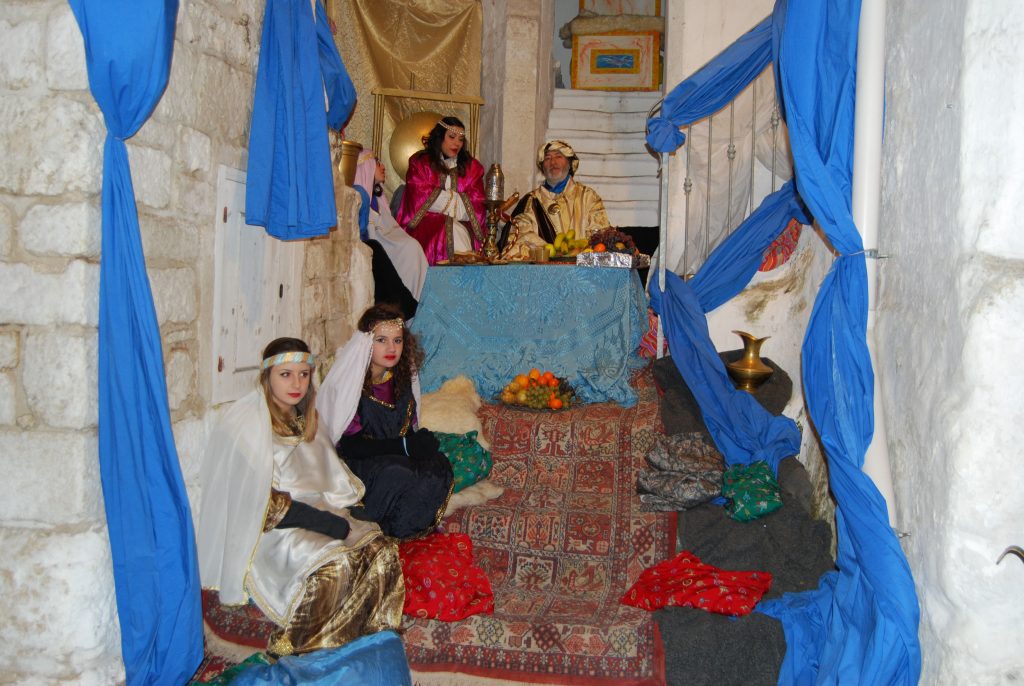
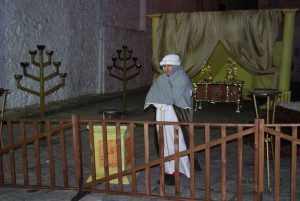
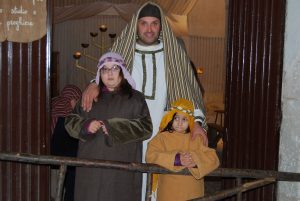
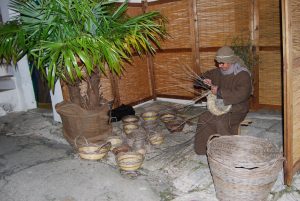
_
There is also as usual traditional folk music and dancing. You can join in if you want.
The highlight is of course the nativity scene itself - in a stable, with Mary, Joseph, a real ox and ass, and of course a baby from the locality.
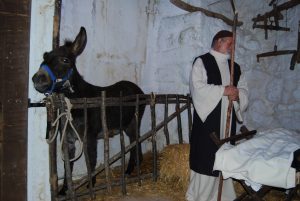
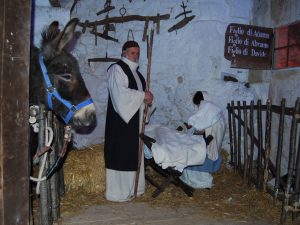
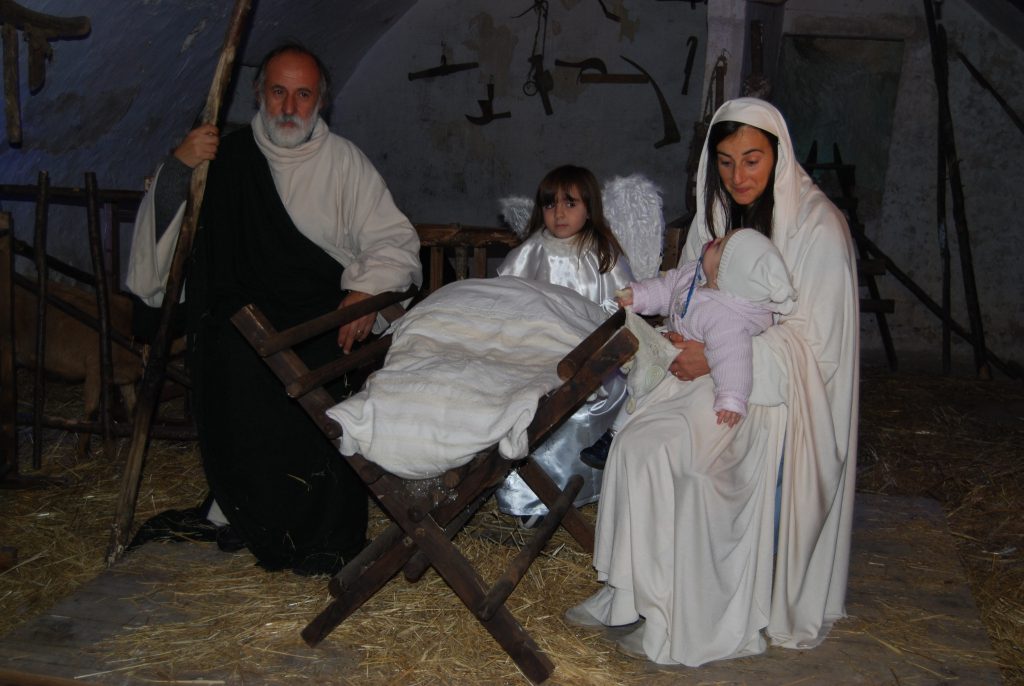
The whole route takes maybe 30-45 minutes to follow (unless you are put in prison or you stop to join the dancers). It opens round about 6pm and runs for about three hours. The participants are of all ages, and it is refreshing to see so many young local people involved, helping maintain this ancient tradition.
San Silvestro (New Year's Eve) and Capodanno (New Year's Day)
New Year's Eve is celebrated in Ostuni in much the same way as many other places throughout the world - with a big party.
Most of the restaurants are open and offer a special menu, moderately expensive but generally good value. This is a popular night for Italian family parties so advance booking is essential. The atmosphere is very lively and positive, and everyone is welcomed. Prosecco is always produced at midnight.
However, in the Piazza della Liberta a concert kicks off at about 9pm and runs through until the early hours, featuring a variety of music - rock groups, bel canto, gospel choirs, samba bands, accordions, brass have all featured in recent years.
New Year's Day is similar to a Sunday, with a traditional long lunch from about 1.30pm (again most restaurants are open) preceded by a passeggiata - and dressing up properly for this is essential!
Viva Viva La Befana - Ostuni's Epiphany bonfire party
Epiphany on 6 January is an important religious festival (celebrating the arrival of the Three Wise Men in Bethlehem) and also a national holiday in Italy. It marks the end of the Christmas period. It is also the opportunity for children to hang up stockings and get presents. This practice is linked to a legend about a witch, La Befana, who comes on a broomstick during the night of 5 January with presents.
The legend is believed is thought to be possibly of pagan origin, associated with the end of the Roman winter solstice Saturnalia festival when Romans went to the Temple of Juno where an old woman would tell their fortunes. It is said that on the night before the Wise Men reached Bethlehem, they asked the way of an old woman in a hovel. They explained their mission to give gifts to the new born Jesus and invited her to come with them, but she declined saying she had too much to do. But later on she saw a bright star and changed her mind. She set off with presents which belonged to her own child who had died, but could not find the way and never reached the stable. So for ever after, on 11th day after Christmas, La Befana flies everywhere on a broomstick delivering gifts to children, hoping one of them might be the baby Jesus. And all over Italy children hang up stockings on the night of 5 January so as not to miss her.
Many places in Italy have a La Befana celebration on 5 or 6 January each year. In Ostuni, this is usually organised by the town's famous folk group - Il Gruppo Folk della Stelle. It takes place in the evening on the site of the Saturday market, starting at about 6.30/7.00pm there, but preceded by a procession of bands, dancers, jugglers etc from the Piazza della Liberta which starts about an hour earlier.
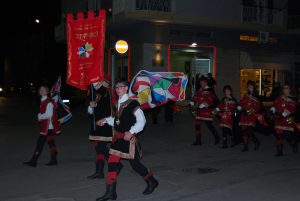
On the large car park area there are stalls selling traditional pastries and mulled wine; a witch (a very friendly witch! in a stall greeting children and giving them small presents; a few fairgound attractions and a trenino for short train rides around the site; and various entertainers walking round in costume, on stilts etc.
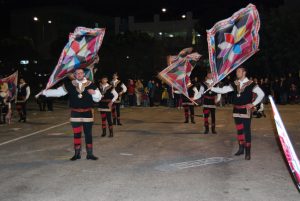
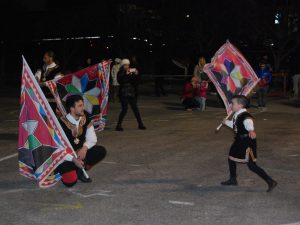
There are displays of various sorts, which can include the Carovigno flag wavers, ballet dancing in huge plastic bubbles, trapeze artists, magicians etc. On a special stage on there are displays of dancing and singing, with a special dancing contest for children. The site is dominated by a huge pyramid of olive branch cuttings in bales, on top of which there is an effigy of La Befana - the evening concludes at about 9.00pm with this being lit to provide an enormous bonfire.
There are very few foreign tourists at this event, it is quintessentially Italian, so if you are around Ostuni at this time, do not miss it - wrap up well, it can be cold. Interest and enjoyment are guaranteed.
***
Carnevale in Ostuni
Carnevale (which means "say goodbye to meat"!) is an unstructured "party season" preceding the austerity of Lent. Of pagan origin, it is celebrated in most countries of Roman Catholic tradition, with street music and dancing, fancy dress, traditional masks, huge models/puppets and general revelry. The season finishes on the last day before Lent, Martedi Grasso (Fat Tuesday, known elsewhere as Mardi Gras - Pancake Tuesday is the minor British recognition of this occasion). Although this is the "big day", it is usual for celebrations to extend over a few days or even weeks leading up to it. Because the date of Easter varies, Martedi Grasso can be anywhere between 3 February and 9 March.
The most well known Carnevale in Italy are Venice and Viareggio (which has enormous grotesque models mounted on lorries). In Puglia, the main ones are Manfredonia and Putignano. The Putignano Canevale claims to be the longest in the world. It actually starts the day after Christmas, and as well as Martedi Grasso and 26 December, big parades take place on three Sundays in between.
In Ostuni Carnevale is fairly low key but still very lively. As well as the evening of Martedi Grasso, activities take place over the preceding weekend, especially on the Sunday. Unusually it is focused on the main shopping street, Viale Pola, not the Centro Storico or Piazza della Liberta. It involves outside concerts, a parade of floats on the backs of lorries, traditional dancing, street food etc. Children especially come in masks and fancy dress, and confetti is thrown around in great quantities (we are amazed how quickly it is all cleaned up for the next day!). If you are in Ostuni at this time, defintely go and have a look at the Tuesday evening (it usually says start at 5.30pm, but nothing much happens before 7pm!) - it is traditional and oriented to local people, not tourists, and has simple charm. A good place from which to watch things is from the Cafe Ricreazioni.
***
La Passione - the Sunday before Easter
The Sunday before Easter is an Ostuni highlight. As elsewhere, it is known as Palm Sunday (Domenica Palme). However, you may be handed a sprig of olive, a sign of peace. There are various activities in the day, but the big event is in the evening, when there is a re-enactment of the passion of Jesus Christ, professionally produced but with local people in the cast. The local authorities have put a lot of money and effort into getting this established over the last five years and if you are here at this time it is not to be missed. But be ready to stay up late, it is not rushed!
Each year is different because there is a different director, but the description here gives a good idea of what is involved.
It kicks off at about 8pm with a dramatic presentation of the events of Holy Week in the Chiostra di San Francesco, the cloisters off the main Piazza della Liberta, where many Ostuni events are held, and outside in the Piazza. The show lasts about an hour, featuring actors and readers against a background of filmed images. As well as a large audience inside the cloisters the show is displayed on an external screen to an even bigger crowd in the Piazza.
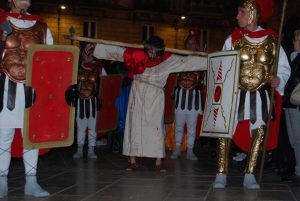
Then the procession to Calvary commences. Jesus leaves the Chiostra carrying the cross, flanked by Roman soldiers and followed by his weeping friends and relatives, including many women chanting Ave Marias throughout.
The procession moves very slowly, initially up Via Cattedrale where the spectators line on either side. Then into the much narrower Via Bixio Continelli with its arches, where the following spectators and participants simply merge into one another, a weird experience for non-religious observers.

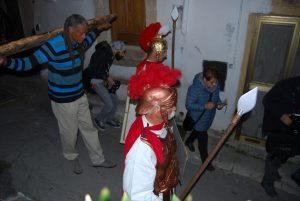


Half way along this narrow street there is a simulated flagellation, and then someone representing Simon of Cyrene steps out of the crowd and carries the cross for a section - someone who does this sometimes is our friend who does most of the property painting in the centro storico (he is nearly 7 feet tall with dreadlocks, a well known local character).
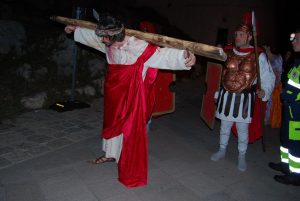
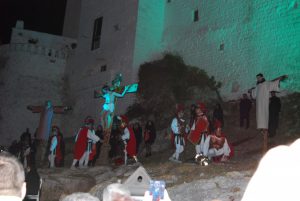
The procession ends on the ramparts, where against a floodlit background of the rocky bastione, Jesus is nailed to the cross and the cross erected between two others. The event concludes with contemporary readings and music of various sorts ((our daughter has been involved in this as part of a choir).
Throughout the whole of these proceedings, the large crowd is normally almost completely silent - very unusual in Italy. However, at the end, all the participants and producers line up to take a bow and receive massive applause from the audience. This is a religious performance, but always a performance rather than a religious ceremony. The local people are massively proud to take part and maintain this centuries old tradition.
***
BACKGROUND AND PRACTICAL INFORMATION
HISTORY OF OSTUNI
GETTING TO OSTUNI
TOURIST INFORMATION POINTS
History of Ostuni
Ostuni - “La Citta Bianca” or “White City” – is a town with a long history. This is reflected in its complicated structure and architecture, with developments in one period superimposed on those from previous generations.
The area generally was settled in Stone Age times. Archaeological excavations around Ostuni provide a good picture of life in pre-historic times. Details of this are shown in Ostuni's Museum of Pre-Classical Archaeology. Exhibits there include remains of a young pregnant woman who died in a nearby cave about 25,000 years ago.
The town was founded as a fortified hilltop settlement by the Messapii, a Bronze/Iron Age people who inhabited this area for about five centuries in pre-classical times. Not far away from Ostuni, the important remains of the Messapian city of Egnazia are evidence of the significance of these people and their culture.
The Messapii were partially absorbed into the Greek empire in the Italian peninsula, but then associated with the expanding Roman empire and involved on the Roman side in the Punic Wars (2018-201 BC); as a result Ostuni was destroyed by Hannibal in 2016 BC. The Greeks rebuilt the city on the ruins of the old one (the name Ostuni comes from Astu neon which in Greek means “New Town”). This Greek influence on its structure and architecture has persisted until the present day.
The Romans took over Puglia and Ostuni from about 100 BC. There is little evidence of the Roman period in Ostuni, although of course Brindisi and its vital road links the Via Appia and Via Traiani are major reminders of the significance of Puglia to the Romans.
The Roman empire disintegrated in about 400 AD. Ostuni then went through a long period when it was occupied by various groups vying for power in the Italian Peninsula - Lombards, Goths, Saracens and eventually the Byzantines (the remnant of the Roam Empire based in Constantinople). This seems to have been a period of economic decline for the city. However, in the 11th Century AD, it came under the rule of the Normans, who had fought the Byzantines and established their domination of southern Italy and Sicily, providing both stability and economic prosperity. In the 12th Century, the Norman Count Godfrey of Lecce built a castle on the top of the hill (subsequently destroyed, the remains of it are claimed to be part of the Osteria della Piazzetta) along with fortified city walls. The medieval city developed around this - the area of the centro storico dropping down from the piazza in front of the cathedral and on the Porta Nuova side of Via Cattedrale, an area known as La Torre, is the oldest part of the current Ostuni, with some structures dating from this period.
The Normans were succeeded by Swabian (Sveva) rule, associated mainly with Frederic II, in the 13th Century. During this period, the economy prospered, the fortifications of Ostuni were expanded (including the walls and four city gates). Many of Puglia's main cathedrals date from this time, built in Romanesque style. Ostuni's cathedral was among them, constructed on a site long used for religious purposes; although it has been extensively modified and extended since.
Puglia became part of the Kingdom of Naples in 1282, and remained so until Italian unification in the 1860's. Ostuni was ruled by whichever branch of European aristocracy ran this Kingdom. Initially this was the French House of Anjou (Angevin), subsequently by various Spanish dynasties, notably the Aragonese. Puglia, a long way from their seats of power, experienced two centuries of neglect and decline, and also suffered extensively from coastal raids by the Turks.
However, from 1507, Ostuni benefited from the rule of Isabella of Aragon and then her daughter Bona Sforza. These two queens developed the city as a centre of commerce and culture. Its population grew to about 17,000. Much of the current centro storico dates back to this period, the city walls and gates were improved and extended, and a series of fortified towers to defend against Turkish attacks were built along the coast, many of these surviving to this day.
The 17th Century was a period of decline for the town. It was at this time that plague epidemics apparently encouraged the organised application of lime whitewash as a disinfectant - now enshrined as Ostuni's trademark as "La Citta Bianca". By contrast the late 18th Century saw increasing prosperity and considerable expansion beyond the old city, which continued into the 19th century, mainly into the area now referred to as the 19th century zone. Rule was from Naples under the Spanish BouRbon dynsasty, which generally seems to have left Ostuni to itself and its leading families/merchants.
The early 19th Century was dominated by the Napoleonic wars. The Kingdom of Naples was ruled for a time by Napoleon's brother in law, Joachim Murat, who instituted a number of reforms including the abolition of feudalism, of huge significance in Puglia. After 1815, Naples and Sicily were united as a Kingdom under Bourbon rule. Puglia was a vital part of this Kingdom, and there was considerable investment and development of agriculture, infrastructure and industry.
The struggle to realise a united Italy finally succeeded in the period 1848-1870. Puglia, including Ostuni, was part of this, ruled initially from Turin, then from Florence, then Rome. The unification of Italy caused a massive downgrading of the then much richer southern part of the peninsula, and Puglia suffered badly as a result, benefiting little from the strides being made further north. There was massive emigration at this time, prompted by famine and poor government.
The Fascist period saw some investment in agriculture, infrastructure, reclamation of marshland and malaria control. The Second World War led to considerable bomb damage (especially around the strategically important Foggia) as the Allies, by then including Italian troops after Italy surrendered in 1943, fought their way northwards against strong German opposition. Ostuni however was fortunate to escape war damage.
Since 1945, Ostuni has focused on establishing itself as a major agricutural centre and tourist destination. For a considerable period Puglia generally saw many of its people leave for better economic prospects in the north or abroad. More recently this exodus has declined and to a limited extent Puglia is attracting people from elsewhere. Ostuni is now rated as the fifth most popular tourist destination in Italy.
Getting to Ostuni
Reaching Puglia by air, train and road
Full information about reaching Puglia is given elsewhere on the website.
Getting to Ostuni by public transport from Brindisi airport
Visitors to Ostuni using Brindisi airport often hire a car from the airport. However, for those who do not want to hire a car, or who prefer to hire a car only for part of their stay, it is easy enough to get between the airport and Ostuni by bus and train.
We have done the trip from Ostuni Centro Storico to the airport in 75 minutes, but if you have to wait for buses/trains it will take longer, so best to assume a couple of hours or so. The bus services are OK every day. However, on a Sunday you need to check the train times, as the service is considerably reduced, with a train only about every 90 minutes. So leave Ostuni at an appropriate time to avoid a wait at the station there. And if you have to wait at Brindisi, take the opportunity to try any of the bars and restaurants close to the station.
The total cost is about 8 euros per person for the whole trip, which compares with at least 60 euros by taxi.
Bus from airport to Brindisi station
There is no shuttle bus between the airport and the railway station in the middle of Brindisi. Get the STP bus AE which stops just outside the main terminal entrance, near the taxis. It is an ordinary service bus, running every 30 minutes between 5.30am and 11.45pm every day including Sundays and holidays (usually quarter to and quarter past the hour). If there is no bus waiting, ignore any helpful taxi drivers who tell you that you have just missed one and will have to wait for ages. If you want to see a timetable, click on http://www.stpbrindisi.it/index.php/2012-01-19-12-07-43/bus-aeroporto.html then call up the PDF from the bottom of the screen.
The fare is 1 euro per person. You can buy a ticket on the bus for 1.50 euros from the driver, or on some buses by having exact change for a machine; but as usual in Italy it is best to buy a ticket beforehand in a bar or tabacchaio (small shops with the "T" sign) - at the airport the book and magazine shop Libreria Giunti is the designated sales point. So get tickets before you leave the airport terminal.
On the bus, there is a small machine where you must get your ticket validated; if this does not work show your ticket to the driver, who may tear it in half. If you do not have a ticket, ask the driver or if there is one buy a ticket for cash in a small machine separate from the validating machine. If you do not have a ticket and do not have any small change, ask the driver, who may well wait while you nip to the Libreria, or shrug his shoulders and tell you to sit down and enjoy the ride. But do not just get on the bus and try to travel without a ticket.
The bus service will not say Brindisi Station on the front, it goes further. You get off at Piazza Crispi, right in front of the station building, which is five stops, and on the timetable is supposed to take 13 minutes. The driver will no doubt tell you which stop if you say you are going to the station when you get on.
Train from Brindisi to Ostuni
There are frequent trains to Ostuni, so you should not usually need to wait more than 30 minutes; except on a Sunday. Departure times are displayed on various screens, most Ostuni trains will be headed for Bari, sometimes beyond. There are different categories of train, but usually the trains which stop at Ostuni will be Regionale trains - these are also the cheapest.
You can get train tickets to Ostuni at the ticket office; at the Tabacchaio/bar; and from the ticket machines if you have a credit or debit card which uses a PIN. It is usually quickest and easiest to get tickets from a machine - these are easier to use than their equivalent in the UK, although as in the UK sometimes they are not working. This is what you do:
- Get your credit card ready
- Touch the flag to get a service in English and wait a few moments.
- Touch to buy tickets
- Touch on the destination if Ostuni is displayed as an option, or touch for other stations - then touch on the letters on a keyboard until Ostuni is displayed and confirm.
- The next few trains will be displayed with their times and prices. The normal price for a Regionale train is 3 or 4 euros euros per adult (NB children 0-3 go free; children 4-11 go half fare on Regionale trains). Other categories of train will be more expensive. Touch the train you want (NB it is not a huge station, so if a train is due in say 5 minutes, go for it).
- A screen comes up asking for how many adults and how many children. Touch the + sign to increase the number shown - just touch it once and wait for the figure to change, this often takes a few seconds. Then confirm.
- Your order is confirmed (sometimes you get a warning that there are some restrictions on ticket use, just touch on OK to these) and then you are asked if you are paying by credit card. Confirm (there is in most cases no cash option anyway) and look at the little screen on the credit card attachment on the right hand side of the machine.
- Wait for an instruction on the screen to insert your card. The machine will start to talk to you at this point as well, which can be unnerving. Insert your card, enter the pin in the usual way, then extract your card - the machine will be shouting at you throughout this process. (NB There is also a contactless option as well, if you use this have patience, as everything seems to go dead for a bit before you get a confirmation!)
- Pick up your tickets.
If the sequence does not work out, it is worth starting again once, or using a different machine. But if you don't succeed twice, go to the ticket office.
Once you have got your tickets, find the platform and the train. But first you have to validate your tickets by inserting them into the small "convalidare" machines dotted around the station. This is important, so don't forget to do it. Just stick one end of the ticket into the machine until it is stamped.
Ostuni is often the first stop after Brindisi, sometimes there are one or two stops first, at San Vito and Carovigno. It takes about half an hour. The train usually arrives at Ostuni platform 1 so you can exit the station straight away without going under the subway.
Bus from Ostuni station to the Ostuni Centro Storico
Then get a bus to the centre of Ostuni, getting a ticket first at 0.90 euro from the station bar. The buses are roughly every 30 minutes, often meet trains, and the trip to the centre takes about 10 minutes. See our separate information about the buses between Ostuni station and Ostuni centre.
Reverse direction - Ostuni to Brindisi airport
To get from Ostuni to Brindisi airport, the reverse of the above applies. See our separate instructions about getting a bus to Ostuni station. Since you are going to catch a plane, you will almost certainly have checked on the bus and train times first. If you get to Brindisi station an hour before you want to be at the airport, you will be OK for a bus there. The bus stop for the airport bus at Brindisi station is right outside the station entrance and is clearly marked. Tickets can be bought at several nearby bars etc:
- Bar Chiosco, on Piazza Crispi
- Edicola Stazione, Piazza Crispi (the station magazine/bookshop)
- Tabacchaio Pacifico, on Basione San Giorgio, which is across the small piazza and then a few yards to the left.
Getting to and from Ostuni centre from Ostuni station
Ostuni station is about 2km from the town centre. There is a bus service linking the station to the Centro Storico and other parts of the town centre.
Bus services at the station are mainly timed to connect with trains to and from Bari, Brindisi and Lecce; they allow five minutes flexibility when trains are running a bit late. There is a bus about every half hour for most of the day, and services start very early and run very late. It takes about 10 minutes to get from the Station to the Centro Storico and vice versa.
The buses are either small buses or mini buses. Some run between Ostuni and the Station, several are running between Villanova (Ostuni's marina) and Ostuni calling in at the station on the way. Do not be concerned if a bus detours briefly to stop at the cemetery, that is normal on many services. (Occasional buses shoot out to a nearby hospital, just keep calm if this happens!).
You can see a timetable by clicking here and then opening the pdf for services between Ostuni, the Station and Villanova - Feriale is weekdays including Saturdays; Festivi is Sundays and public holidays. A timetable is posted at the Station and also outside the Tabacchaio on Piazza della Liberta.
Arriving by train, at the Station, the bus stop is right in front of the entrance and there may even be a bus waiting for the train you are on - if so let the driver know you are getting on as you will need to buy a ticket at the station bar - it will cost 0.90 euros. When you get on the bus, stamp your ticket in the validating machine - if it is not working, which is often the case, show your ticket to the driver who may tear it in two.
In the unlikely event of the bar being closed or for any other reason you can't get a ticket in advance, you can pay the driver, but it will cost 1.50 euros. If you do not have a ticket and do not have any small change, ask the driver, who will usually wait while you nip to the Bar Stazione, or shrug his shoulders and tell you to sit down and enjoy the ride. But do not just get on the bus and try to travel without a ticket.
If you have to wait for a bus or a train, the station bar is a good spot, with excellent coffee; or there is a waiting room in the station. There are no seats outside by the bus stop. Do not attempt to walk to the town centre, it is a dusty trek along a main road. Taxis (there are plenty of numbers displayed) are available but expensive, as in Italy generally.
The bus trip takes about 10 minutes. The route into town varies, depending on whether or not traffic is being allowed through the Piazza della Libert, which is the case most of the summer, on winter Saturday evenings, public holidays and quite often at other times if something is happening. However, all the buses stop next to a car park on Via Tenente Specchia, close to the centro storico, and it makes sense to get off there. The bus takes a sharp right turn into Via Pisanelli - this is easily recognised by the Teatro Roma on the corner and the arched Porta Nuova up on the left; it then takes another right turn after about 200 metres to reach the bus stop. From the stop, walk back the way you have just come, turn left, then right by the Teatro Roma, then left along Corso Mazzini, the Piazza della Liberta and bottom of Via Cattedrale are about 100 metres walk along this street. (Or you can go into the Centro Storico by walking up the steep slope above the Teatro to reach Porta Nuova).
The services towards the station start in Ostuni at Viale dello Sport in the newer part of town, and then take a circuitous route before they reach the stops where most visitors to the Centro Storico will board. If you refer to the timetable – see link - (make sure you are looking at the feriale/weekday or festivi /Sunday & public holiday version as appropriate and please look at any small print), then get to the stop you need about 20 minutes before it shows arrival at the Station. The buses used to run through the Piazza della Liberta stopping outside the tabacchaio, but they now run below the centro storico. The most convenient stops are by the car park entrance opposite Chiesa della Carmine, about 300 metres down from the steps from Piazza della Liberta through the smaller Piazza and Via Pinto. Or on the right hand side of Via Tenente Specchia – be careful when getting on here and check with the driver that the bus is going towards the station, as the buses away from the station also stop here.
You can purchase tickets at the Tabacchaio in Piazza della Liberta for 0.90 euros, but this does not open until 7.30am and later on a Sunday, so if you are getting an early bus it is sensible to get the tickets in advance. Otherwise you can pay 1.50 euros on the bus.
***
IN THE COUNTRY - WHAT IS HAPPENING ON OUR LAND
The most interesting things which take place on our land are the harvests in the period between August and December - the olive harvest in particular. However, the rest of the year involves a lot of hard work which is less spectacular but absolutely essential. This includes
- strimming to keep ground cover under control - this demanding job dominates activity in the May to July period, vital to minimise fire risk, but also to reduce the potential for diseases spreading to the trees
- thinning the trees to get rid of unproductive, dead and diseased branches and also to facilitate light reaching the central growth - this chainsaw work is concentrated into the winter and early autumn, the branches cut off are trimmed to produce firewood for personal use, the rest dragged into bonfires for burning when dry, all very hard work and time consuming
- pruning - the vines are usually pruned in February and in May/June, the vineyard has to be strimmed first
- property maintenance, painting etc - this is done in February/March usually, before guests arrive at the trullo
- weed control on tthe pathways, cutting back the prickly pears and getting rid of dead growth etc - endless tasks!
But here we focus on the more interesting harvests and associated production.
AUGUST/SEPTEMBER - HARVESTING ALMONDS
SEPTEMBER/OCTOBER - GRAPE PICKING AND PRESSING
OCTOBER/NOVEMBER/DECEMBER - OLIVE HARVEST AND OLIVE OIL PRODUCTION
***
August/September- harvesting almonds
We have about 500 almond trees on our land, although a lot of these are very small.
One of the best things about the almond trees is their blossom, which provides a cheerful display of colour in February and March.
The almonds develop during the summer and the almond collection season extends through August and September. It involves a lot of hard work (much more so than olive picking). We rope in anyone who wants to lend a hand at any stage, even a few keen trullo guests, it can be quite sociable.
The branches are shaken and the tree bashed with a long pole to get the almonds to fall down; then we bend down and pick them up off the ground. Simple! We have tried to get them to fall into nets to make it easier to spot them on the ground, but as they fly all over the place it is not a lot of help. This process continues until we have got a few tubs full of almonds, still with their husks on.
We then spend ages ages taking off the outer husks. This is done sitting down, and can be done while chatting over a cup of tea/coffee or a glass of wine - but we just have to stick at it. The nuts are inside husks (similar to a chestnut in a husk); these are mainly already split slightly when they come off the trees, so getting the nuts out is not difficult, but can only be done one nut at a time.
The nuts (still in shells of course) are spread out in the sun to dry off for a short time, and fill up tubs to take to a dealer; we get payment by the weight. We ourselves only shell a few almonds for personal use.
In 2016 and 2017 we took an estimated 100,000 almonds to the dealer. A lot of work for not much money - but every farmer says that! It only makes sense because the almond trees do not require much maintenance; and harvesting. more especially the de-husking, can be fitted in with other things. If we are otherwise busy we just pick a few. In the last couple of years we have been less assiduous as the price we get for almonds has been so low.
***
September/October - grape picking and pressing
Puglia is Italy's most prolific wine producing region. Most of this is on a large scale, with commercially operated areas of viticulture and centralised pressing and wine production. Grapes are usually picked during the period September - October, so there is a lot of activity in the countryside generally at this time of year. And the end of the harvest is celebrated by a string of wine festivals in many towns throughout the whole of Puglia.
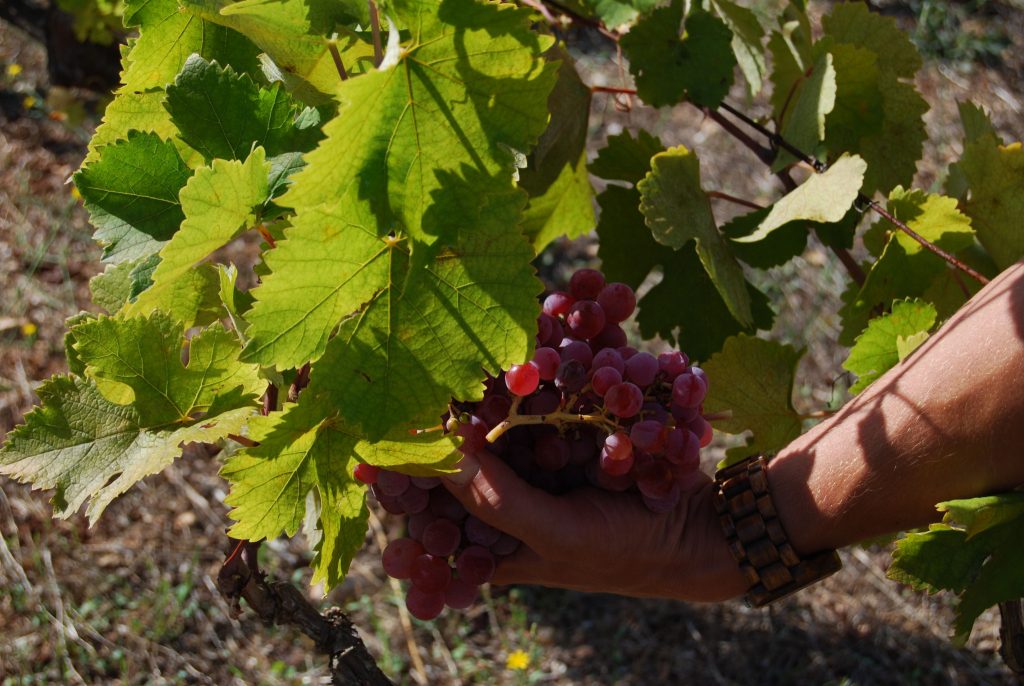
Ostuni is more closely associated with olives than grapes (although there is an Ostuni wine DOC). This is certainly true of our own land. We produce a reasonable amount of high quality olive oil for sale; but we only generate a small amount of wine from our vineyard, and although its quality is acceptable, consumption so far has been restricted to family and friends!
We usually describe our vineyard as "small", but this is only by Puglia standards - it is a about a hectare in size (about a quarter of our land area) and there are 750 vines. It certainly does not feel "small" when pruning or strimming!
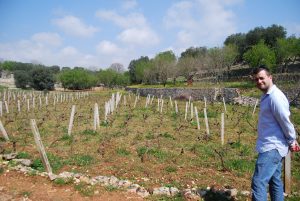
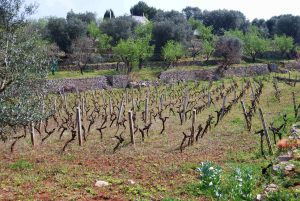
The vines are all well established. The hard work of managing the vineyard is not the harvesting, it is the lengthy process of pruning the vines and keeping down the weeds in between the rows - this is a pretty well continuous process during throughout the year, especially in the February-June period.
The amount and quality of the fruit depends heavily on the weather conditions. We do not irrigate the vines, so the grapes vary from year to year, depending on the amount of sunshine and rainfall. Vines have deep roots, so rainfall during the winter and spring, which is absorbed into the ground, is very helpful. Sunshine in July and August, guaranteed here in Puglia, is essential.
We keep a close eye on the grapes from mid August, aiming to pick them at their peak, just before they start to dry up, which is sometime in September. Picking the grapes is easy enough - stems containing bunches of fruit are cut of with secateurs and put into a tub. We separate the better quality red grapes from the rest (which vary from green to deep pink in colour).
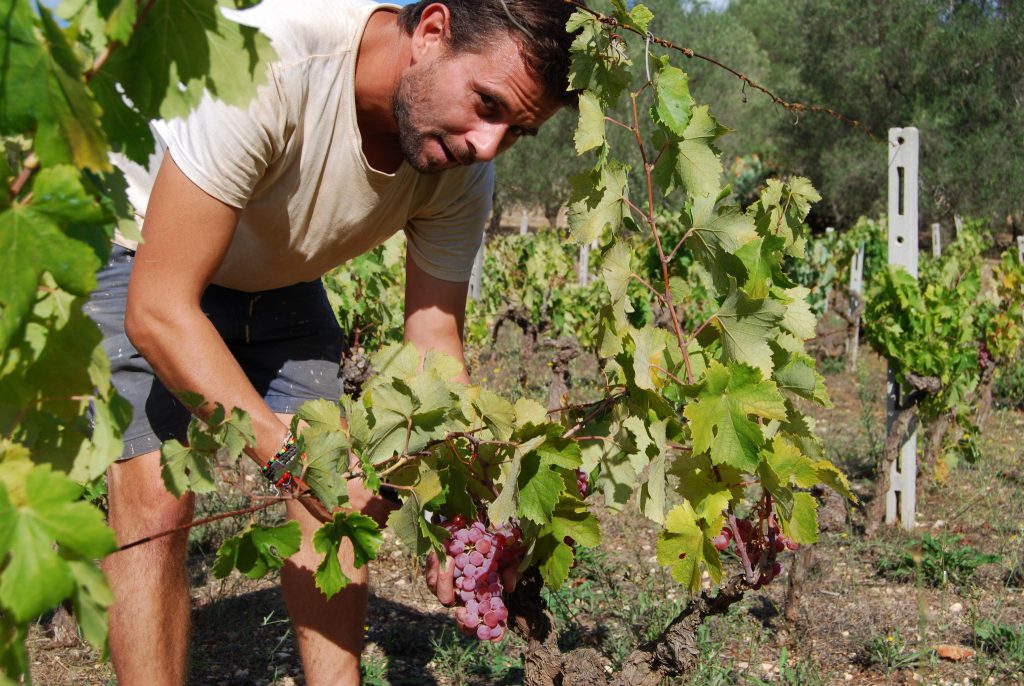
Once picked, the grapes are transferred into a large plastic tub where they are trodden thoroughly with (clean!) bare feet to start the pressing process. It is great to maintain this well known part of the tradition.
The contents of this tub are poured into the top of our olive press - a wooden frame with heavy iron weights pressed down by a ratcheted corkscrew device. Pushing and pulling the ratchet lever presses the weights down onto the grapes - this is really hard work. The juice slowly flows out and is collected to be put into large glass jars (demijohns) for the main fermentation process - this takes place in our storeroom underneath the trullo terrace.
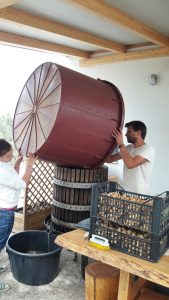
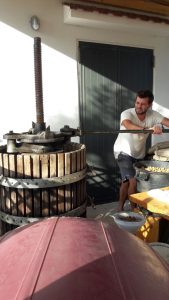
Fermentation takes about a year. The wine is then siphoned into glass containers or bottles ready for drinking. We can generate about 200 litres of wine, although this could be increased with better management of the vines. Although the quality has improved as we have gained experience, and is up the standard of other domestically produced wines we have sampled locally, there is no question of trying to sell the wine - it is purely for personal consumption.
***
October/November/December - olive harvest and olive oil production
The whole of Puglia becomes a hive of industry in October/November as the olive harvest season gets into full swing. The season extends through December and even into January (in recent years the season has become earlier than it used to be, a reflection of climate change). However every so often there is a general fallow year when everywhere is surprisingly silent.
Boccadoro is the name given to the high qualityExtra Virgin Olive Oil sold by Puglia Passion ; it is the name of the contrada, a small rural area, where Puglia Passion is based.
There is nothing sophisticated about picking olives (although some large establishments use machines to shake the olives off the trees; you will not see many of these around Ostuni, where mostly there are small owners with about 300 trees). Some people simply set out a lot of nets on the ground in early November, and wait until lots of olives fall off the trees - however, as the olives lie around for days and sometimes weeks, the oil quality from these is not good, at best it is suitable only for domestic or local use only.
More serious producers aim for very high quality oil for commercial sale, so pick olives entirely by hand, using a net only to help gather up the olives from the tree on which they are working. Hand picking is straightforward but time consuming. The olives are just picked or ideally stripped off the twigs; they come off without difficulty. It is easy enough for lower branches which can be reached from the ground (aided by hooked sticks to pull down branches). Those higher up are tackled by a combination of ladders, climbing the trees and a limited amount of bashing with a long pole to knock the olives down.
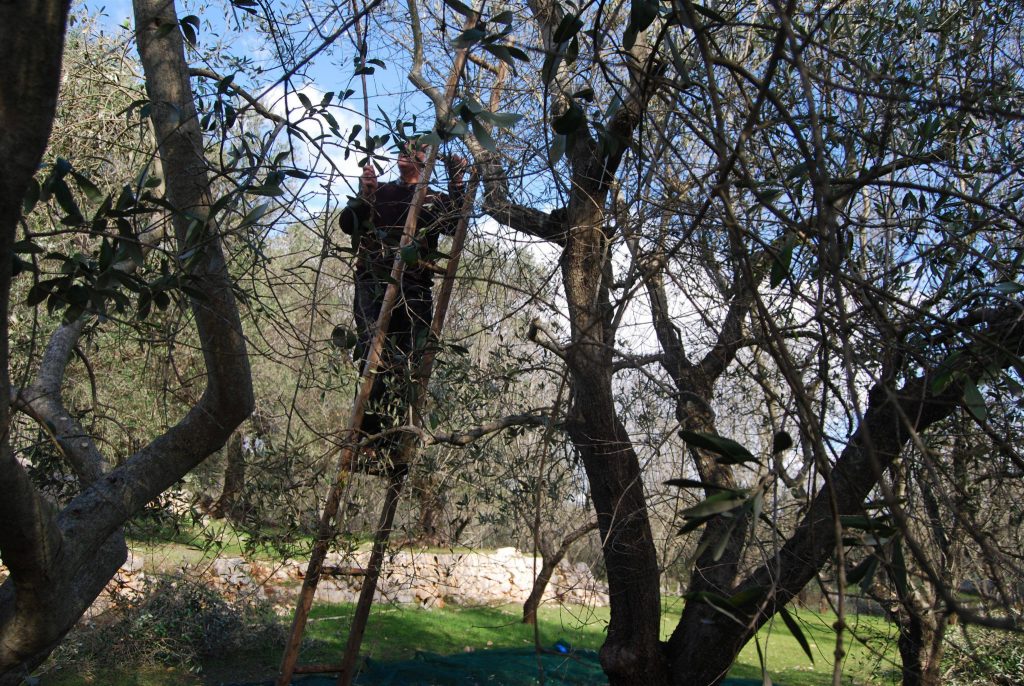
The olives are collected into a net spread underneath the tree being worked. The net is then emptied into tubs. Each tub contains about 30kg of olives. When the trees are heavily laden the tubs can be filled quite quickly. But with a poor crop, the low density of fruit on the trees makes for slow progress, with more work to hit a daily target to take to the press. The short season anyway means working from dawn to dusk - roughly 7am until 5.30pm - every day. It is a pleasant job when the sun is shining, although it can be chilly first thing. Occasionally rain stops olive picking.
Frantoio is the name for an olive pressing establishment, old or new. The examples of a traditional small scale frantoio are now either museums or have been converted into a bar or restaurant - there are many of these throughout Puglia. Nowadays all olive oil pressing is carried out in a modern frantoio, which is a small establishment similar to a dairy. Boccadoro olives are taken to an agricultural cooperative frantoio (one of three communal olive pressing facilities serving Ostuni) within 36 hours maximum from picking, often the same day, to ensure the highest quality olive oil.
Boccadoro olives are from varieties noted for high polyphenol content, which gives the strong fruity/peppery taste. The olives vary in colour from green to purple and even black, depending on their ripeness. They are all suitable for pressing into oil; a proportion of green olives improves quality but reduces the quantity obtained from the press; so a careful balance is required.
At the frantoio olives are all put into large baskets as a specific batch. Each batch is weighed in and then processed individually. Although there are a few large producers of olive oil, who have a batch requiring many baskets, most are relatively small producers.
The frantoio machinery has to be thoroughly washed through between each batch, so a minimum of about 180kg is required each time to make this worthwhile for the frantoio. Getting olives to the press each day (at about 7.30pm) means a lot of work to fill enough tubs!
The frantoio is quietly, efficiently but informally run, its modern, very clean machinery replicating precisely the centuries-old method of oil extraction, "Cold pressing" is essential for extra virgin quality oil, which means low temperatures are used in the processing; and of course nothing is added to artificially increase the amount of oil extracted. Processing involves sieving out any odd leaves and debris; washing the olives at low temperature; pressing them mechanically to extract the oil; and finally removing any residual water via a centrifuge.
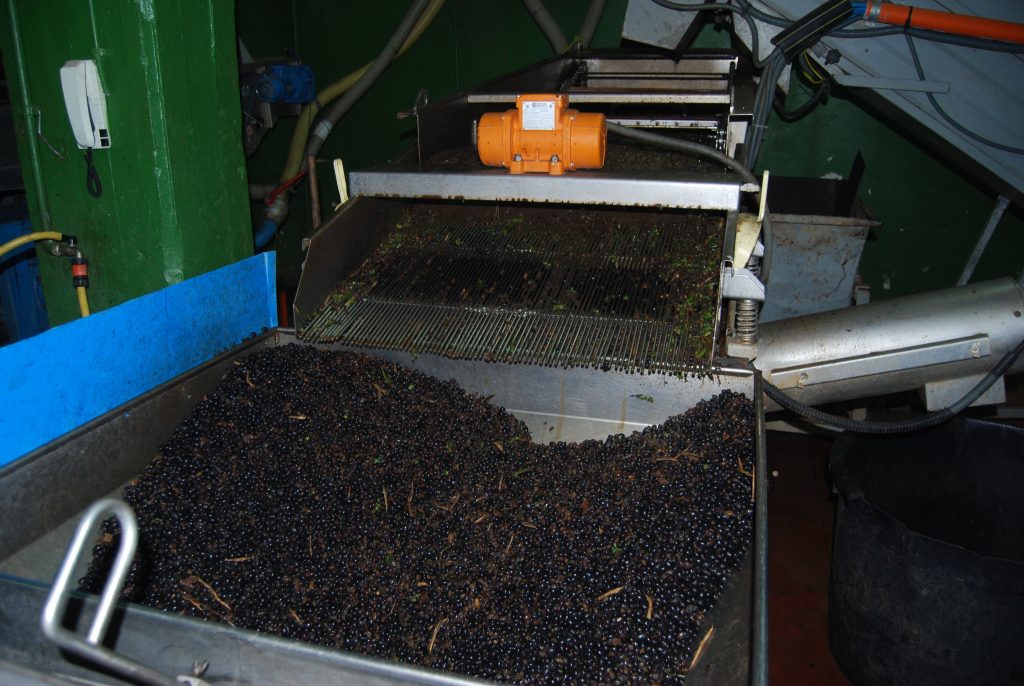
The extracted oil is put into containers to be picked up from the frantoio, usually the following day, together with details of the amount of oil produced from the batch and of its acidity measurement. So oil is linked to specific batches and to specific trees tackled the day or so previously! We have in recent years started to harvest in October and define the oil produced from olives picked in October as "early harvest" (NB there is a semi-offcial definition of "early harvest" oil as from olives picked in October-November). The early harvest oil is pressed and bottled immediately. It is especially rich in nutrients and polyphenolsdue to the high proportion of unripe olives. because it is not filtered or allowed to settle, early harvest oil is cloudy in the bottle from the minute particles of fruit. Other oil is stored in stainless steel containers for 6 months or more. This allows the olive particles to settle, and the clear oil above the sediment is then decanted and bottled (or put into tins)
We do all the bottling and labelling, and organise shipment to the UK ourselves (rather a complicated process now that the UK is outside the EU) where the oil is sold online and posted by us to customers. Almost uniquely we and our family members are personally and directly involved with the whole process, from the tree to the customer. Recently, in order to maintain consistency of supply as sales and our customer base has expanded, we have become associated with the frantoio to allow us to supplement stock from our own harvest with the highest quality oil produced by traditional controlled methods in the Ostuni neighbourhood and pressed by the frantoio. However, this arrangement involves only clear oil (we market this as Crystal) which has been stored for 6 months or more in approved conditions before being decanted into our containers.
Unlike wine, which takes a year or more to mature, olive oil is ready to consume instantly. Puglia Passion sells its oil under the name Boccadoro - this the official name of the country area of Ostuni where Puglia Passion is based. Boccadoro appropriately means "mouth of gold".
Boccadoro olive oil is absolutely top quality Extra Virgin - free acidity usually 0.4% or below (the maximum to qualify as "extra virgin" is 0.8%); fruity and peppery in taste. This is achieved by a combination of traditional hand picking, high quality fruit, rapid pressing after picking and processing in an approved frantoio (low temperature, no chemicals, no additives, no filtration). It is sold in 500ml bottles, 3 litre cans and 5 litre cans. If anyone wants more detail about the oil we sell, go to the Boccadoro website, You can sign up to the Boccadoro newsletter via the form below.
